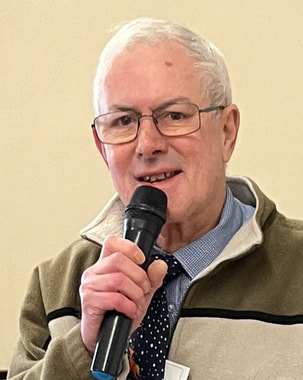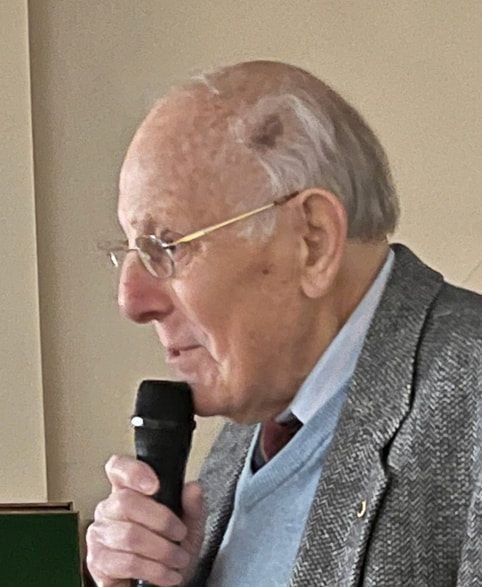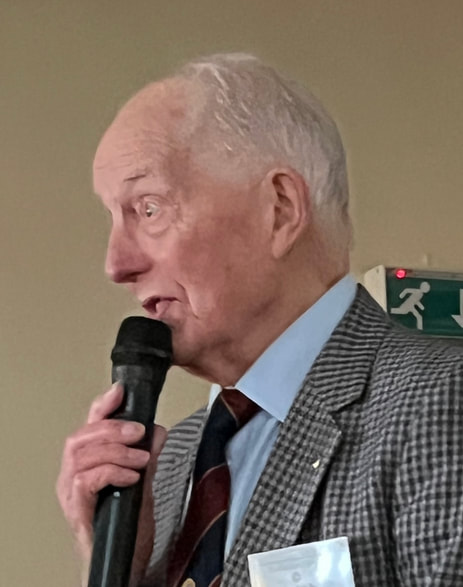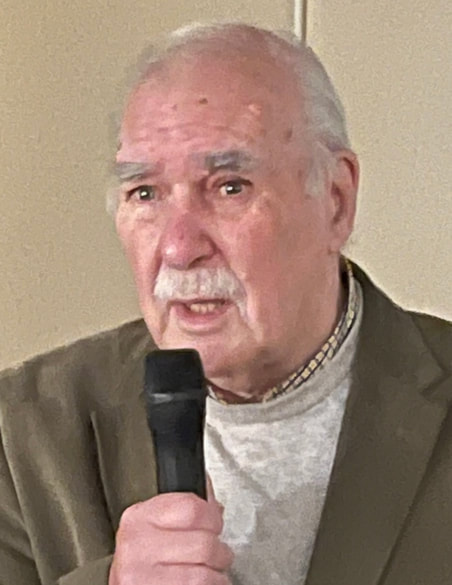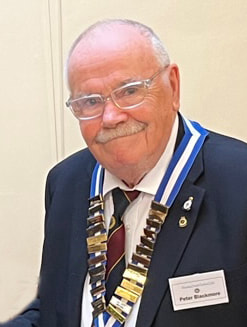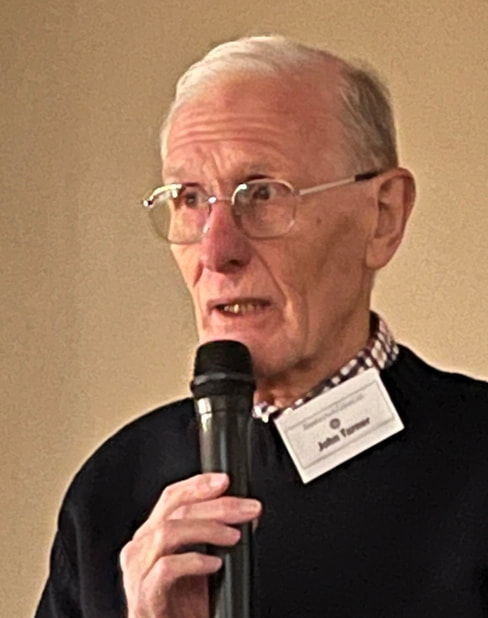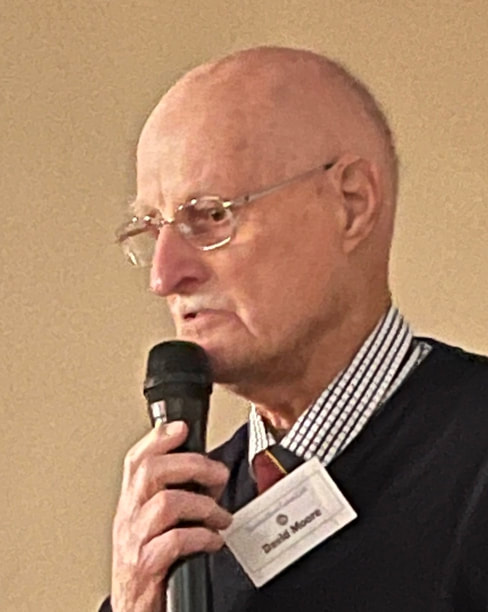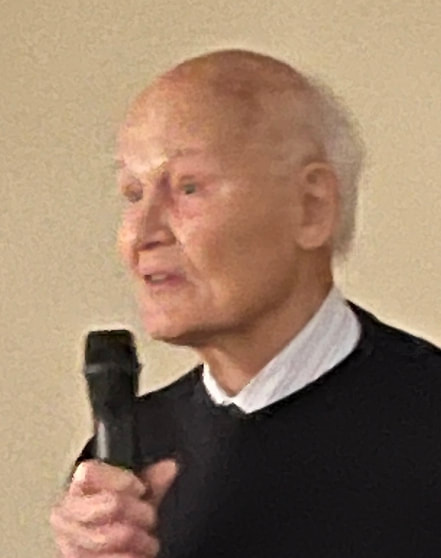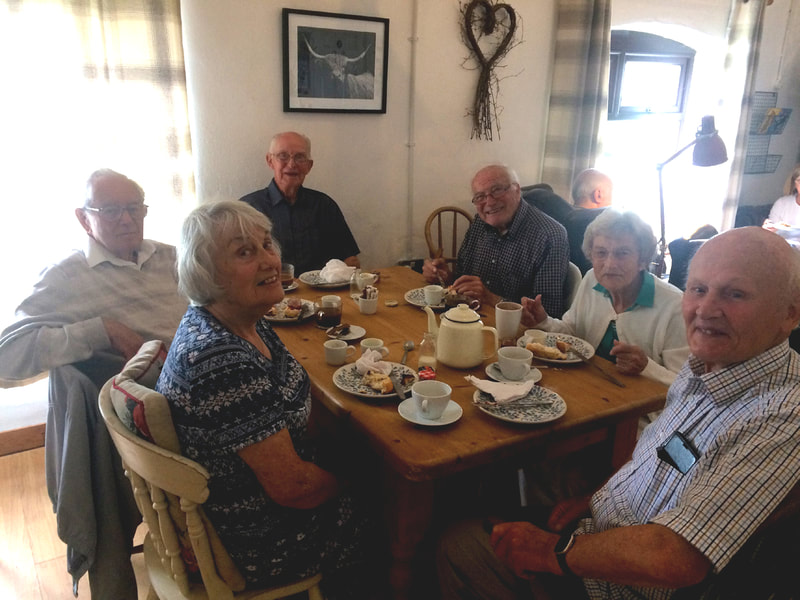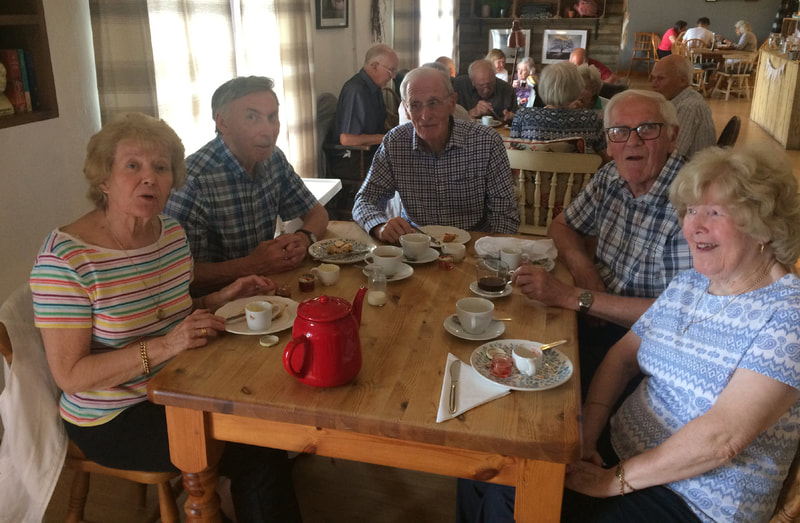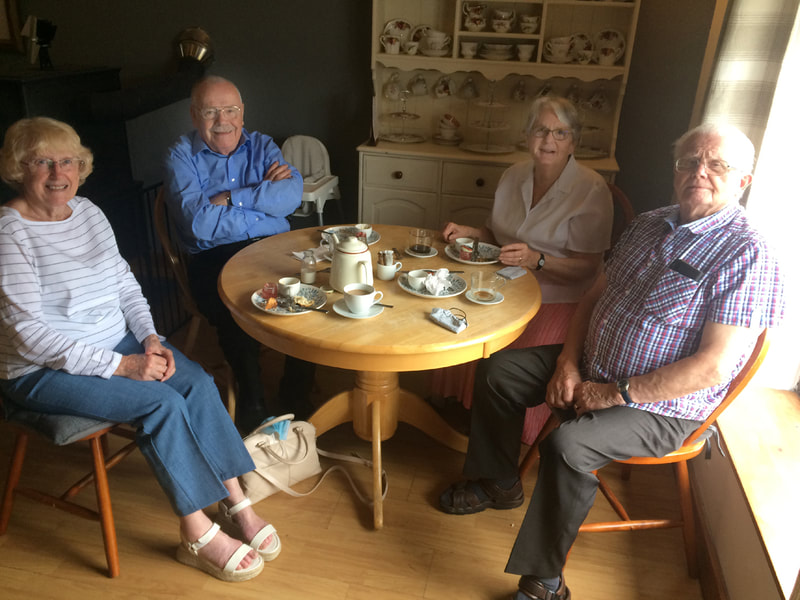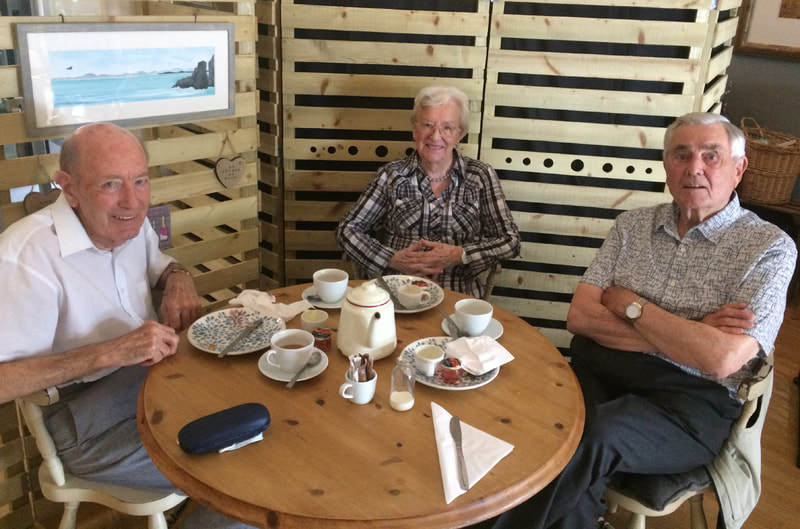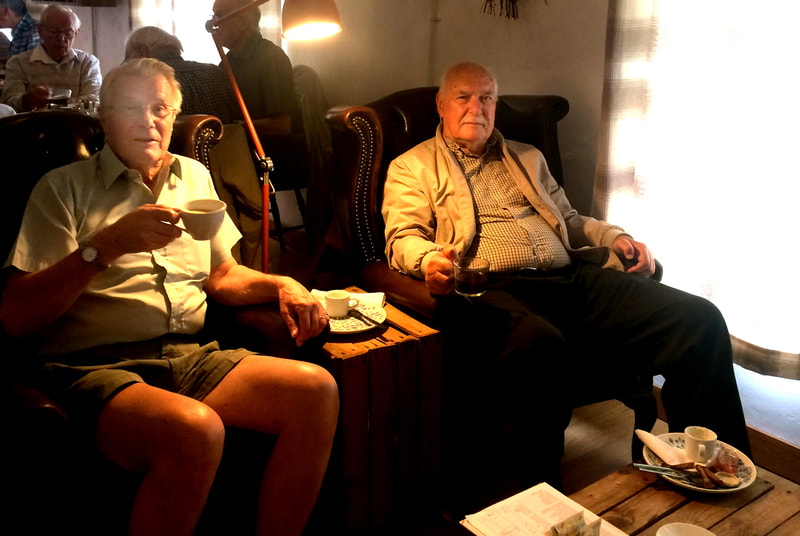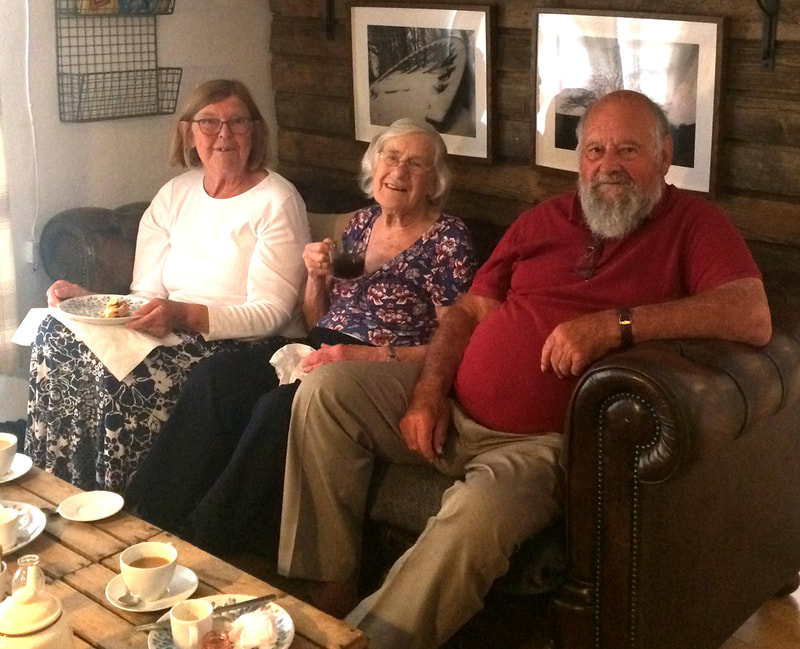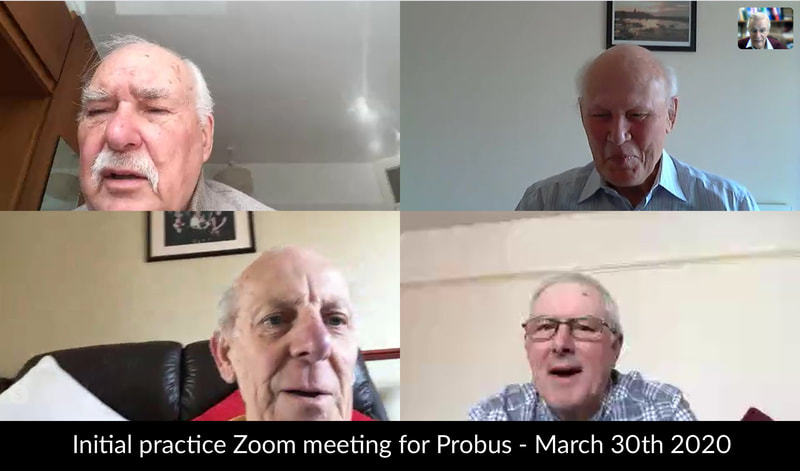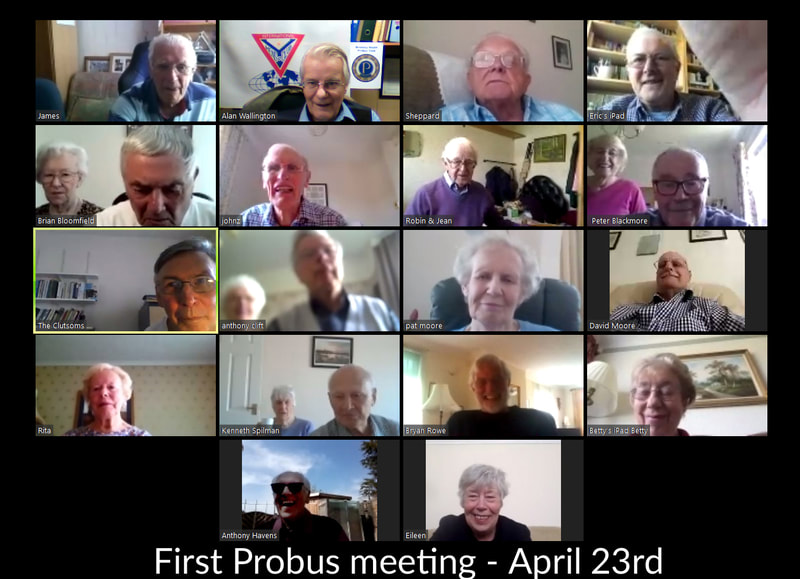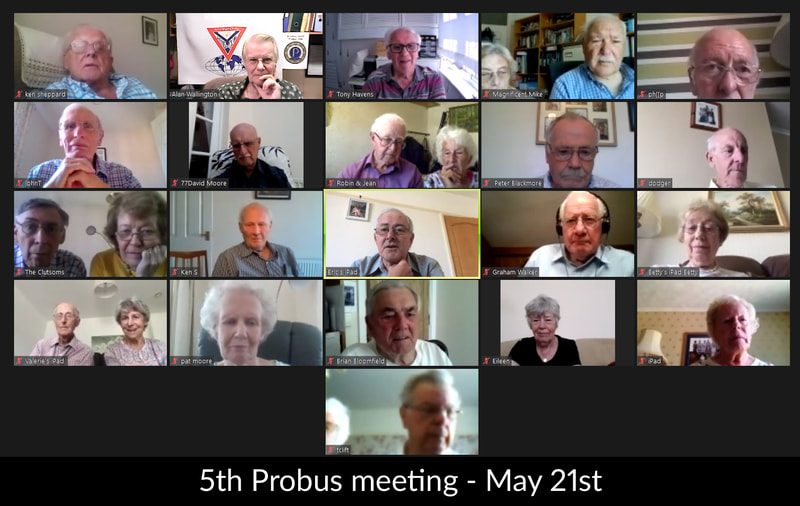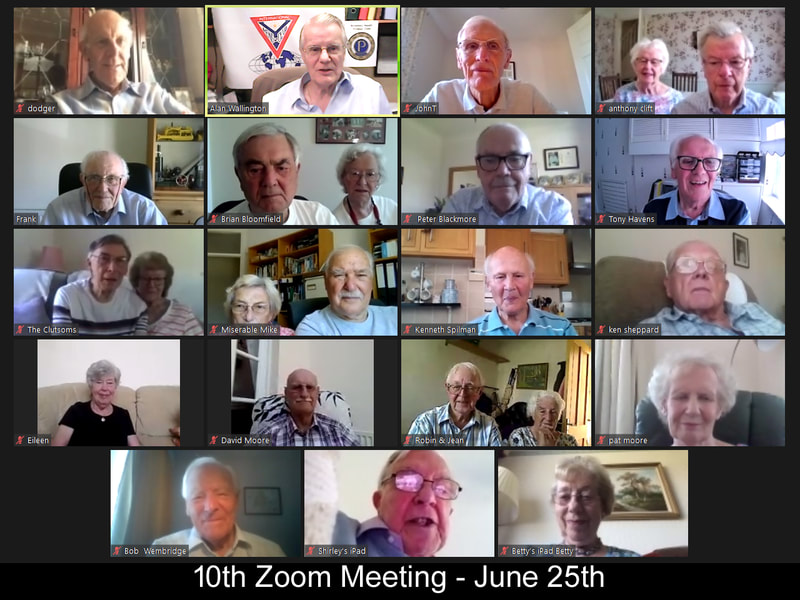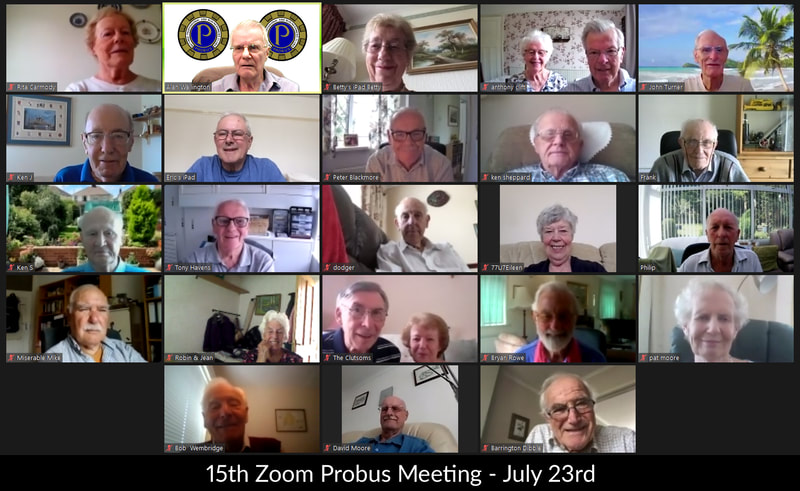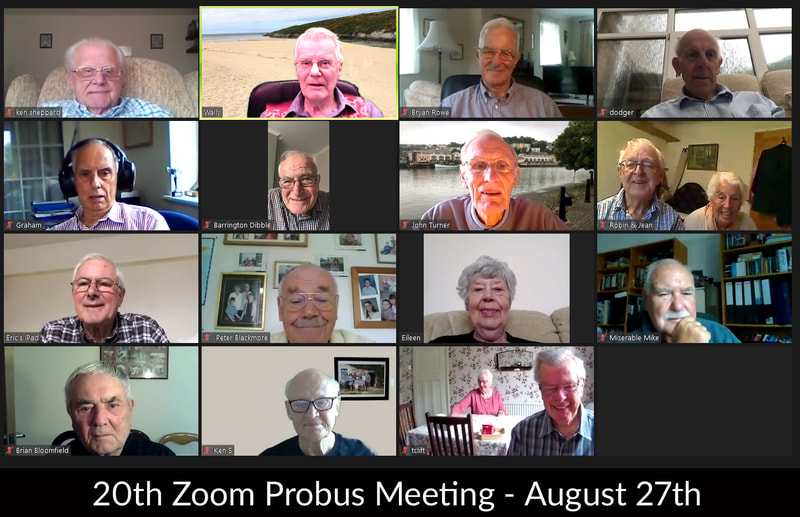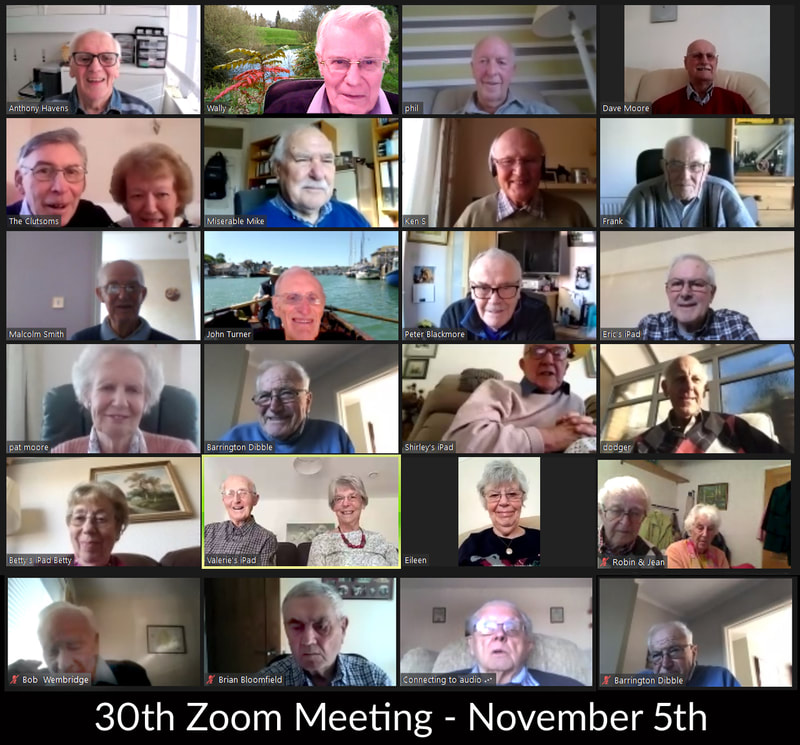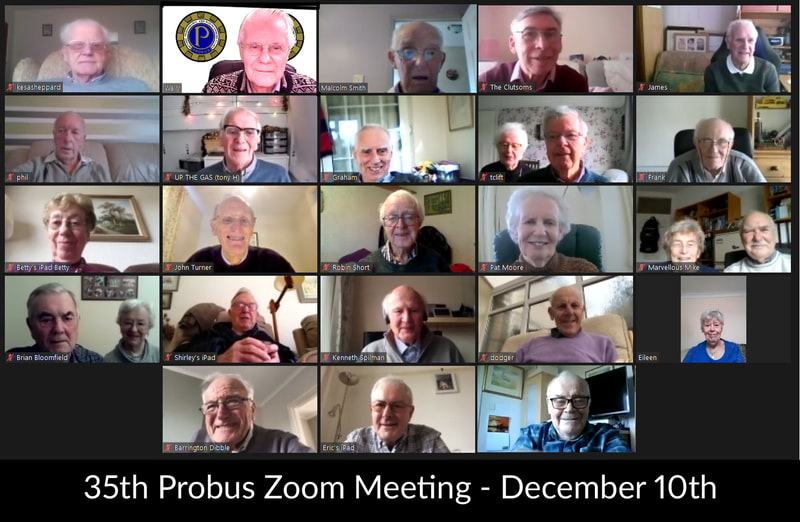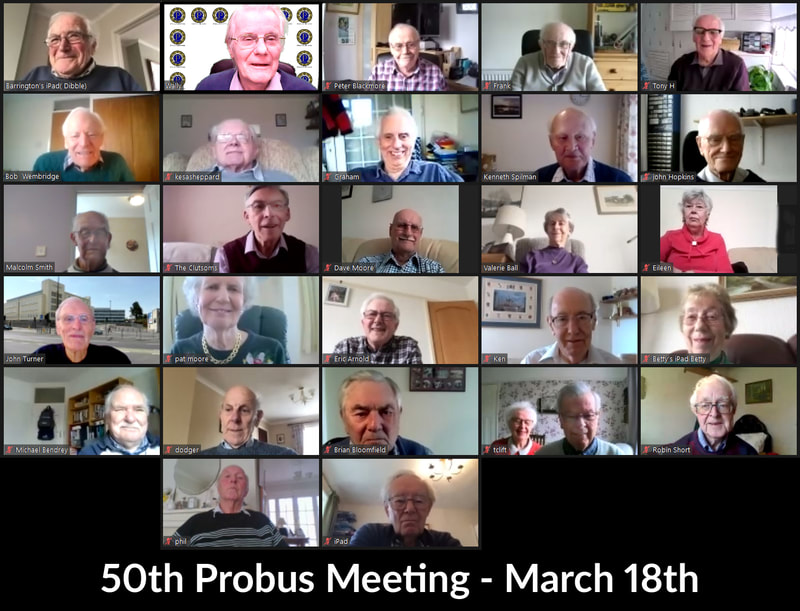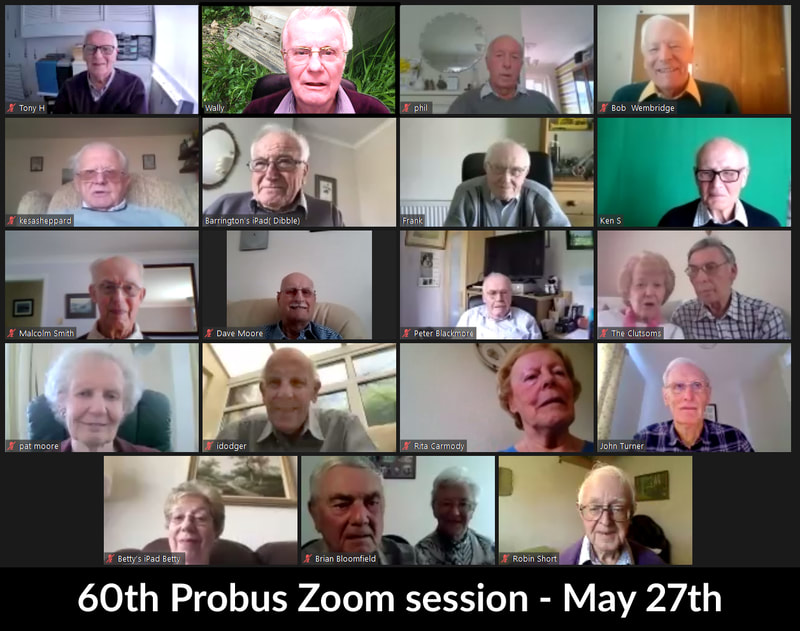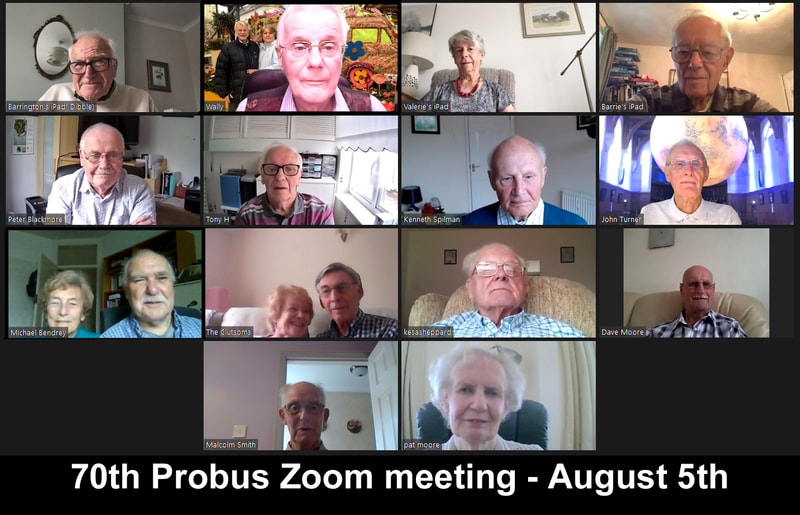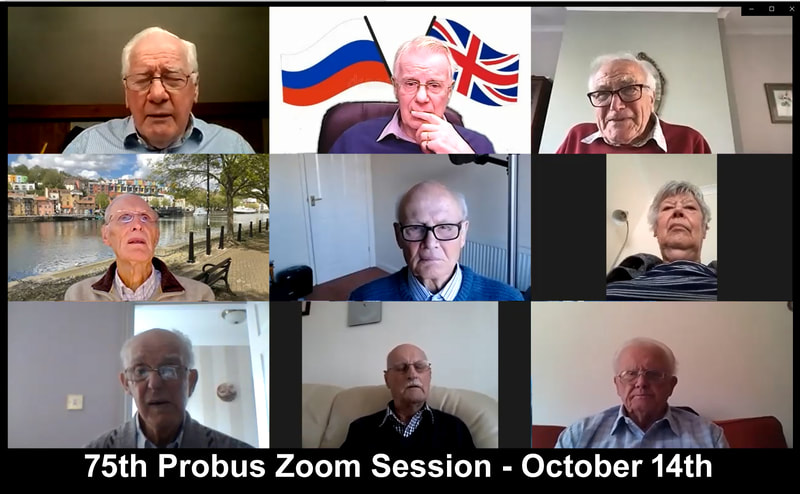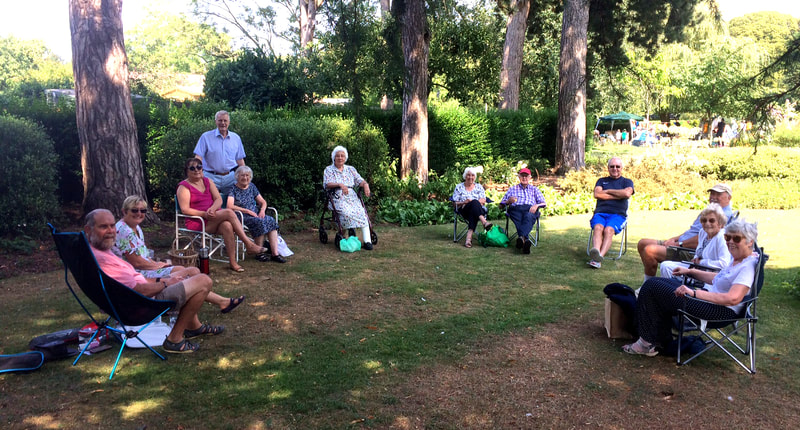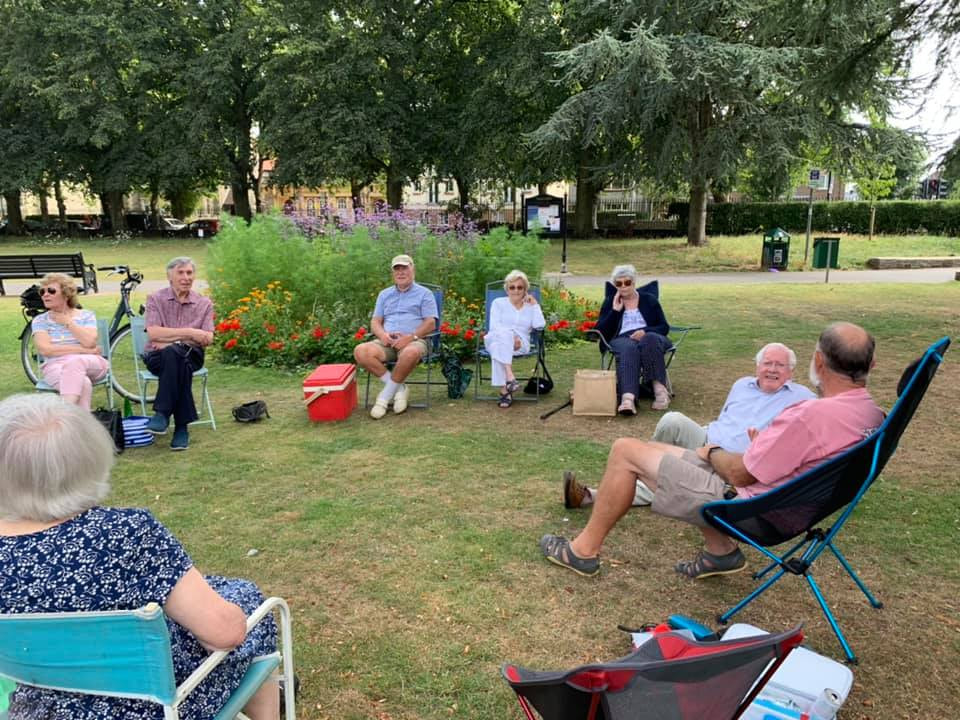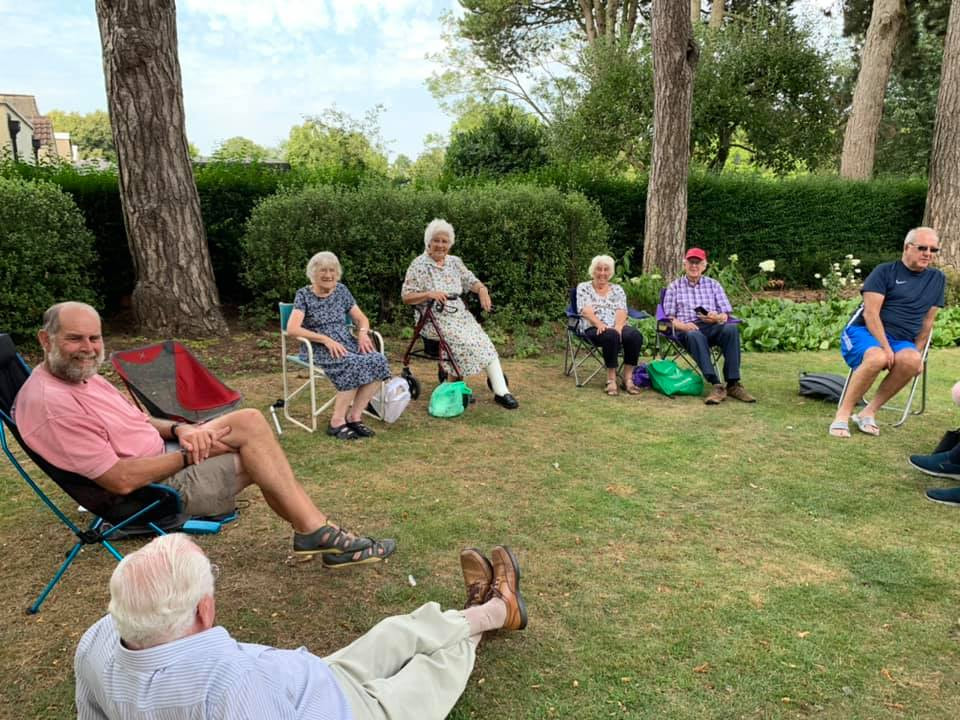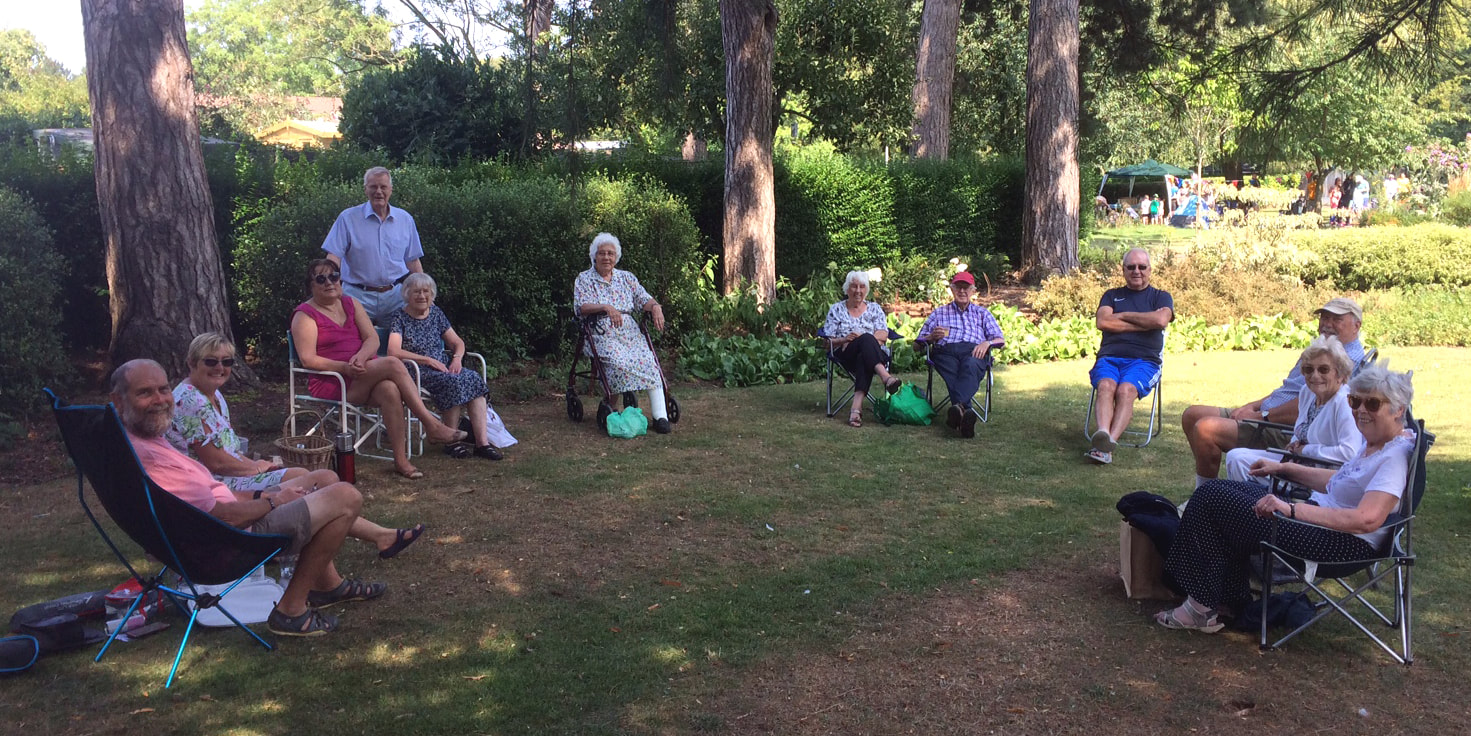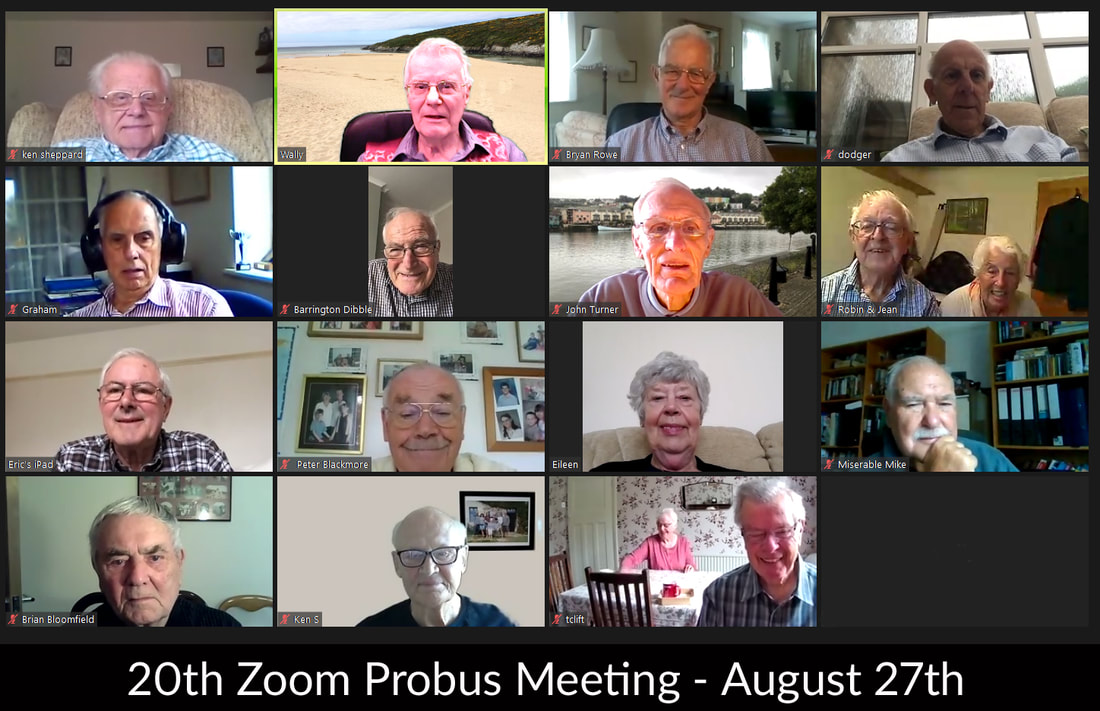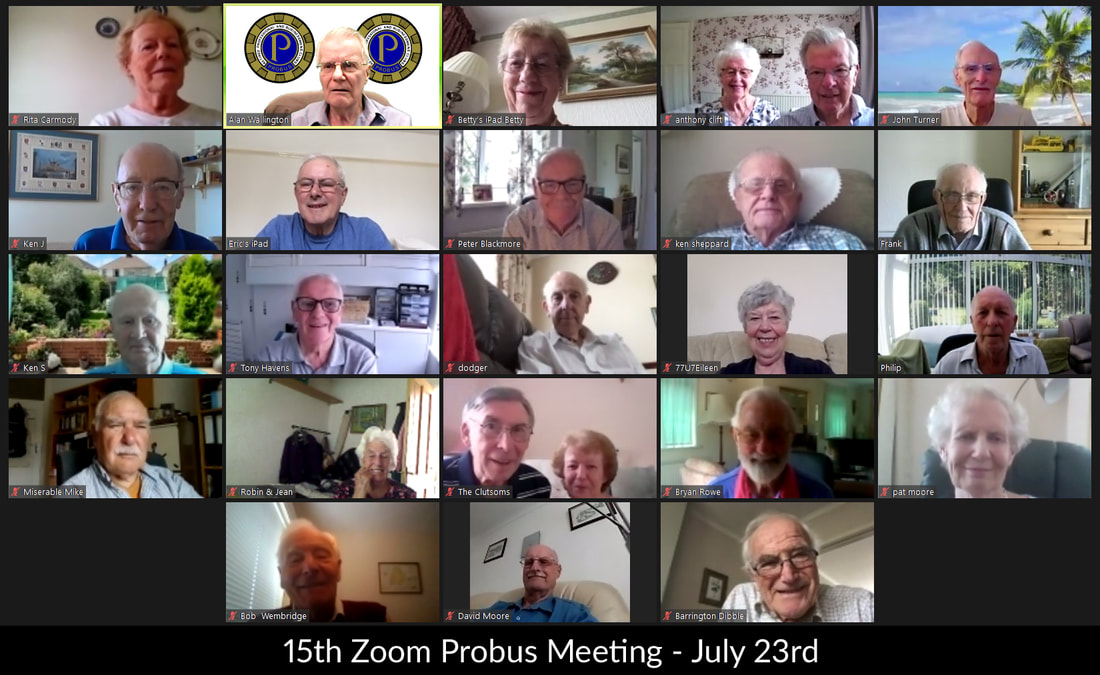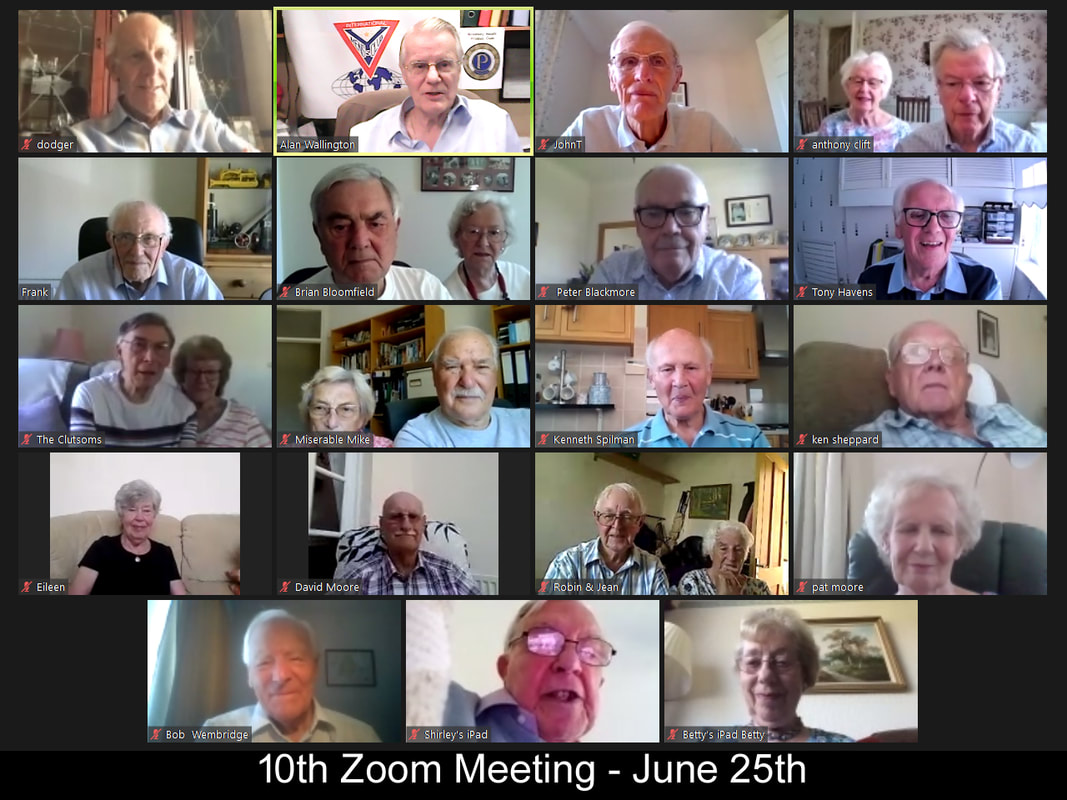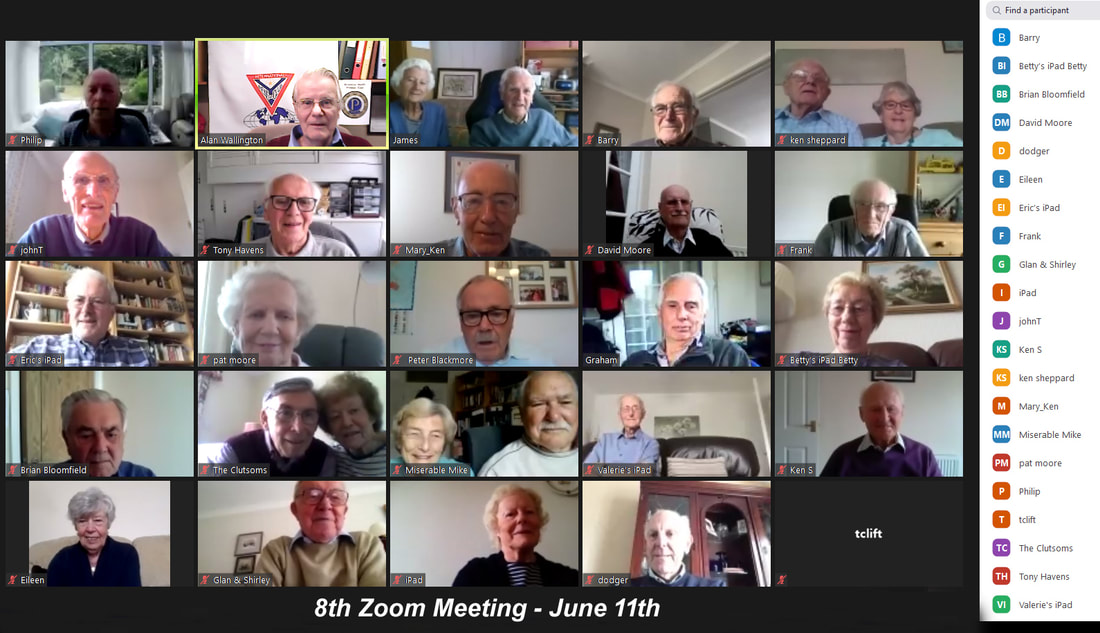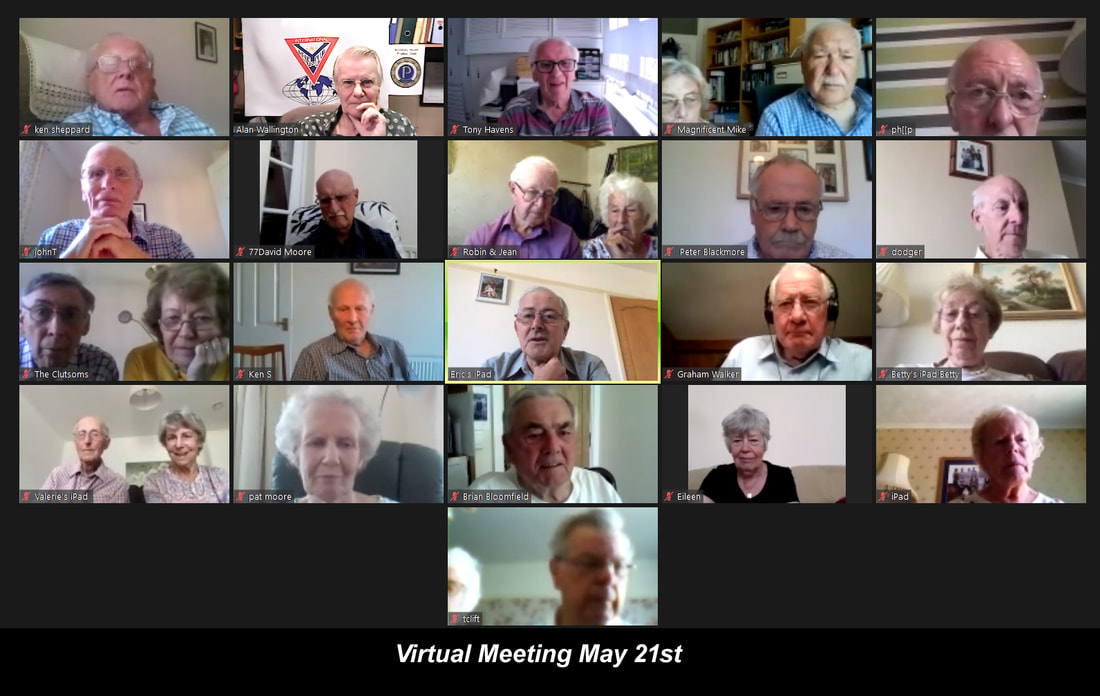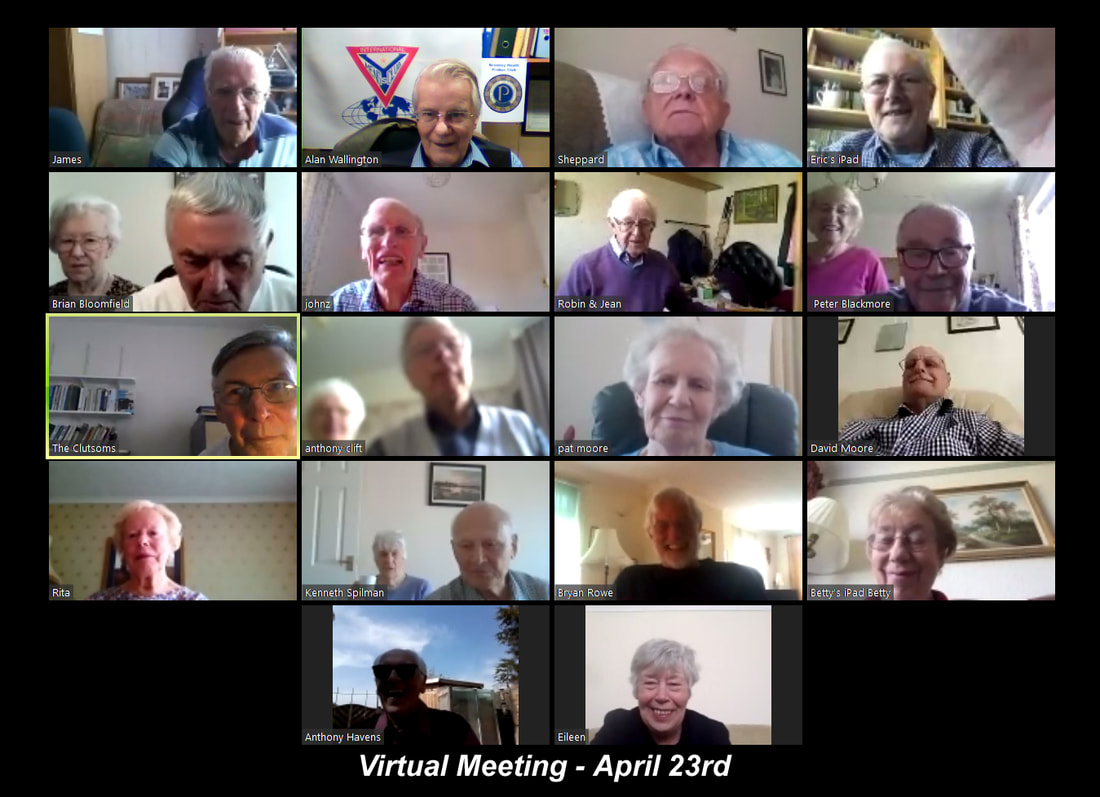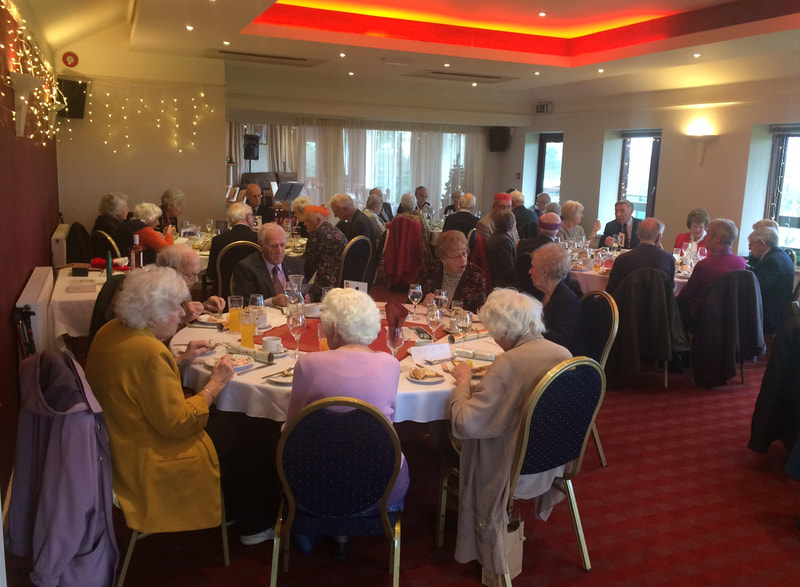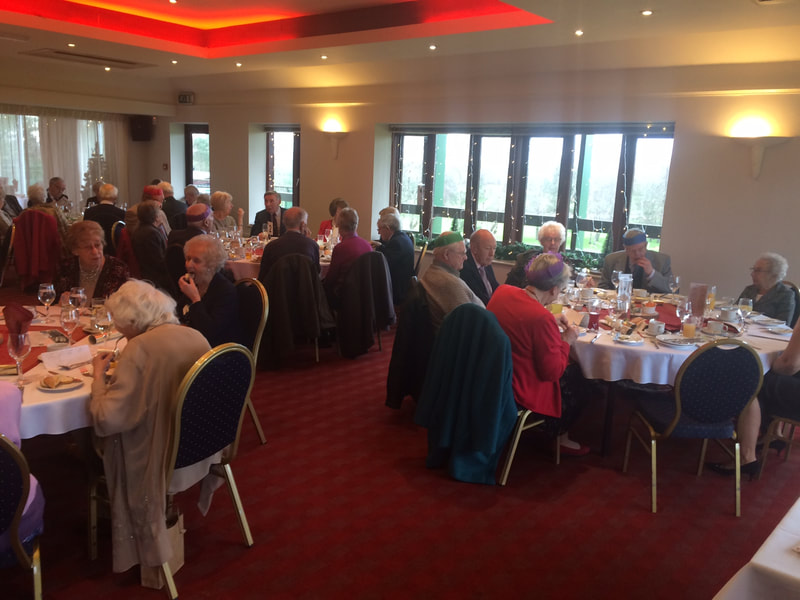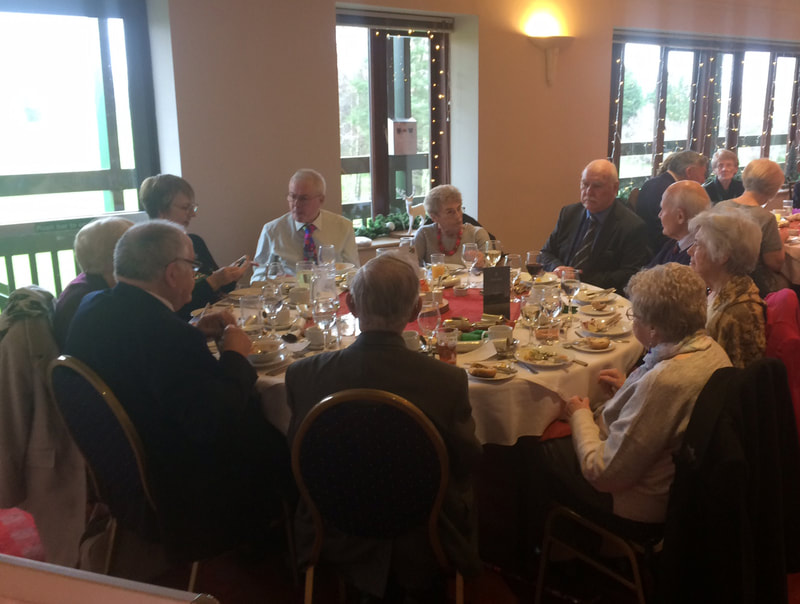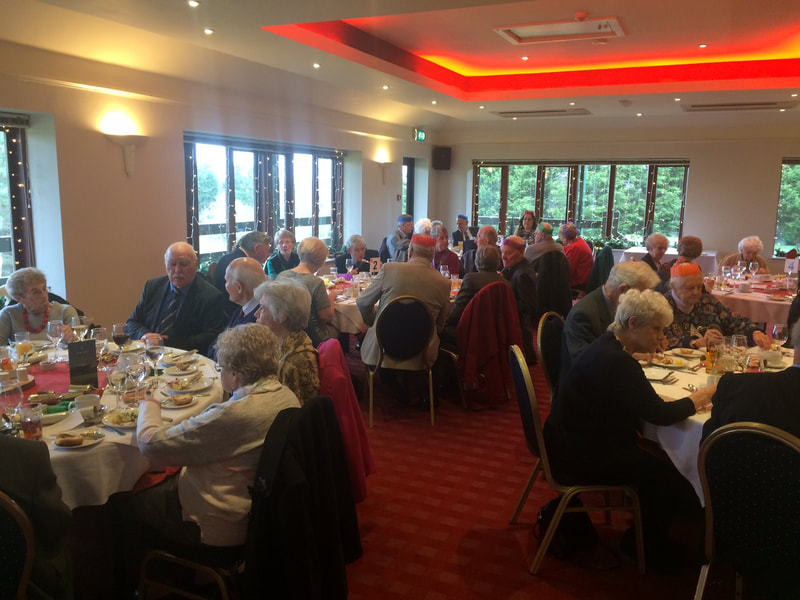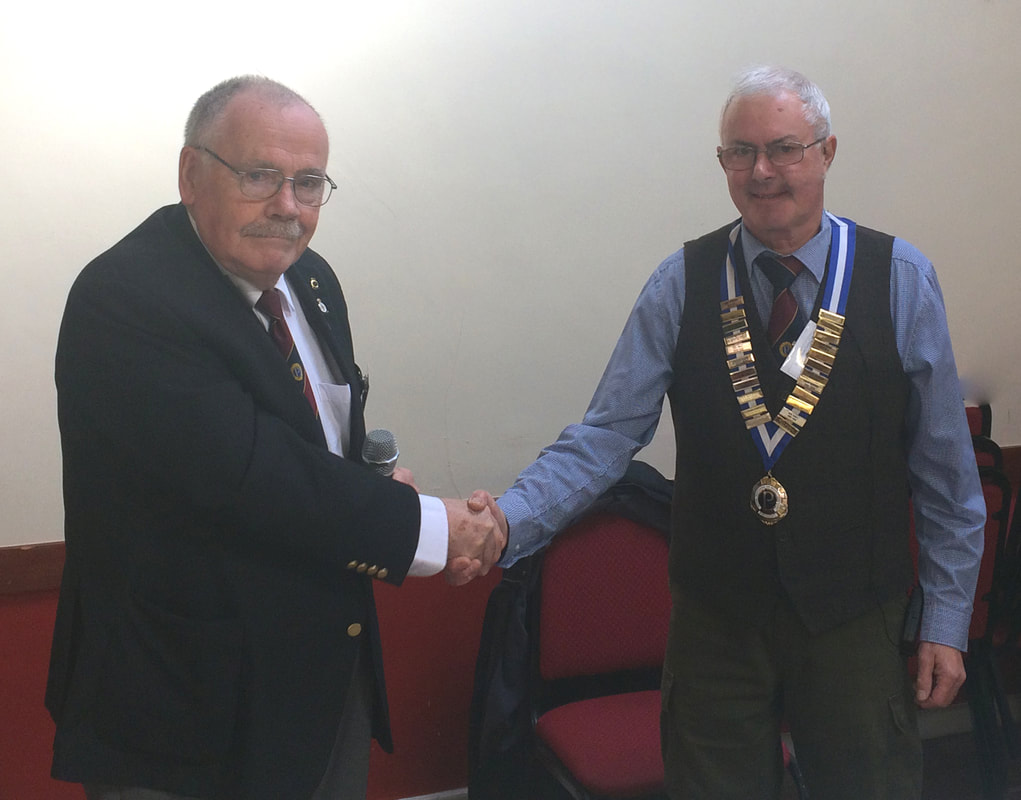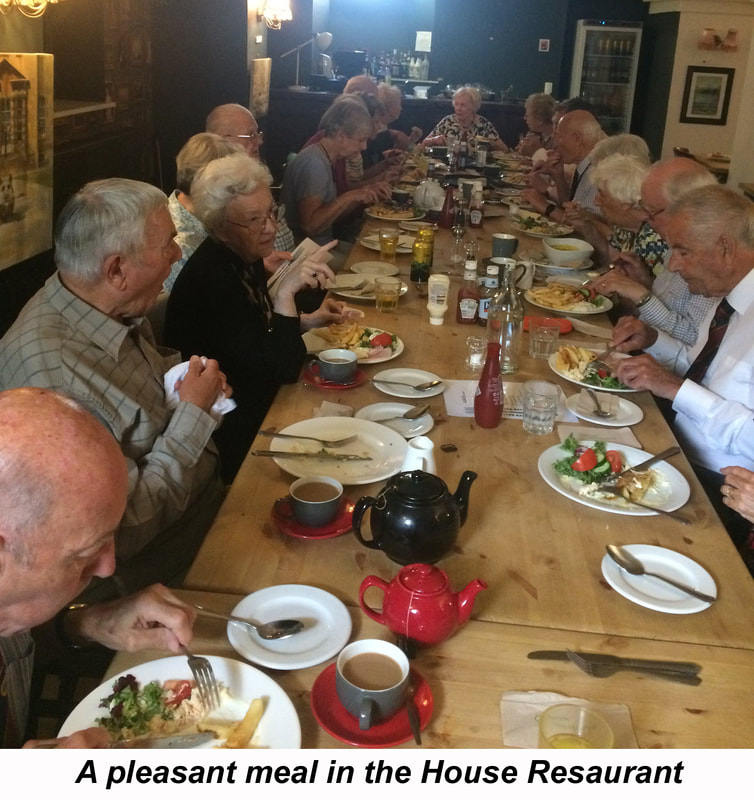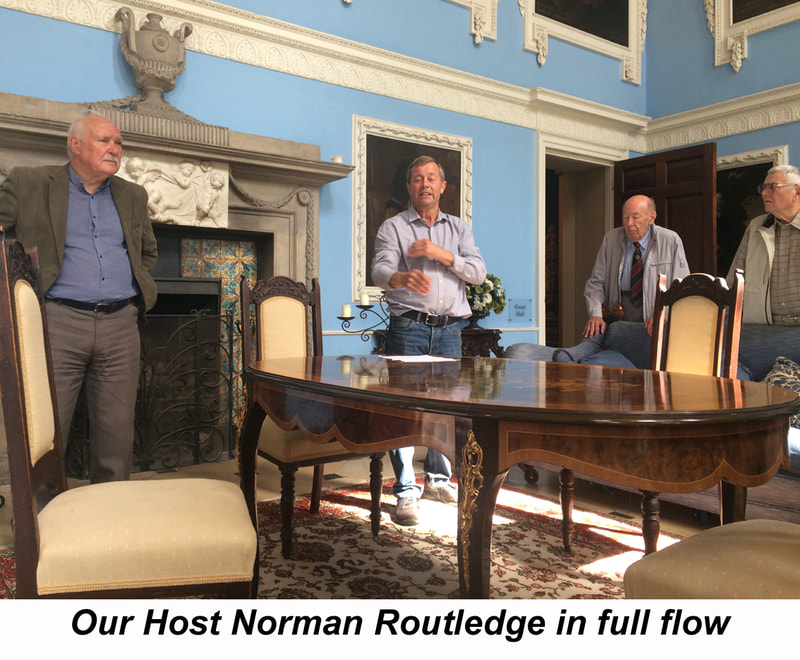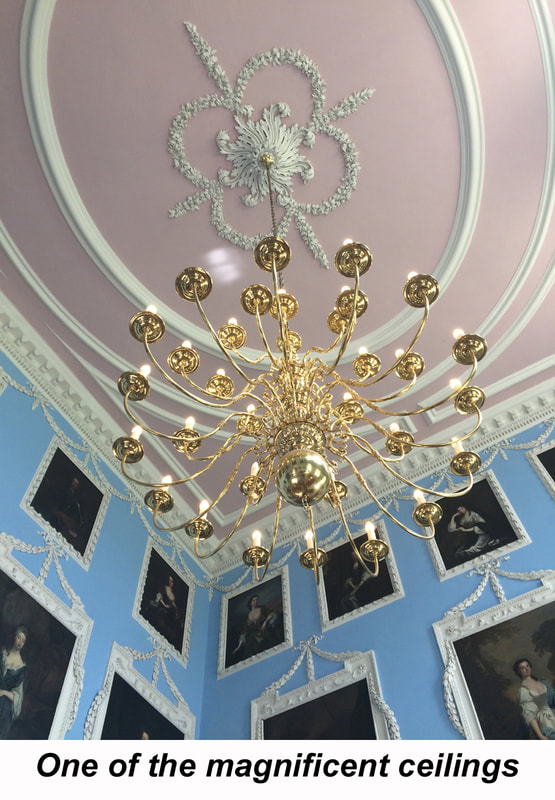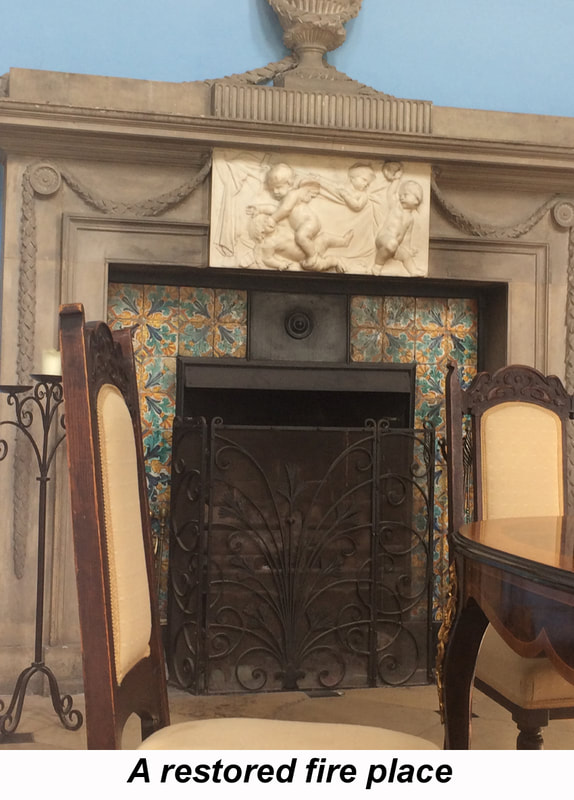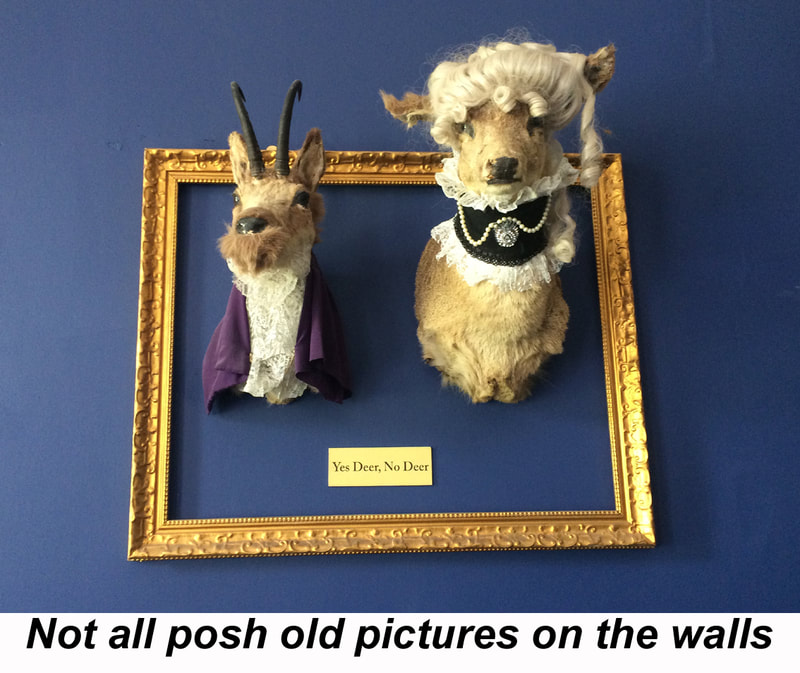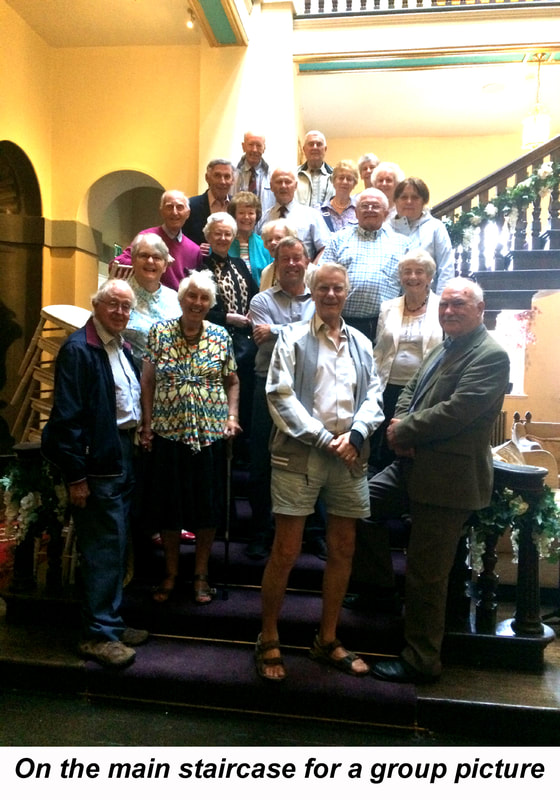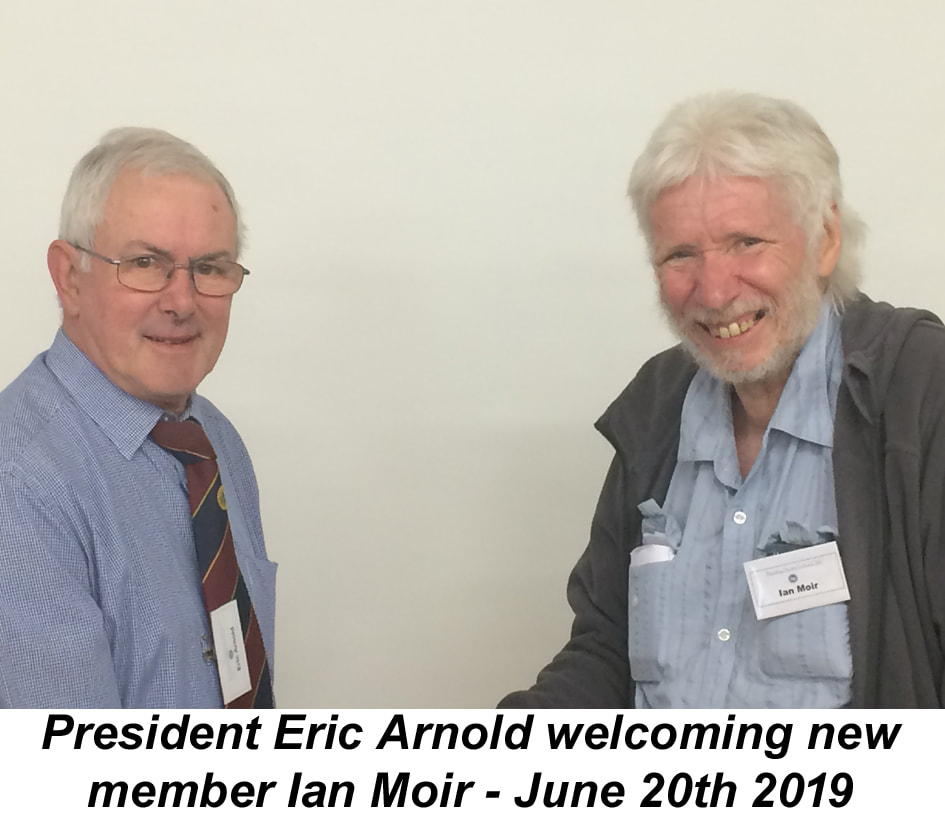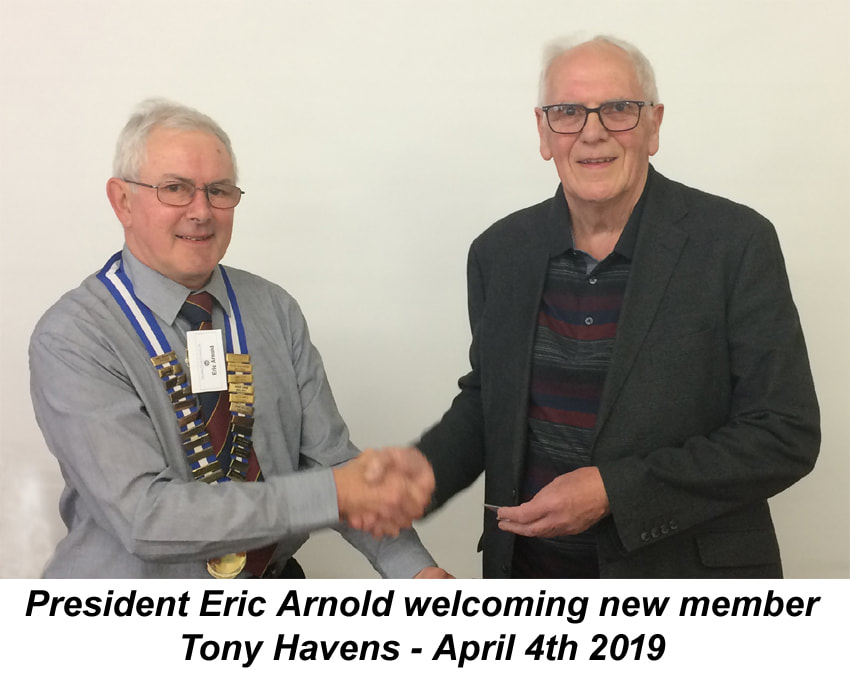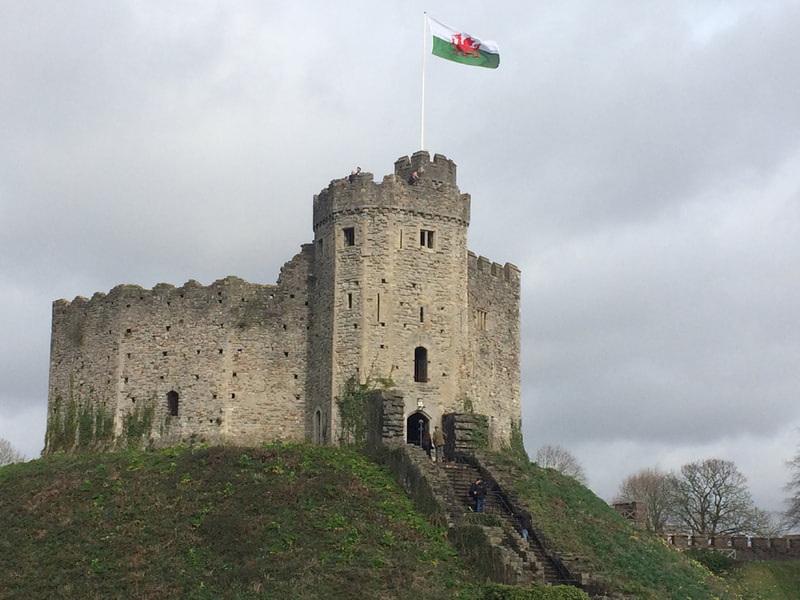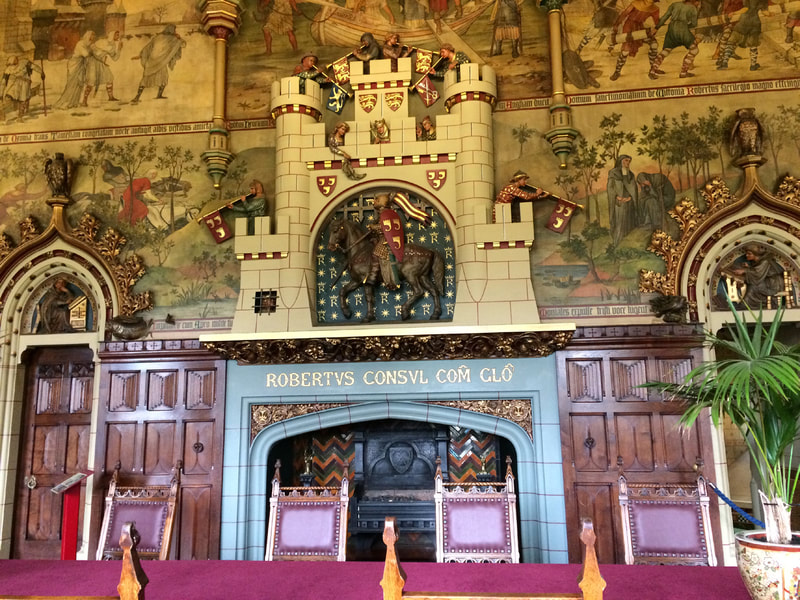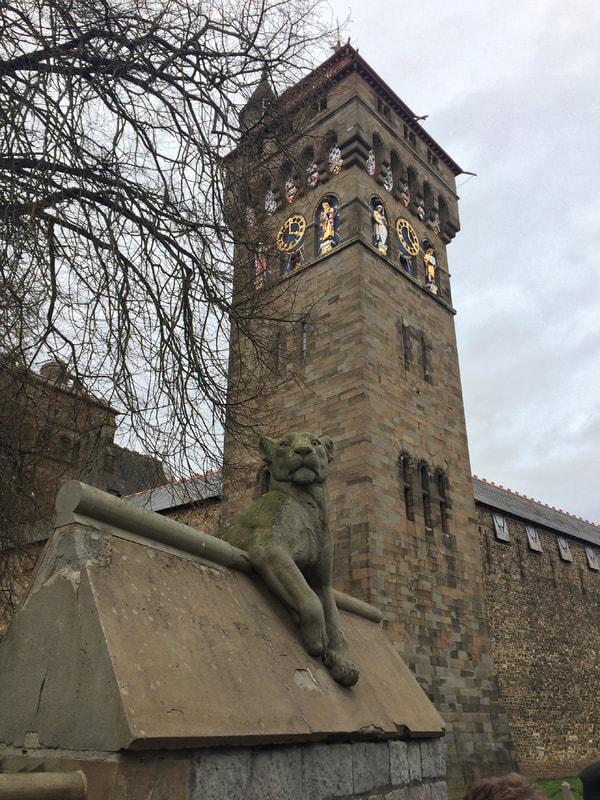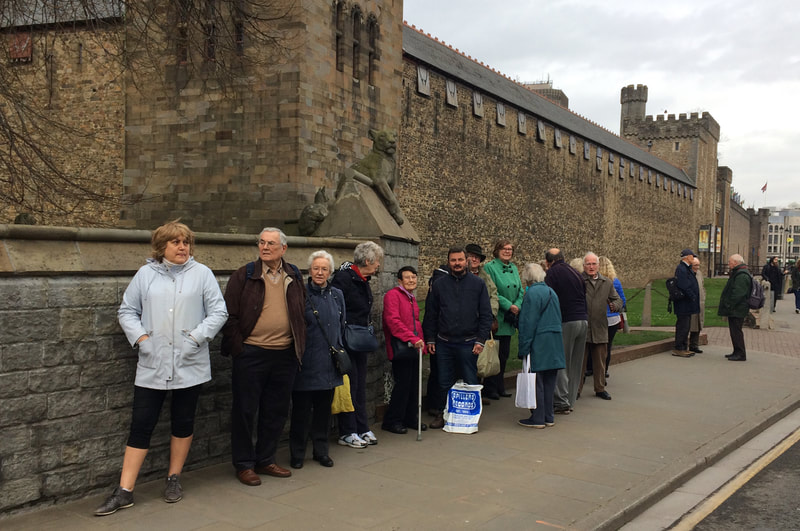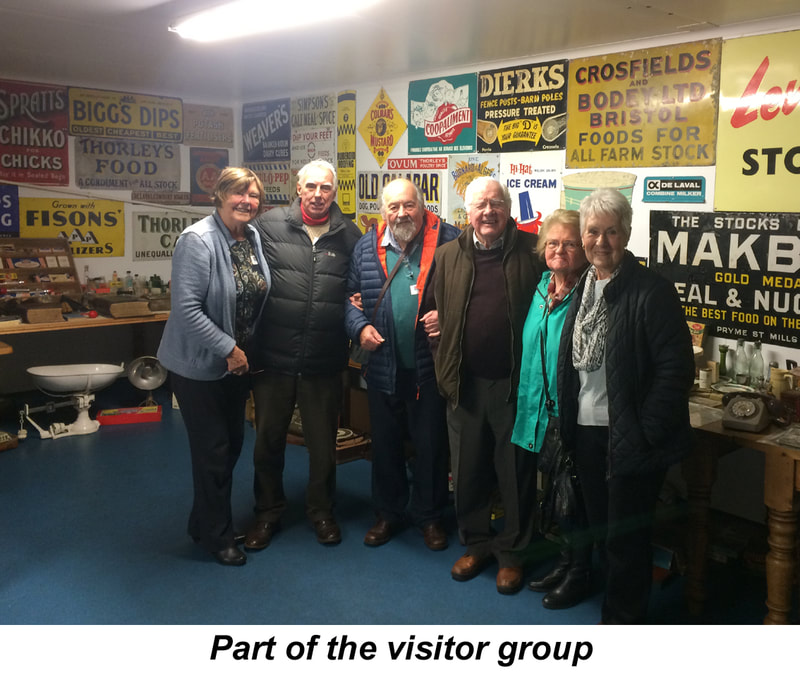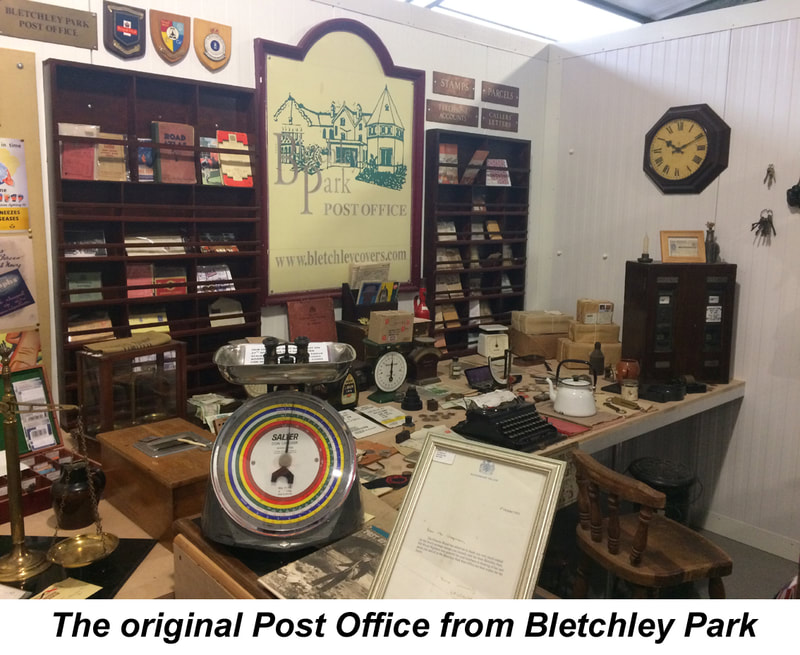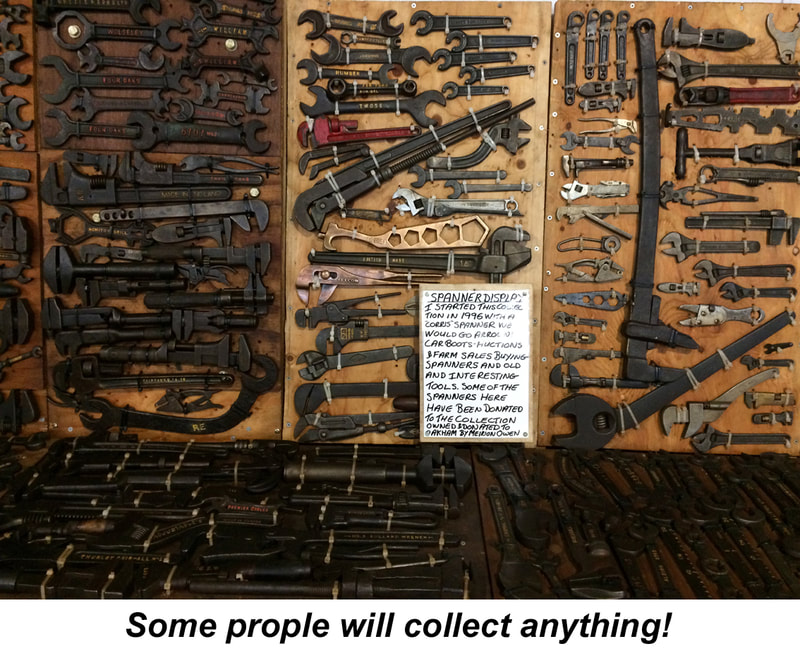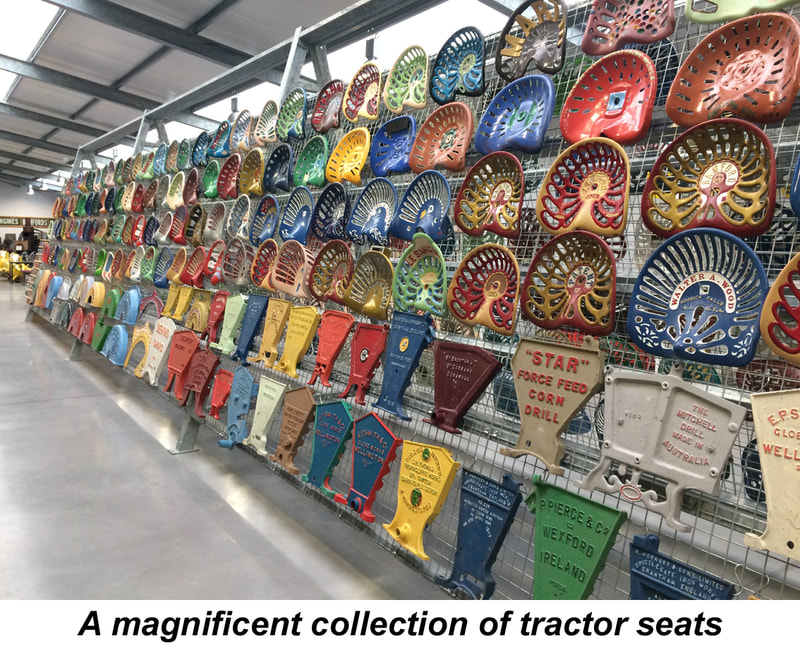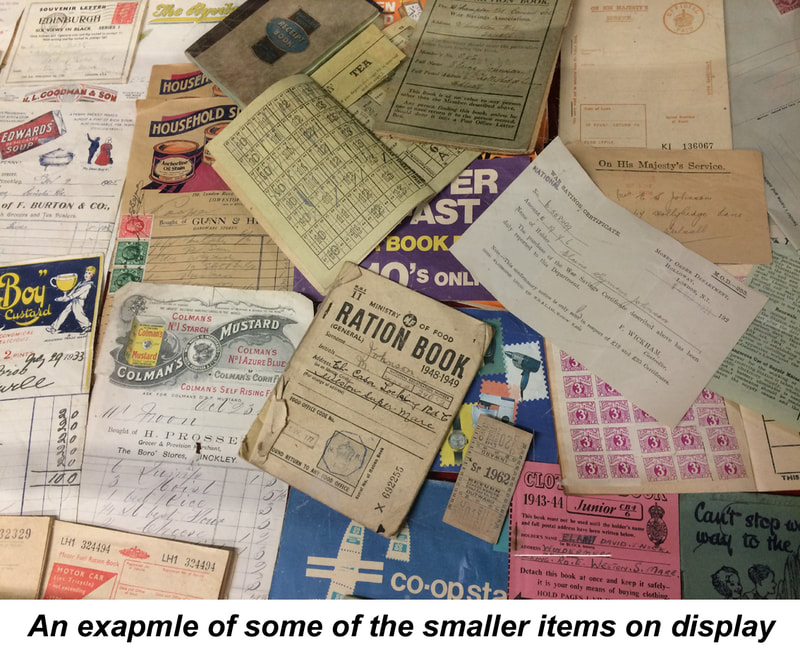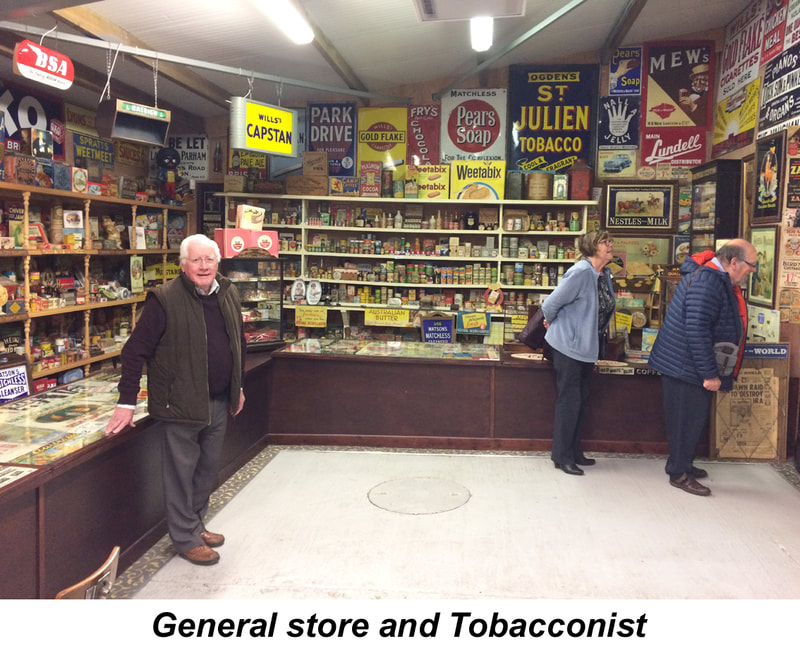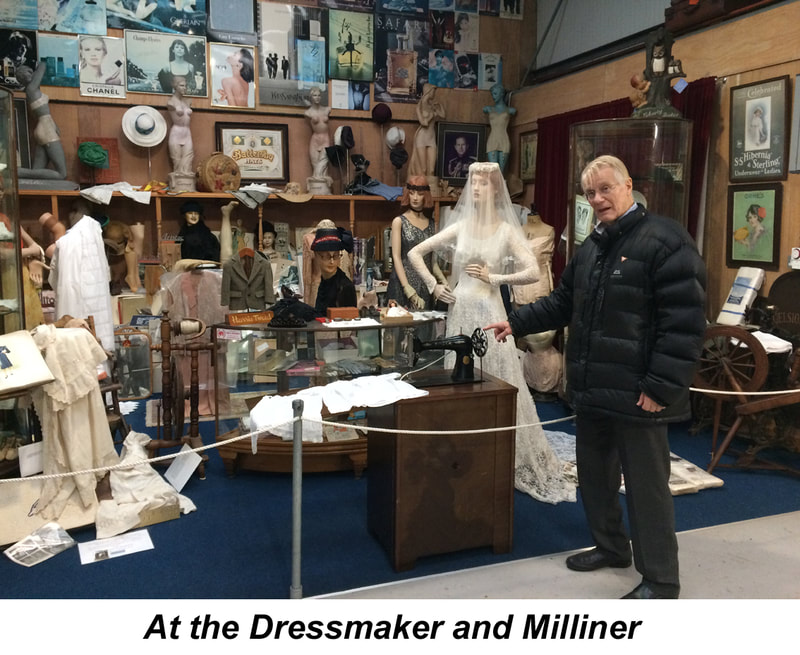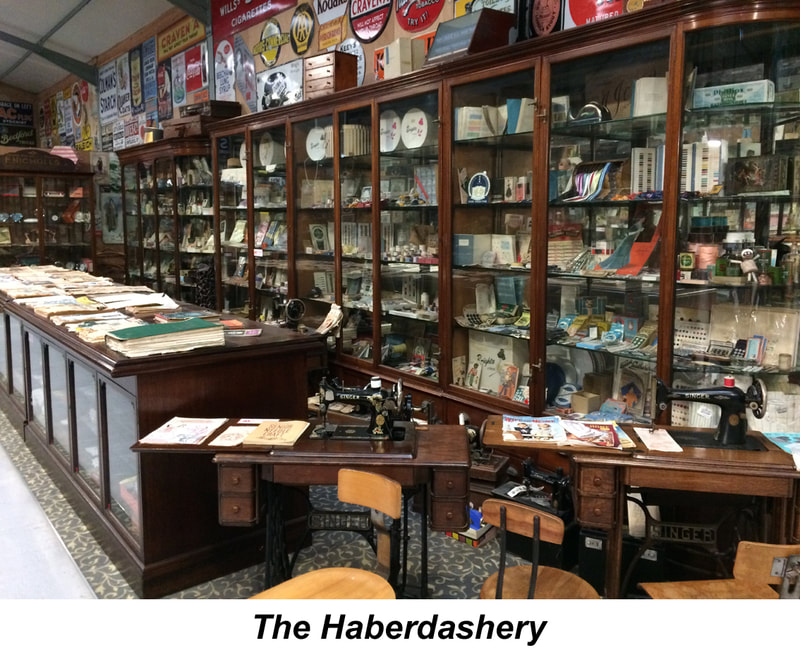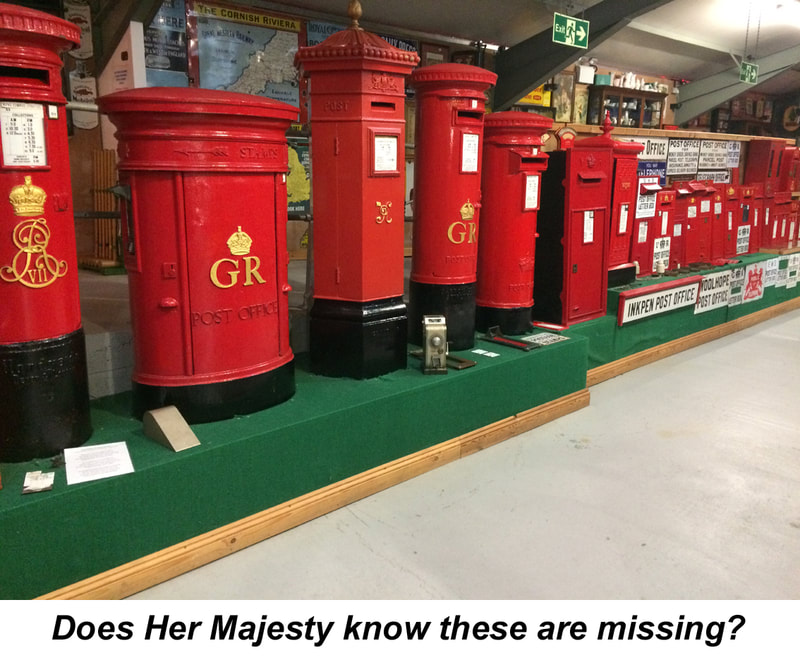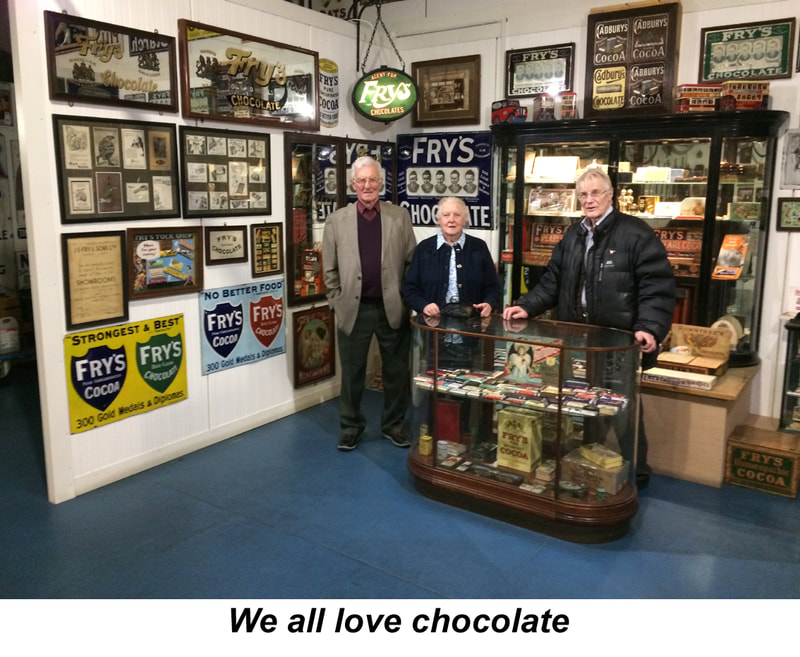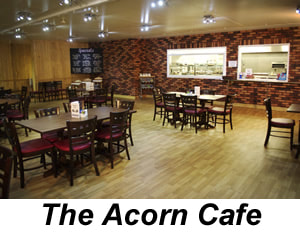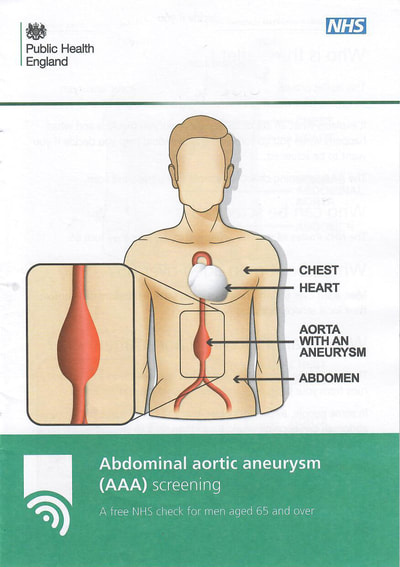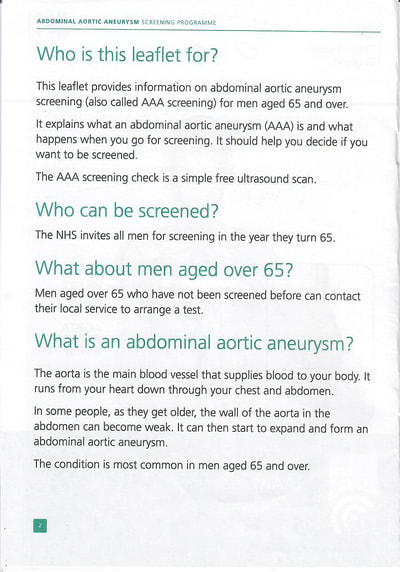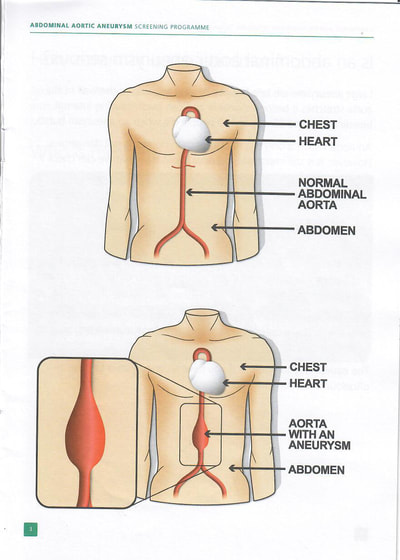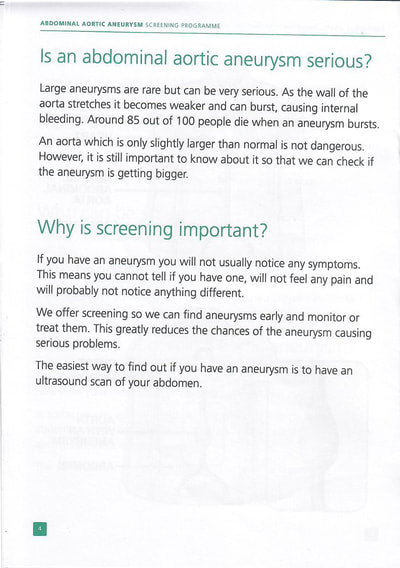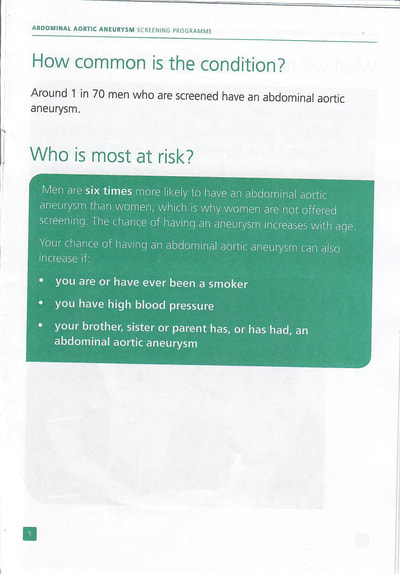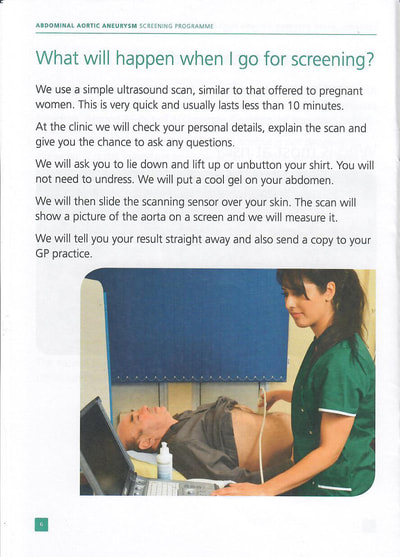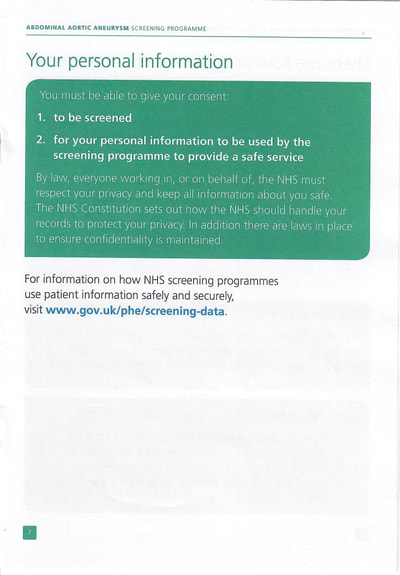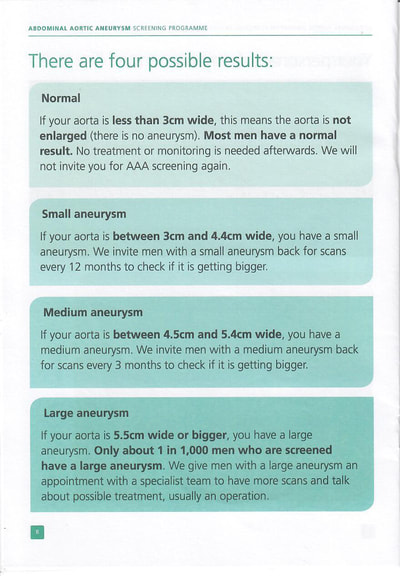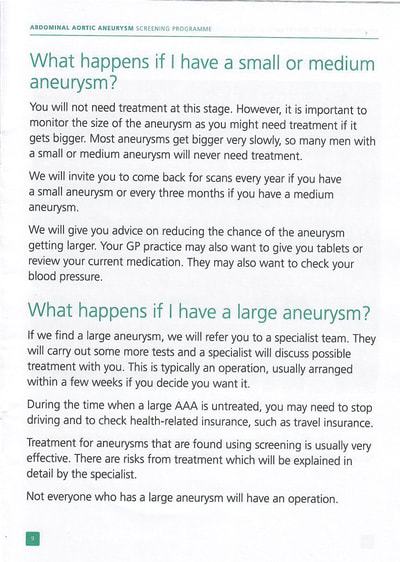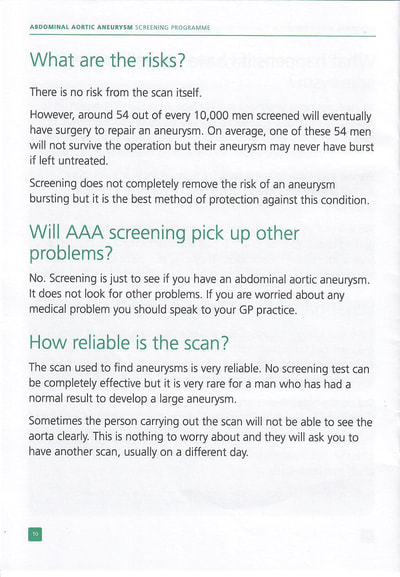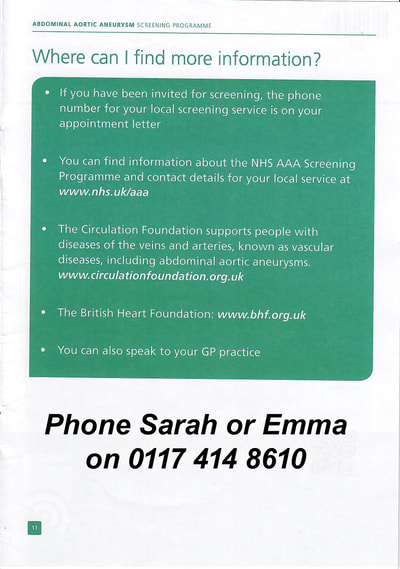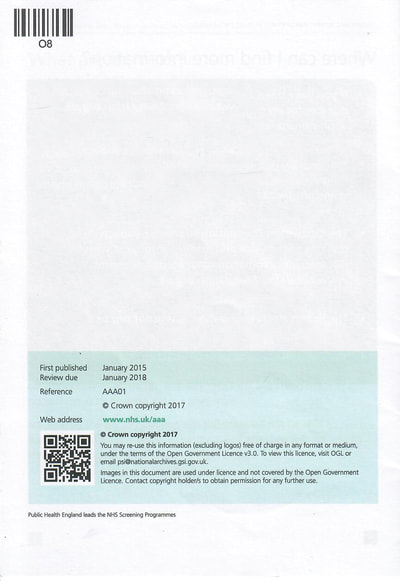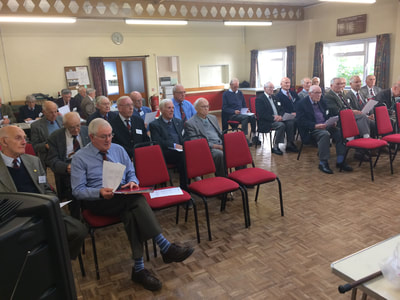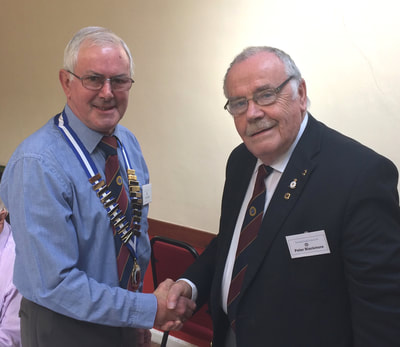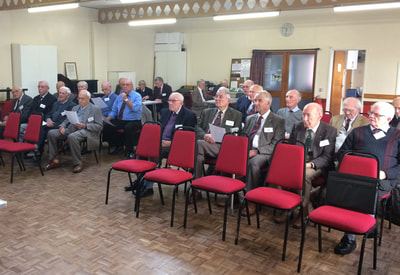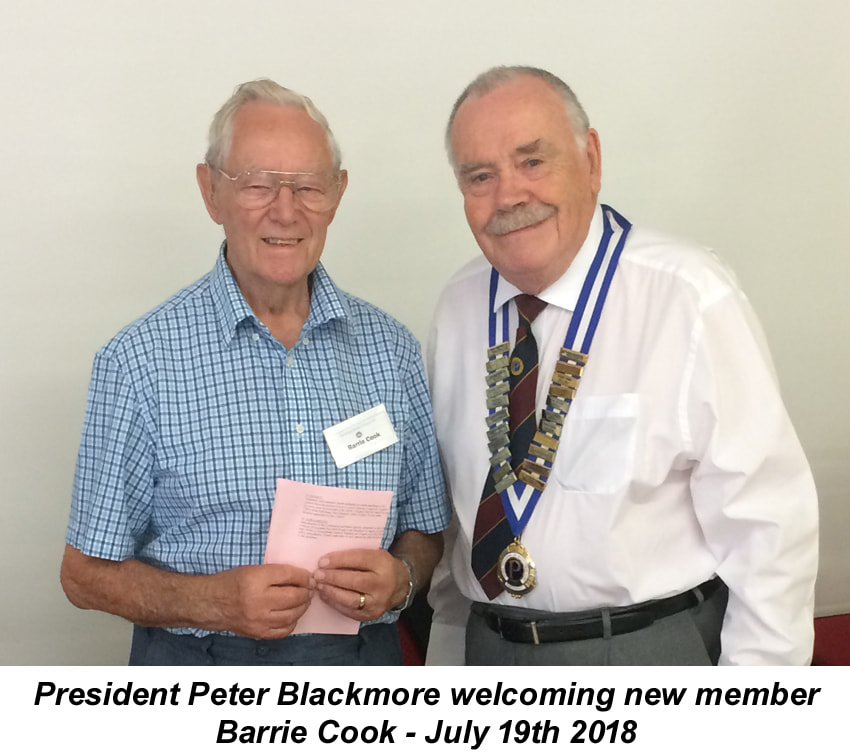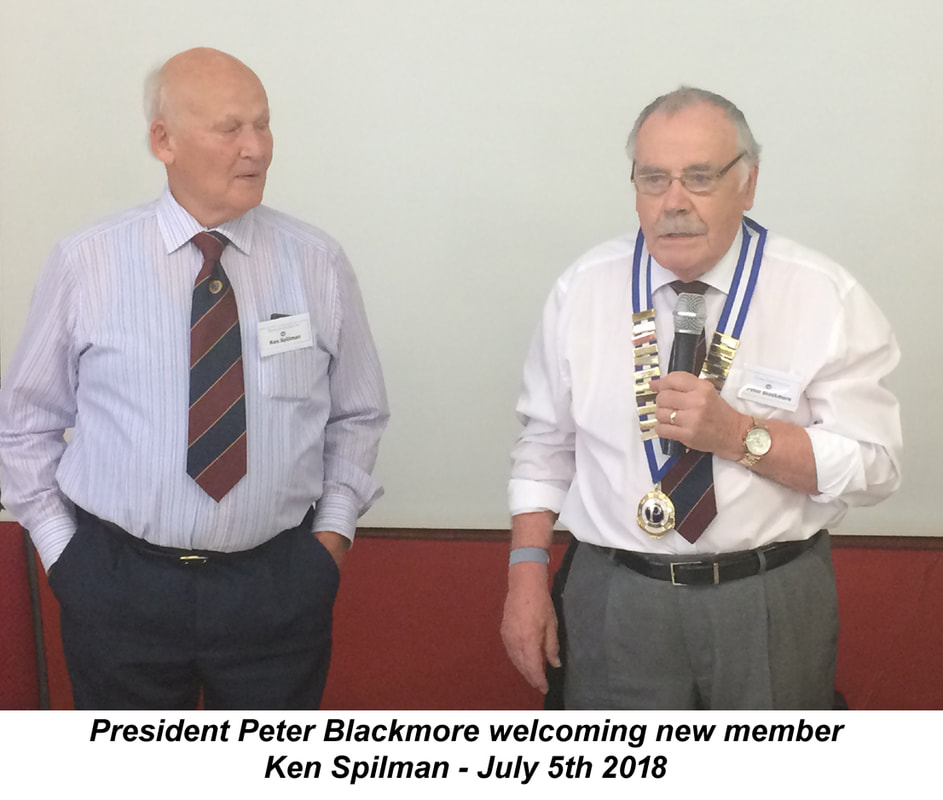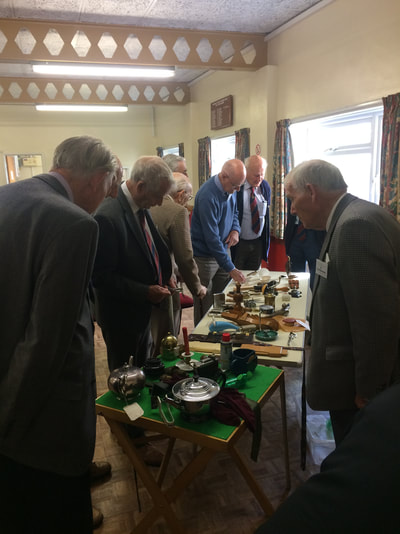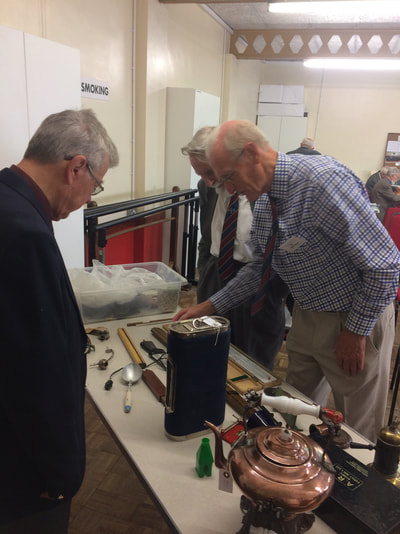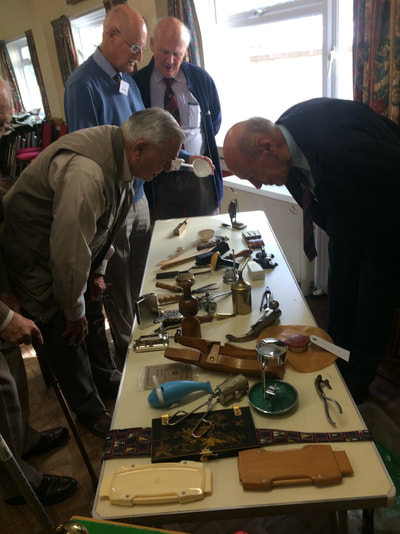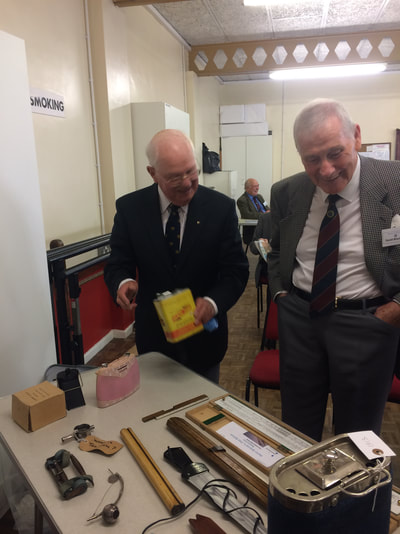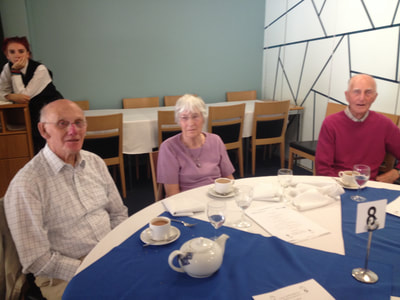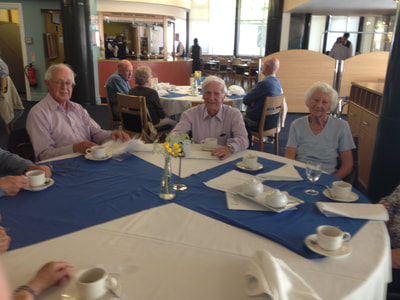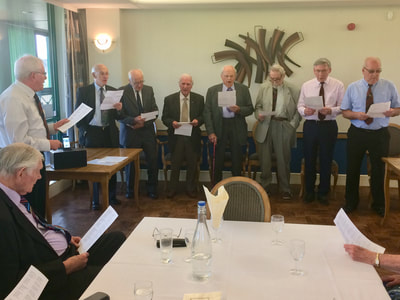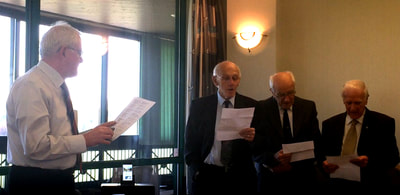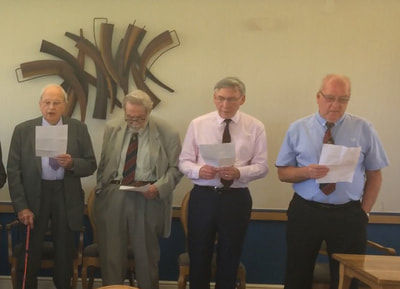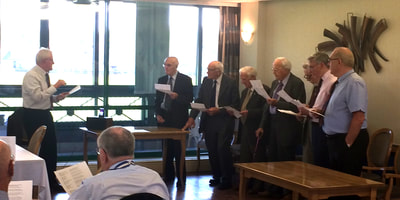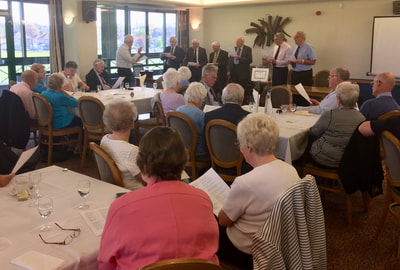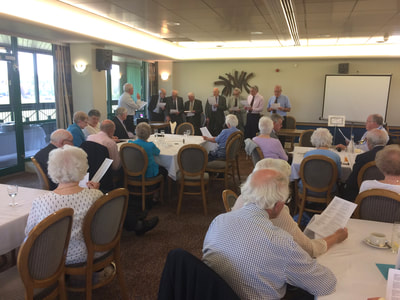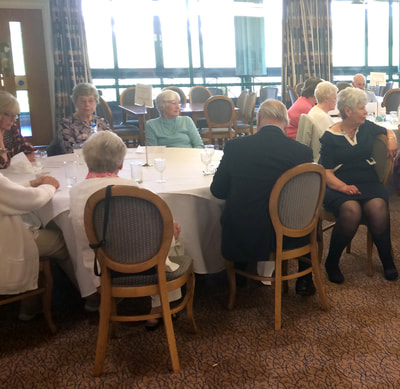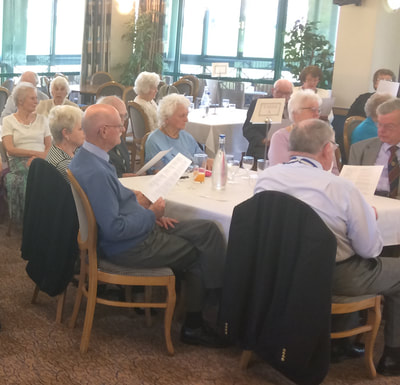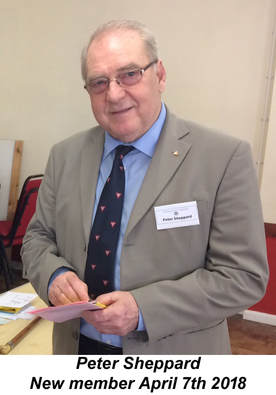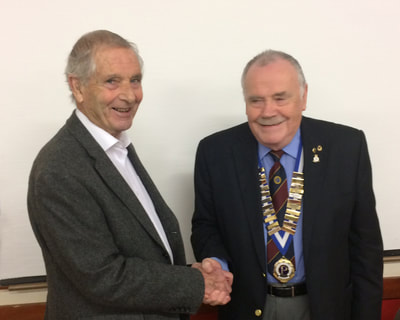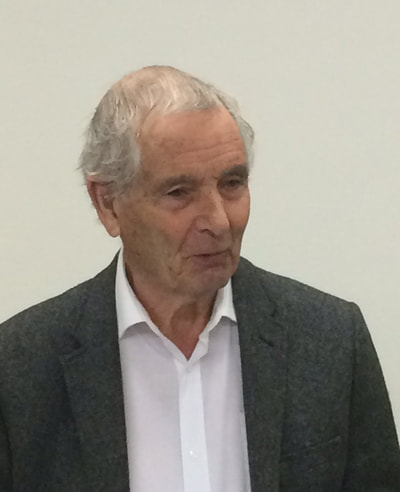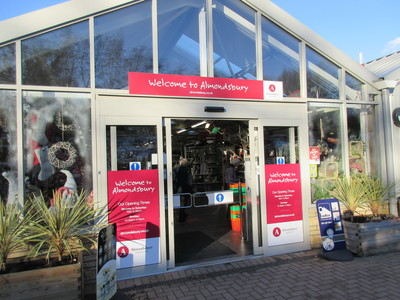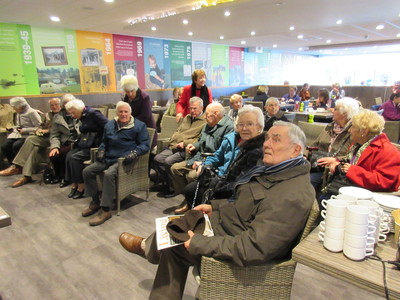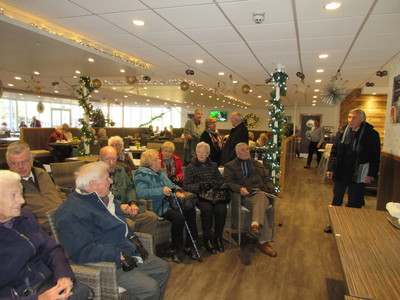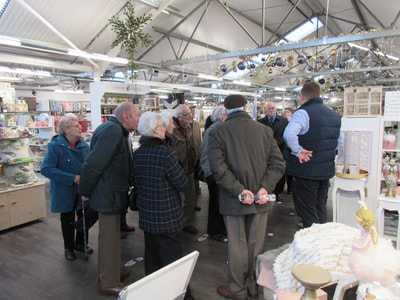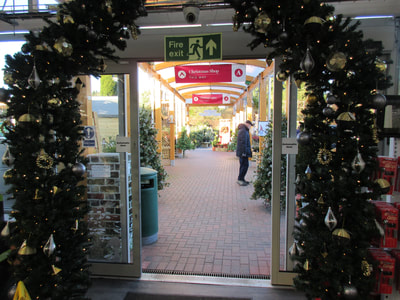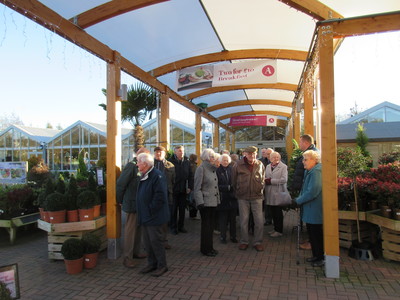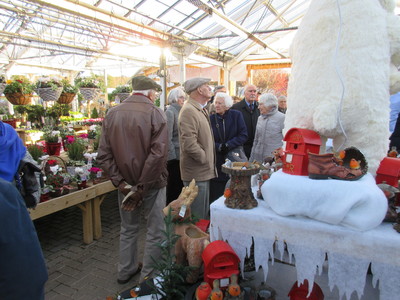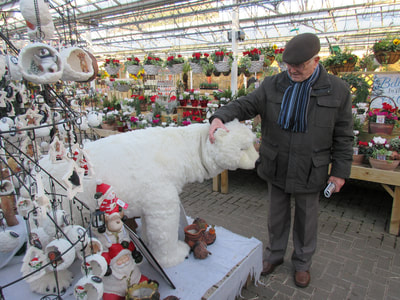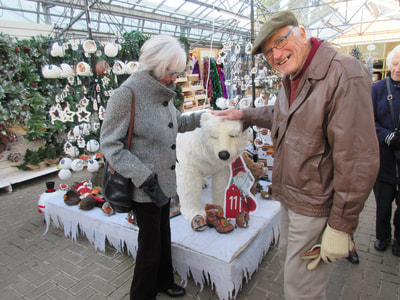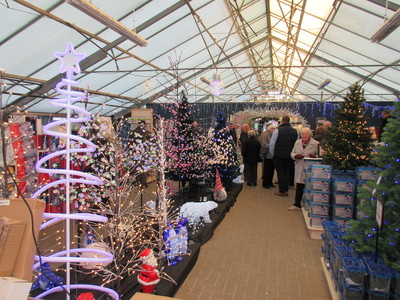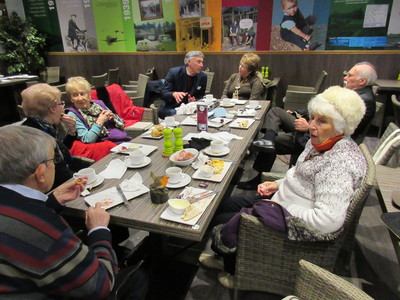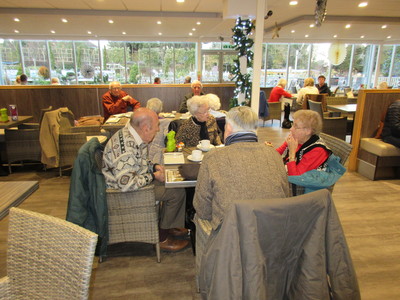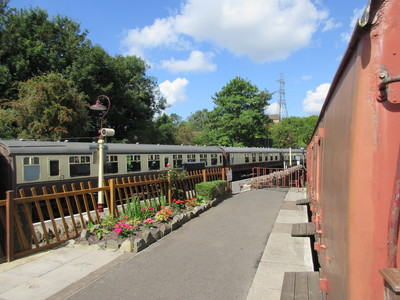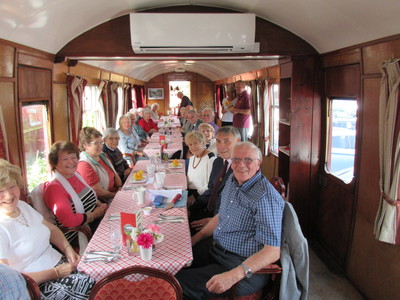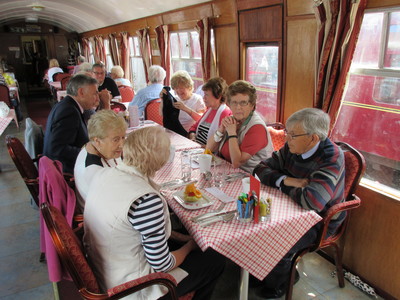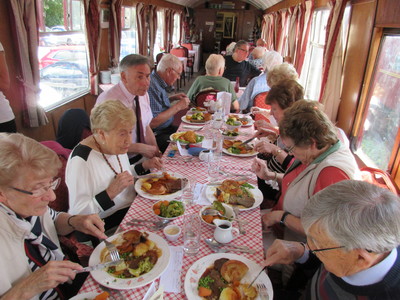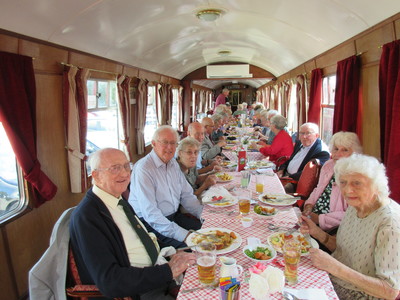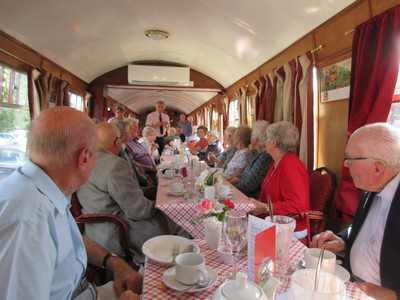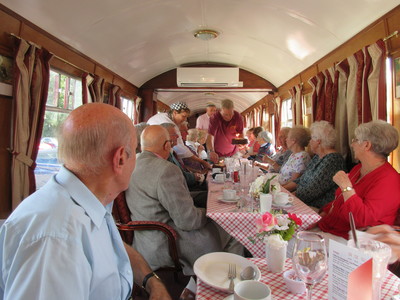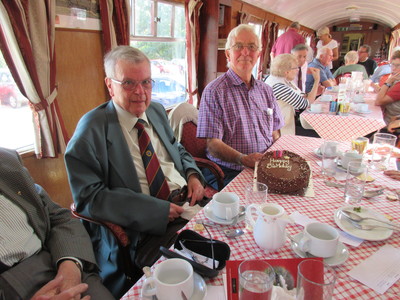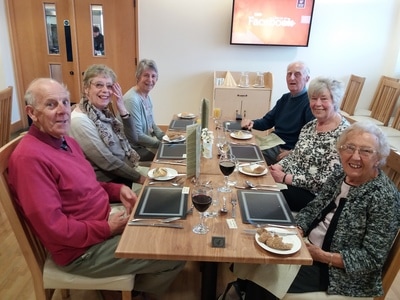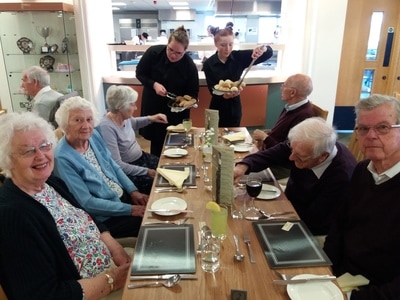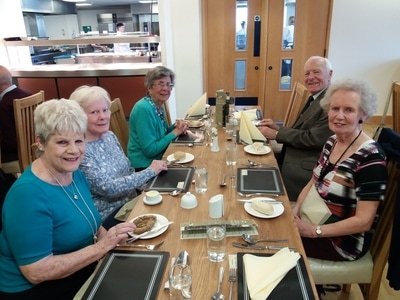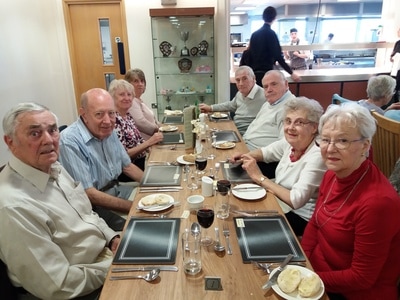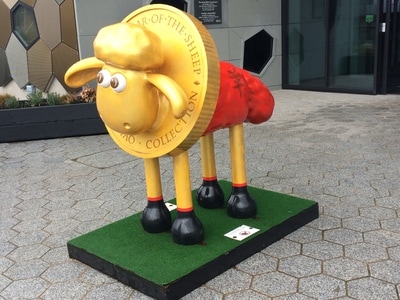
July 18th
Jackie Baker is a well-known figure in Downend as she is often seen tending the flowers presented by the 'Downend and Bromley Heath in Bloom' group, of which she is the leader. Her energetic and vibrant presentation to us explained how from Cleeve Hill Tennis Club beginnings a voluntary and self-financed group started to fill our local streets and roads with displays of flowers, firstly in summer, but now throughout the year. The group has about 20 regular volunteers but receives occasional help from many more in response to Facebook coverage, mentions in Downend Voice and meeting people in the streets. They have a woodworking team of four men who create the wooden planters and display figures seen on lamp posts, this year these are bees. They plant for the autumn/winter period and again in the spring for the summer display. For summer 2024 they have 166 planters, many on the High Street but also some outlaying places. The finances of Downend and Bromley Heath in Bloom include £9,000 for plants, compost £1,000 and watering, £5,500 (carried out by a contractor). All of this is funded by donations from the public, donations from businesses, grants from local government, street collections and attendance at local festivals. They have never taken part in the ‘Britain in Bloom’ competition but in 2107, without entering, were awarded Gold Medal in the Small Town category. Jackie’s talk was illustrated by many photographs of the work carried out by these enthusiastic volunteers who brighten up our neighbourhood. A fascinating talk and an inspiration to us all to volunteer to support our locality.
Jackie Baker is a well-known figure in Downend as she is often seen tending the flowers presented by the 'Downend and Bromley Heath in Bloom' group, of which she is the leader. Her energetic and vibrant presentation to us explained how from Cleeve Hill Tennis Club beginnings a voluntary and self-financed group started to fill our local streets and roads with displays of flowers, firstly in summer, but now throughout the year. The group has about 20 regular volunteers but receives occasional help from many more in response to Facebook coverage, mentions in Downend Voice and meeting people in the streets. They have a woodworking team of four men who create the wooden planters and display figures seen on lamp posts, this year these are bees. They plant for the autumn/winter period and again in the spring for the summer display. For summer 2024 they have 166 planters, many on the High Street but also some outlaying places. The finances of Downend and Bromley Heath in Bloom include £9,000 for plants, compost £1,000 and watering, £5,500 (carried out by a contractor). All of this is funded by donations from the public, donations from businesses, grants from local government, street collections and attendance at local festivals. They have never taken part in the ‘Britain in Bloom’ competition but in 2107, without entering, were awarded Gold Medal in the Small Town category. Jackie’s talk was illustrated by many photographs of the work carried out by these enthusiastic volunteers who brighten up our neighbourhood. A fascinating talk and an inspiration to us all to volunteer to support our locality.

July 4th
Chris Bigg is one of our regular speakers and most welcome. His talk was 'Concorde – Queen of the Skies' and concentrated on the early development of Concorde. He started by explaining his lifelong enthusiasm for aeroplanes. In the 1950’s he had over 150 model planes, some of them hung from his ceiling to discourage his mother from dusting and breaking them. In 1952 he joined the British Aeroplane Company on a salary of £2.18.10 a week. He eventually retired in 2015 after working for several aero companies. He said the Filton aerodrome closed in 2012 and is now being developed for housing. The Brabazon Hanger, where the Concorde was built is to become an arena for entertainment. In 2015 the Areospace Bristol Museum opened with one of the remainig Concordes on display, together with a repurposed WW1 hanger which holds a magnificent display of aero items. He showed us a bewildering range of aircraft, many of which were used in the development of the Concorde. In 1956 the government set up a committee to start planning for a supersonic aircraft. In 1962 an agreement was made with France to jointly develop such a plane. The distinctive Concorde wing shape was largely developed by France and the engine, the Olympus 593, was developed in the UK. By 1968 two prototypes were being built, one in Toulouse and one in Bristol. He showed us many pictures of the construction and explained the complicated logistics of the two nations working together. Concorde 001 had the first test flight in 1969. Chris has an amazing collection of photographs and the talk covered only up to the first flight, we hope to hear part two of his Concorde story another day.
Chris Bigg is one of our regular speakers and most welcome. His talk was 'Concorde – Queen of the Skies' and concentrated on the early development of Concorde. He started by explaining his lifelong enthusiasm for aeroplanes. In the 1950’s he had over 150 model planes, some of them hung from his ceiling to discourage his mother from dusting and breaking them. In 1952 he joined the British Aeroplane Company on a salary of £2.18.10 a week. He eventually retired in 2015 after working for several aero companies. He said the Filton aerodrome closed in 2012 and is now being developed for housing. The Brabazon Hanger, where the Concorde was built is to become an arena for entertainment. In 2015 the Areospace Bristol Museum opened with one of the remainig Concordes on display, together with a repurposed WW1 hanger which holds a magnificent display of aero items. He showed us a bewildering range of aircraft, many of which were used in the development of the Concorde. In 1956 the government set up a committee to start planning for a supersonic aircraft. In 1962 an agreement was made with France to jointly develop such a plane. The distinctive Concorde wing shape was largely developed by France and the engine, the Olympus 593, was developed in the UK. By 1968 two prototypes were being built, one in Toulouse and one in Bristol. He showed us many pictures of the construction and explained the complicated logistics of the two nations working together. Concorde 001 had the first test flight in 1969. Chris has an amazing collection of photographs and the talk covered only up to the first flight, we hope to hear part two of his Concorde story another day.

June 20th
Bob Rogers told us he had worked for the 'Hawk Conservancy Trust' for 20 years and his talk showed he had learnt a lot during this time. The Trust founder, Reg Smith, appeared on Blue Peter in the early 60’s and following the show many people visited his farm so he decided to open a zoo there. In 1966 they opened Weyhill Zoo. One of the most famous inhabitants was a Mynah Bird who told visitors to “Bugger Off”. Their son, Ashley, became interested in bird of prey and in 1975 he showed his first flying display. It was a great success and led eventually to the transformation of the zoo to the Hawk Conservatory in 1980. They started to become involved with conservation breeding programmes and were one of the first collections to breed a variety of raptor species. In 2002, the Hawk Conservancy Trust was formed to take responsibility for rehabilitation, conservation and research activities. Three years later the Trust assumed full responsibility for the entire operational setting, including education. Bob took us on a virtual tour of the Trust and explained the various areas and displays which happen every day. He mentioned the particular skills of some of the raptors. A Peregrine Falcon can reach speeds of 200 mph in a dive and a Barn Owl can hear a mouse heartbeat at 20 ft. Conservation is now an important element of the Trust work and they have a fully equipped operating theatre where injured birds are nursed back to health. Some of the rehabilitated owls, who can no longer fly, act as adoptive parents to abandoned fledglings. Bob gave a fascinating talk excellent photographs and plenty of videos, he encouraged us to visit the Trust which is near Andover.
Bob Rogers told us he had worked for the 'Hawk Conservancy Trust' for 20 years and his talk showed he had learnt a lot during this time. The Trust founder, Reg Smith, appeared on Blue Peter in the early 60’s and following the show many people visited his farm so he decided to open a zoo there. In 1966 they opened Weyhill Zoo. One of the most famous inhabitants was a Mynah Bird who told visitors to “Bugger Off”. Their son, Ashley, became interested in bird of prey and in 1975 he showed his first flying display. It was a great success and led eventually to the transformation of the zoo to the Hawk Conservatory in 1980. They started to become involved with conservation breeding programmes and were one of the first collections to breed a variety of raptor species. In 2002, the Hawk Conservancy Trust was formed to take responsibility for rehabilitation, conservation and research activities. Three years later the Trust assumed full responsibility for the entire operational setting, including education. Bob took us on a virtual tour of the Trust and explained the various areas and displays which happen every day. He mentioned the particular skills of some of the raptors. A Peregrine Falcon can reach speeds of 200 mph in a dive and a Barn Owl can hear a mouse heartbeat at 20 ft. Conservation is now an important element of the Trust work and they have a fully equipped operating theatre where injured birds are nursed back to health. Some of the rehabilitated owls, who can no longer fly, act as adoptive parents to abandoned fledglings. Bob gave a fascinating talk excellent photographs and plenty of videos, he encouraged us to visit the Trust which is near Andover.

June 6th
David Cheesley has been giving talks for 37 years and has spoken to us before. We knew we were in for an entertaining session. He did not disappoint us with ‘Motoring Memories’. The talk was based on the cars various members of his extended family have owned over the years. The Ford Model T was the first production line manufactured car made in the UK and one of his relatives had one. Early cars got their petrol from the chemist! Petrol pumps only appeared in the 1950’s with overhead trailing booms carrying the petrol over the pavements. He told us of his love of classic cars and mentioned that good examples of old vehicles can earn good money being used in TV and films. David showed us pictures of his collection of Dinky, Corgi and Matchbox toy cars, they can be worth good money if the original box is there. The first motorway was opened in 1959 and the vehicles of the day did not handle the speeds with many breakdowns. He said the AA was valuable in these times and in the early days they would salute you if you had a badge and there was speed trap ahead. His first car was in 1963, a Hillman Super Minx, fine in good weather but when it rained his feet got wet, the floor was rusted away under the carpet. The talk certainly brought back motoring memories for the members.
David Cheesley has been giving talks for 37 years and has spoken to us before. We knew we were in for an entertaining session. He did not disappoint us with ‘Motoring Memories’. The talk was based on the cars various members of his extended family have owned over the years. The Ford Model T was the first production line manufactured car made in the UK and one of his relatives had one. Early cars got their petrol from the chemist! Petrol pumps only appeared in the 1950’s with overhead trailing booms carrying the petrol over the pavements. He told us of his love of classic cars and mentioned that good examples of old vehicles can earn good money being used in TV and films. David showed us pictures of his collection of Dinky, Corgi and Matchbox toy cars, they can be worth good money if the original box is there. The first motorway was opened in 1959 and the vehicles of the day did not handle the speeds with many breakdowns. He said the AA was valuable in these times and in the early days they would salute you if you had a badge and there was speed trap ahead. His first car was in 1963, a Hillman Super Minx, fine in good weather but when it rained his feet got wet, the floor was rusted away under the carpet. The talk certainly brought back motoring memories for the members.

May 30th
Mike Britton showed us 391 slides when he gave his talk entitled ‘Images of Change from the 1930's’. He covered a wide range of subjects, starting with some old glass slides where he demonstrated how they could be recovered and enhanced with Photoshop, including colourisation of the images. In the 30’s most houses did not have baths or indoor toilets. Children could play in traffic free roads. He described some of the effects of the war. In 1939 national identity cards were introduced and ration books issued. Iron railings disappeared, removed to help the war effort and people were encouraged to donate aluminium items. The Home Guard or “Dad’s Army” worked hard with fire watching and blackout checking. He showed the results of air raids on central Bristol including the destruction in 1940 of the Dutch House on the corner of Wine Street. Pictures of street parties showed the joy of the end of the war. Post war one of the major changes was the introduction of the NHS in 1947. 1953 had the coronation of Queen Elizabeth 2 with many street parties again on show. The 1950’s saw the closure of the city docks to commercial trade. A most nostalgic hour for those who could remember much of what was shown.
Mike Britton showed us 391 slides when he gave his talk entitled ‘Images of Change from the 1930's’. He covered a wide range of subjects, starting with some old glass slides where he demonstrated how they could be recovered and enhanced with Photoshop, including colourisation of the images. In the 30’s most houses did not have baths or indoor toilets. Children could play in traffic free roads. He described some of the effects of the war. In 1939 national identity cards were introduced and ration books issued. Iron railings disappeared, removed to help the war effort and people were encouraged to donate aluminium items. The Home Guard or “Dad’s Army” worked hard with fire watching and blackout checking. He showed the results of air raids on central Bristol including the destruction in 1940 of the Dutch House on the corner of Wine Street. Pictures of street parties showed the joy of the end of the war. Post war one of the major changes was the introduction of the NHS in 1947. 1953 had the coronation of Queen Elizabeth 2 with many street parties again on show. The 1950’s saw the closure of the city docks to commercial trade. A most nostalgic hour for those who could remember much of what was shown.

May 16th
Brian Griffiths is a proud ‘Shropshire Lad’ and told us of his life in the rural countryside. He was born in 1939 into a small house given to them by his grandfather with no electricity, mains water or sanitation. Water was obtained from a village water tap about 150 yards from the house. The family lived in. The land was generally flat where he lived but not far away could be seen the Wrekin at 1335 ft high. He sang in the choir of the local church and had a good time at school. When he left school he started work at an electrical company in the nearby town of Wellington. He studied for two hours a week and became proficient in electrical work. He enjoyed visiting horse races and became involved in providing the public address system. In 1960 he was due to do his national service and applied to get into the RAF. Various aptitude tests and medicals eventually had him sent to Aden to service Marconi transmitters. He had a very enjoyable time in Africa with visits to Kenya and Tanganyika. During his time there Colonel Nasser from Egypt tried to influence the workers with propaganda using small radios. One of his jobs was to jam the transmissions. Clearly Brian enjoyed being a Shropshire Lad and his time in the RAF.
Brian Griffiths is a proud ‘Shropshire Lad’ and told us of his life in the rural countryside. He was born in 1939 into a small house given to them by his grandfather with no electricity, mains water or sanitation. Water was obtained from a village water tap about 150 yards from the house. The family lived in. The land was generally flat where he lived but not far away could be seen the Wrekin at 1335 ft high. He sang in the choir of the local church and had a good time at school. When he left school he started work at an electrical company in the nearby town of Wellington. He studied for two hours a week and became proficient in electrical work. He enjoyed visiting horse races and became involved in providing the public address system. In 1960 he was due to do his national service and applied to get into the RAF. Various aptitude tests and medicals eventually had him sent to Aden to service Marconi transmitters. He had a very enjoyable time in Africa with visits to Kenya and Tanganyika. During his time there Colonel Nasser from Egypt tried to influence the workers with propaganda using small radios. One of his jobs was to jam the transmissions. Clearly Brian enjoyed being a Shropshire Lad and his time in the RAF.

May 2nd
‘Hanham Past and Present’ was the subject and Roger Windsor, the expert story teller. Roger has been a stalwart of the Hanham Local History Society for many years and has accumulated many images to tell the story. He started by telling us that there have been prehistoric flint tools and Roman remains found in the area but his real interest became clear when he showed maps of Hanham from the 17th and 18th centuries. His talk was in sections. First the boundaries of Hanham were explored, they are rivers and streams. Where we lived had many pictures of pennant stone building, a difficult building material so that often windows and doors were surrounded with Bath stone, an oolitic limestone. Many ranks of cottages were constructed, often with a shop included. Shopping features strongly and in the High Street there were at least nine grocers, five butchers and five hardware stores. The Burgess family ran the Hanham Post Office for 131 years, a wonderful example of continuity. Pubs covered included the Blue Bowl, it is thought to be one of the oldest pubs in the United Kingdom, being said to date back to the 14th century. Churches were covered with special reference to the expansion of Non-Conformist churches caused when the law forbade new churches being built within five miles of Bristol centre. The Work section showcased boot & shoe manufacturing, farming, mining and quarrying. Roger finished with a video of a song about John Chiddy, a local man who saved the lives of over 100 train passengers by pushing a rock off the tracks in 1876. The song was written and sung by Roger.
‘Hanham Past and Present’ was the subject and Roger Windsor, the expert story teller. Roger has been a stalwart of the Hanham Local History Society for many years and has accumulated many images to tell the story. He started by telling us that there have been prehistoric flint tools and Roman remains found in the area but his real interest became clear when he showed maps of Hanham from the 17th and 18th centuries. His talk was in sections. First the boundaries of Hanham were explored, they are rivers and streams. Where we lived had many pictures of pennant stone building, a difficult building material so that often windows and doors were surrounded with Bath stone, an oolitic limestone. Many ranks of cottages were constructed, often with a shop included. Shopping features strongly and in the High Street there were at least nine grocers, five butchers and five hardware stores. The Burgess family ran the Hanham Post Office for 131 years, a wonderful example of continuity. Pubs covered included the Blue Bowl, it is thought to be one of the oldest pubs in the United Kingdom, being said to date back to the 14th century. Churches were covered with special reference to the expansion of Non-Conformist churches caused when the law forbade new churches being built within five miles of Bristol centre. The Work section showcased boot & shoe manufacturing, farming, mining and quarrying. Roger finished with a video of a song about John Chiddy, a local man who saved the lives of over 100 train passengers by pushing a rock off the tracks in 1876. The song was written and sung by Roger.

April 18th
The Gary Gowens talk ‘Cave Art of South West France’ was an excellent example of a speaker with full knowledge of the topic. The caves in the Ardeche and Dordogne regions contain examples from the Palaeolithic period, the earliest from over 30,000 years ago and the Lascaux images from about 15,000 years ago; confirmed by radiocarbon dating of charcoal. Gary visited the Lascaux caves and was captivated by the history, beauty and detail of the engravings, sculptures and paintings he saw. Lascaux caves were discovered in 1940 when four boys examined a foxhole down which their dog had fallen. About 600 paintings exist of animals including horses, deer and bison. There are also around 1,400 engravings. A second cave system at Chauvet was discovered in 1994 containing hundreds of animal paintings depicting at least 13 different species, including some rarely or never found in other ice age paintings. The walls of the Chauvet Cave feature many predatory animals, e.g., cave lions, leopards, bears, and cave hyenas. Public access to these caves has been stopped due to contamination and damage caused by human breath. Both cave systems now have facsimile exhibitions to allow the public to view the images. The facsimile of Chauvet Cave on the model of the so-called "Faux Lascaux", was opened to the general public in 2015, it is the largest cave replica ever built worldwide. Gary considers himself to be privileged to have viewed the Lascaux cave.
The Gary Gowens talk ‘Cave Art of South West France’ was an excellent example of a speaker with full knowledge of the topic. The caves in the Ardeche and Dordogne regions contain examples from the Palaeolithic period, the earliest from over 30,000 years ago and the Lascaux images from about 15,000 years ago; confirmed by radiocarbon dating of charcoal. Gary visited the Lascaux caves and was captivated by the history, beauty and detail of the engravings, sculptures and paintings he saw. Lascaux caves were discovered in 1940 when four boys examined a foxhole down which their dog had fallen. About 600 paintings exist of animals including horses, deer and bison. There are also around 1,400 engravings. A second cave system at Chauvet was discovered in 1994 containing hundreds of animal paintings depicting at least 13 different species, including some rarely or never found in other ice age paintings. The walls of the Chauvet Cave feature many predatory animals, e.g., cave lions, leopards, bears, and cave hyenas. Public access to these caves has been stopped due to contamination and damage caused by human breath. Both cave systems now have facsimile exhibitions to allow the public to view the images. The facsimile of Chauvet Cave on the model of the so-called "Faux Lascaux", was opened to the general public in 2015, it is the largest cave replica ever built worldwide. Gary considers himself to be privileged to have viewed the Lascaux cave.

April 4th
Brian Rutter covered a very complicated subject under the title ‘Tax, Care and Toy Boys.’ He came from the Co-op Legal Services to give us free advice about three important topics. Protecting your assets, having an appropriate will and Power of Attorney. It is difficult to summarise these subjects in a short article, however here is a try. For assets it is vital that they are carefully considered when deciding where and how to place them, especially when they have to be allocated following a death. There are ways of protecting assets by including clear instructions in a will. On wills he said often a poorly drafted will can cause more problems than having no will in place. ‘Mirror wills’ are the most common form in marriages but they often will not protect the partner left if they are not professionally prepared. For couples who own a property as ‘tenants in common’ the will should clearly show the parts are held in trust when the will is enacted. A Lasting Power of Attorney is a vital form of protection and should be in place at all stages of life, not just for older people; accidents can happen to anyone. Brian showered us with numbers, too many for me to recall, but he did offer a free, no commitment, consultation for anyone interested. He was clearly a man on top of his subject who answered many questions with ease. Still not sure where the ‘Toy Boys’ of the title came from!
Brian Rutter covered a very complicated subject under the title ‘Tax, Care and Toy Boys.’ He came from the Co-op Legal Services to give us free advice about three important topics. Protecting your assets, having an appropriate will and Power of Attorney. It is difficult to summarise these subjects in a short article, however here is a try. For assets it is vital that they are carefully considered when deciding where and how to place them, especially when they have to be allocated following a death. There are ways of protecting assets by including clear instructions in a will. On wills he said often a poorly drafted will can cause more problems than having no will in place. ‘Mirror wills’ are the most common form in marriages but they often will not protect the partner left if they are not professionally prepared. For couples who own a property as ‘tenants in common’ the will should clearly show the parts are held in trust when the will is enacted. A Lasting Power of Attorney is a vital form of protection and should be in place at all stages of life, not just for older people; accidents can happen to anyone. Brian showered us with numbers, too many for me to recall, but he did offer a free, no commitment, consultation for anyone interested. He was clearly a man on top of his subject who answered many questions with ease. Still not sure where the ‘Toy Boys’ of the title came from!
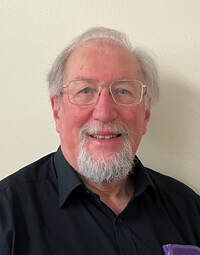
March 21st
Most of us had heard of 'Route 66' from films (Grapes of Wrath) and music (Get Your Kicks on Route 66) , it is also well known as ‘The Mother Road’. Dave Hartnell told us it had been his ambition to try to follow the route and in 2019 he and his family were able to do this with a three week journey. He told us of the history of the creation of the road starting in 1927 but it was not until 1938 that the route was completed. Their journey started in Chicago, Illinoi and travelled west to California over a distance of 2448 miles. One of the features of the route is the many small towns and rest stops created to supply travellers. Dave and his family stopped often to explore the museums and trading posts, many advertised by very large figures, some over 15 feet high, dominating the approach to the stop. Many towns had colourful murals depicting the history of the place. Dave took over 2,500 photographs as they travelled through Missouri, Kansas, Oklahoma, Texas, New Mexico, Arizona to Santa Monica Pier in California. We were entertained with over 500 of his images in an interesting and informative talk.
Most of us had heard of 'Route 66' from films (Grapes of Wrath) and music (Get Your Kicks on Route 66) , it is also well known as ‘The Mother Road’. Dave Hartnell told us it had been his ambition to try to follow the route and in 2019 he and his family were able to do this with a three week journey. He told us of the history of the creation of the road starting in 1927 but it was not until 1938 that the route was completed. Their journey started in Chicago, Illinoi and travelled west to California over a distance of 2448 miles. One of the features of the route is the many small towns and rest stops created to supply travellers. Dave and his family stopped often to explore the museums and trading posts, many advertised by very large figures, some over 15 feet high, dominating the approach to the stop. Many towns had colourful murals depicting the history of the place. Dave took over 2,500 photographs as they travelled through Missouri, Kansas, Oklahoma, Texas, New Mexico, Arizona to Santa Monica Pier in California. We were entertained with over 500 of his images in an interesting and informative talk.
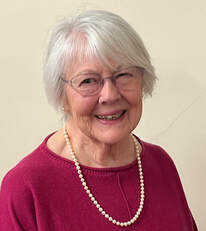
March 7th
Most people know about 'The Clifton Observatory' near the Suspension Bridge but Mary Coward gave us an in depth story of its history. A very early painting showed the cave in the gorge face but no Bridge or Observatory. In 1676 and 1686 the manor of Clifton was purchased by the Society of Merchant Venturers. The Clifton Downs were part of these purchases and in 1766 they applied for permission to build on the site of an Iron Age hill fort. The building was erected as a windmill for corn in 1766 and later converted to the grinding of snuff, when it became known as 'The Snuff Mill'. This was damaged by fire on 30 October 1777 and it was then derelict for 52 years until in 1828 William West, an artist, rented the old mill, for 5 shillings (25p) a year, as a studio. in 1835 he got permission to dig a 200ft tunnel to link to St Vincent's Cave and by 1842 West had converted the building into an observatory incorporating reflecting and achromatic telescopes and a camera obscura, charging one shilling for visitors or an annual membership of 10s. 6d. The camera has a 5 inch lens and projects on to a five foot concave metal surface. By 1860 the Observatory was so famous that excursions were being made by train from Birmingham. West and Brunell were neighbours and seem to have cooperated during the design phase of the Suspension Bridge as one plan showed the bridge emerging from the cave. The Observatory stayed with the West family until 1942 when the Bristol Corporation took it over. During the war it was used as a Home Guard post and air raid shelter. In 1977 the Corporation sold the building and site and it is now owned by Leon Johnson who runs the camera, a small museum and a café. Mary’s final slide was the famous picture of Concorde’s last flight passing over the bridge and observatory.
Most people know about 'The Clifton Observatory' near the Suspension Bridge but Mary Coward gave us an in depth story of its history. A very early painting showed the cave in the gorge face but no Bridge or Observatory. In 1676 and 1686 the manor of Clifton was purchased by the Society of Merchant Venturers. The Clifton Downs were part of these purchases and in 1766 they applied for permission to build on the site of an Iron Age hill fort. The building was erected as a windmill for corn in 1766 and later converted to the grinding of snuff, when it became known as 'The Snuff Mill'. This was damaged by fire on 30 October 1777 and it was then derelict for 52 years until in 1828 William West, an artist, rented the old mill, for 5 shillings (25p) a year, as a studio. in 1835 he got permission to dig a 200ft tunnel to link to St Vincent's Cave and by 1842 West had converted the building into an observatory incorporating reflecting and achromatic telescopes and a camera obscura, charging one shilling for visitors or an annual membership of 10s. 6d. The camera has a 5 inch lens and projects on to a five foot concave metal surface. By 1860 the Observatory was so famous that excursions were being made by train from Birmingham. West and Brunell were neighbours and seem to have cooperated during the design phase of the Suspension Bridge as one plan showed the bridge emerging from the cave. The Observatory stayed with the West family until 1942 when the Bristol Corporation took it over. During the war it was used as a Home Guard post and air raid shelter. In 1977 the Corporation sold the building and site and it is now owned by Leon Johnson who runs the camera, a small museum and a café. Mary’s final slide was the famous picture of Concorde’s last flight passing over the bridge and observatory.
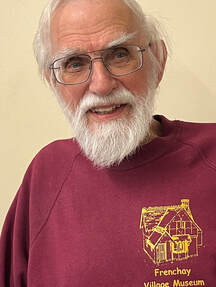
February 29th
Alan Freke is an expert on the history of the Frenchay area of Bristol. He has spoken to us before and we knew we would have an interesting and informative talk about the ‘Secret History of Frenchay Hospital’. He started with the acquisition by George Worrell of Frenchay House in 1830. He died in 1840 and the property was passed on to his wife. In 1864 it was passed on to William Tanner who was responsible for buying extra land and building three lodges to enter the estate. During his occupation he achieved a dream of establishing a “beautiful estate”. Private ownership ended in 1921 when it was sold to Bristol Corporation who used the house to establish a sanatorium for TB patients. The sanatorium had a farm and the children at the hospital spent most of their time outside in the fresh air, even in winter. In preparation for the anticipated war with Germany the War Department asked the city to build an emergency hospital away from the city. It was not used but after Pearl Harbour in 1941 it was handed over to the US Army to treat injured service personnel. At its peak it held 1,300 patients. At the end of the war the US Army evacuated the hospital in August 1945 and left most of the equipment in situ but a lot was unsuitable for use. The city corporation appointed Ernest Clark as Hospital Clerk and he began the task of creating a post-war hospital. Buildings were modernised and the grounds tidied up. In the 1960’s a new hospital was planned but the Coal Board decided to set up a drift mine, which would have run under the hospital site so the new hospital idea was dropped. The mining plan did not happen but when this was announced it was too late to proceed. In 1980 a new plan was announced and phase 1 opened in 1990. In 2020 it was announced that the hospital would close and all services for North Bristol would be concentrated at Southmead. Frenchay Hospital finally closed in May 2014. Alan put an immense amount of research into the talk and this brief summary does not do justice to the excellent presentation.
Alan Freke is an expert on the history of the Frenchay area of Bristol. He has spoken to us before and we knew we would have an interesting and informative talk about the ‘Secret History of Frenchay Hospital’. He started with the acquisition by George Worrell of Frenchay House in 1830. He died in 1840 and the property was passed on to his wife. In 1864 it was passed on to William Tanner who was responsible for buying extra land and building three lodges to enter the estate. During his occupation he achieved a dream of establishing a “beautiful estate”. Private ownership ended in 1921 when it was sold to Bristol Corporation who used the house to establish a sanatorium for TB patients. The sanatorium had a farm and the children at the hospital spent most of their time outside in the fresh air, even in winter. In preparation for the anticipated war with Germany the War Department asked the city to build an emergency hospital away from the city. It was not used but after Pearl Harbour in 1941 it was handed over to the US Army to treat injured service personnel. At its peak it held 1,300 patients. At the end of the war the US Army evacuated the hospital in August 1945 and left most of the equipment in situ but a lot was unsuitable for use. The city corporation appointed Ernest Clark as Hospital Clerk and he began the task of creating a post-war hospital. Buildings were modernised and the grounds tidied up. In the 1960’s a new hospital was planned but the Coal Board decided to set up a drift mine, which would have run under the hospital site so the new hospital idea was dropped. The mining plan did not happen but when this was announced it was too late to proceed. In 1980 a new plan was announced and phase 1 opened in 1990. In 2020 it was announced that the hospital would close and all services for North Bristol would be concentrated at Southmead. Frenchay Hospital finally closed in May 2014. Alan put an immense amount of research into the talk and this brief summary does not do justice to the excellent presentation.
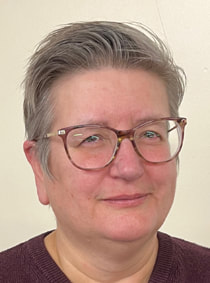
February 15th
We all know of Keynsham and the lovely church on High Street but none of us knew anything about 'Keynsham Abbey' but Elaine told us she had been practically brought up on the site as her father was involved in the excavations there. The Abbey was founded in about 1167 by William, Earl of Gloucester as an Augustine monastery. Her story was one of royal rivalry and intrigue as possession passed from person to person. Edward 1st visited in 1261 and 1347 the last Earl of Gloucester died. At its peak the Abbey owned over 24,000 acres all over Somerset plus land in Ireland. During the plague in 1348 the Abbey declined fell into poor condition. For many years there were complaints from the Bishops and in 1539 King Henry 8th became the patron of Keynsham taking control of the Abbey and he sold off many items of value. The surrender of the Abbey began a 400-year period of disassembly and robbing the site for suitable building materials. The changes began almost immediately: within two years of the surrender of the Abbey, the buildings began to be dismantled and sold off. Victorian housebuilders and excavators began taking stone from the site in 1865, and continued until the turn of the century, until only isolated stretches of unsuitable stone or stone buried under discarded material were left. In the 1960s, plans were made for the Keynsham bypass of the A4 to pass directly through the site of the Abbey, which would necessarily destroy what was left of the site. An archaeological excavation was made in advance of the road construction. Little of the monastery remains but what is there can be viewed in the Keynsham Memorial Park and some archaeological finds are on view at the Library. A fascinating trip through history.
We all know of Keynsham and the lovely church on High Street but none of us knew anything about 'Keynsham Abbey' but Elaine told us she had been practically brought up on the site as her father was involved in the excavations there. The Abbey was founded in about 1167 by William, Earl of Gloucester as an Augustine monastery. Her story was one of royal rivalry and intrigue as possession passed from person to person. Edward 1st visited in 1261 and 1347 the last Earl of Gloucester died. At its peak the Abbey owned over 24,000 acres all over Somerset plus land in Ireland. During the plague in 1348 the Abbey declined fell into poor condition. For many years there were complaints from the Bishops and in 1539 King Henry 8th became the patron of Keynsham taking control of the Abbey and he sold off many items of value. The surrender of the Abbey began a 400-year period of disassembly and robbing the site for suitable building materials. The changes began almost immediately: within two years of the surrender of the Abbey, the buildings began to be dismantled and sold off. Victorian housebuilders and excavators began taking stone from the site in 1865, and continued until the turn of the century, until only isolated stretches of unsuitable stone or stone buried under discarded material were left. In the 1960s, plans were made for the Keynsham bypass of the A4 to pass directly through the site of the Abbey, which would necessarily destroy what was left of the site. An archaeological excavation was made in advance of the road construction. Little of the monastery remains but what is there can be viewed in the Keynsham Memorial Park and some archaeological finds are on view at the Library. A fascinating trip through history.

February 1st
It is good when you have an interesting speaker and with Chris Bigg you also get a good photographer and someone who does excellent research. Chris’s talk was entitled ‘Bristol at War’. He started by showing us photographs of the Bristol area taken by the German Luftwaffe before the war started. It showed how prepared they were for the upcoming war. The pictures showed the Filton manufacturing area as well as the city docks and railway lines. Bristol had made some preparations for the war and the work of the Home Guard was emphasised. Gas masks were issued and fire extinguishing equipment prominently displayed. Metal railings were removed from public places, including Page Park, to boost weapon manufacturing and aluminium was collected from the public for aircraft manufacturing. Filton and many other places in and around the Bristol became the largest manufacturing plant for aircraft and engines. Chris showed us some of the aircraft manufactured by over 52,000 workers at peak. The Luftwaffe conducted six major bombing campaigns on Bristol between November 1940 and April 1941, causing Bristol to experience 548 air raid alerts and 77 air raids with 1,299 people killed, 1,303 seriously injured and 697 rescued from the debris of bombed buildings. 89,080 buildings damaged including 81,830 houses destroyed and over 3,000 rendered unusable and later demolished. A talk which educated us all.
It is good when you have an interesting speaker and with Chris Bigg you also get a good photographer and someone who does excellent research. Chris’s talk was entitled ‘Bristol at War’. He started by showing us photographs of the Bristol area taken by the German Luftwaffe before the war started. It showed how prepared they were for the upcoming war. The pictures showed the Filton manufacturing area as well as the city docks and railway lines. Bristol had made some preparations for the war and the work of the Home Guard was emphasised. Gas masks were issued and fire extinguishing equipment prominently displayed. Metal railings were removed from public places, including Page Park, to boost weapon manufacturing and aluminium was collected from the public for aircraft manufacturing. Filton and many other places in and around the Bristol became the largest manufacturing plant for aircraft and engines. Chris showed us some of the aircraft manufactured by over 52,000 workers at peak. The Luftwaffe conducted six major bombing campaigns on Bristol between November 1940 and April 1941, causing Bristol to experience 548 air raid alerts and 77 air raids with 1,299 people killed, 1,303 seriously injured and 697 rescued from the debris of bombed buildings. 89,080 buildings damaged including 81,830 houses destroyed and over 3,000 rendered unusable and later demolished. A talk which educated us all.
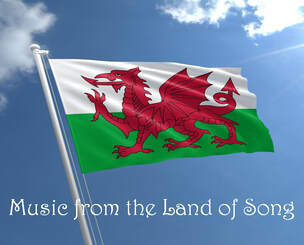
January 18th
Just two days before the event our booked speaker advised us she was unwell and not able to come to us. Panic ensued until Graham again stepped in with a presentation he had given to the Y’s Men. ’Music from the Land of Song’ was the title and Wales the origin of the items. We were treated to a rendering of “Hymns and Arias” led by Max Boyce at Cardiff Arms Park. Max Secombe sang “How Great Thou Art” followed by Katherine Jenkins singing “You’ll Never Walk Alone”. “Canon Lan” came from the Boys Alone Choir then Tom Jones introduced Mary Hopkin to sing “Those Were the Days” Max Boyce opened the show and he closed it with a rendition of “Glory that was Rome” A super morning of Music from Wales.
Just two days before the event our booked speaker advised us she was unwell and not able to come to us. Panic ensued until Graham again stepped in with a presentation he had given to the Y’s Men. ’Music from the Land of Song’ was the title and Wales the origin of the items. We were treated to a rendering of “Hymns and Arias” led by Max Boyce at Cardiff Arms Park. Max Secombe sang “How Great Thou Art” followed by Katherine Jenkins singing “You’ll Never Walk Alone”. “Canon Lan” came from the Boys Alone Choir then Tom Jones introduced Mary Hopkin to sing “Those Were the Days” Max Boyce opened the show and he closed it with a rendition of “Glory that was Rome” A super morning of Music from Wales.
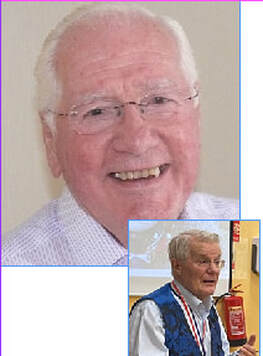
January 4th 2024
We started after the Christmas break with a ‘Post Christmas Extravaganza’ Created by Graham Walker. He was again unable to be present but Wally stood in for him using Graham's script. We were treated to a typical Graham selection of videos from YouTube. “One Day More” from Les Miserables Was transformed into a parody of the Corona Virus pandemic, Gareth Edwards in 1973 gave us an exciting view of a classic rugby try. Songs by The Carpenters, The Platters and Elvis brought music to us. Comedy came from David Jason in an extract from Fools and Horses and we finished with “There Ain’t Nothing Like a Dame” from the film South Pacific. Graham was not with us but his choices reminded us of the hard work he always puts into his presentations.
We started after the Christmas break with a ‘Post Christmas Extravaganza’ Created by Graham Walker. He was again unable to be present but Wally stood in for him using Graham's script. We were treated to a typical Graham selection of videos from YouTube. “One Day More” from Les Miserables Was transformed into a parody of the Corona Virus pandemic, Gareth Edwards in 1973 gave us an exciting view of a classic rugby try. Songs by The Carpenters, The Platters and Elvis brought music to us. Comedy came from David Jason in an extract from Fools and Horses and we finished with “There Ain’t Nothing Like a Dame” from the film South Pacific. Graham was not with us but his choices reminded us of the hard work he always puts into his presentations.
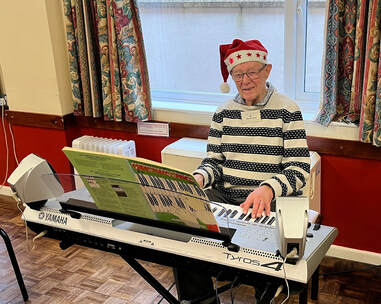
December 7th
This was AGM time and our outgoing President was able to hand over the chain of office to our new President, Helen Bishop. See the News page.
Following this we enjoyed a musical and video programme presented by Barrie Cooke with help from Wally showing videos prepared by Graham Walker (who was unable to attend)
This was AGM time and our outgoing President was able to hand over the chain of office to our new President, Helen Bishop. See the News page.
Following this we enjoyed a musical and video programme presented by Barrie Cooke with help from Wally showing videos prepared by Graham Walker (who was unable to attend)
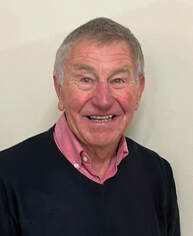
November 30th
It is always a pleasure to listen to an enthusiastic and knowledgeable speaker and Martin Poole was one such person when he told us about the ‘St Augustine’s Soup Run’. He started this enterprise 38 years ago when he saw a tramp who was obviously cold and hungry. He decided that he could provide some soup, in those days only tomato, which he heated in a saucepan and took into the town after work. This work soon developed and he had 8 or 9 ‘customers’. Later on the church became involved and some ladies started to organise him and the work. It was decide to centralise the distribution centre and the Pip & Jay church became the place for feeding and tending to other needs. The operation now includes the provision of many other necessities including toilet supplies, socks, underwear, warm clothing and even sleeping bags. Home-made soup and sandwiches are prepared on a Friday and sent out each Saturday evening. Martin illustrated his talk with photographs and stories of some of the characters he has met and helped. Clearly a dedicated and driven man, who has made a real difference to the lives of many.
Our meeting, being the third Thursday in November was a 'Ladies Day' and after the meeting we retired to the Horseshoe for lunch at which Martin joined us. See the social gallery for pictures.....
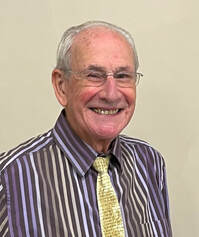
November 16th
Bernard Merrick is an accomplished photographer and a keen observer of the many places he has visited. This talk was about the ‘Glories of Venice’. He promised us it would not be a holiday travel story and so it turned out. He told us a little of the history of Venice, how it was founded and built on piles driven through the mud into the underlying clay. Venice was an independent state until 1866 when the inhabitants voted to join Italy. A look at some of the canals was accompanied by Vivaldi music. He described how food was brought to places and rubbish removed, all by boat. The provision of clean water was difficult and the Venetians developed a system of collecting rainwater and filtering it into wells. The gondolas are 36 feet long and 4.5 feet wide; constructed to a common design and the gondoliers have to undergo ten years of training, there are currently 400 of them, many with long family traditions. There are many squares with confusing direction signs leading to them and some wonderful architecture as well as run down places off the beaten track. Photographs of costumes from the Venice Carnival, revived in 1979, gave us a colourful finale to the talk.
Bernard Merrick is an accomplished photographer and a keen observer of the many places he has visited. This talk was about the ‘Glories of Venice’. He promised us it would not be a holiday travel story and so it turned out. He told us a little of the history of Venice, how it was founded and built on piles driven through the mud into the underlying clay. Venice was an independent state until 1866 when the inhabitants voted to join Italy. A look at some of the canals was accompanied by Vivaldi music. He described how food was brought to places and rubbish removed, all by boat. The provision of clean water was difficult and the Venetians developed a system of collecting rainwater and filtering it into wells. The gondolas are 36 feet long and 4.5 feet wide; constructed to a common design and the gondoliers have to undergo ten years of training, there are currently 400 of them, many with long family traditions. There are many squares with confusing direction signs leading to them and some wonderful architecture as well as run down places off the beaten track. Photographs of costumes from the Venice Carnival, revived in 1979, gave us a colourful finale to the talk.
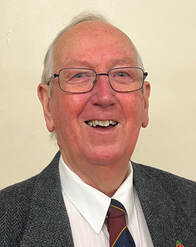
November 2nd
Gary has entertained us many times before but this time it was different. His projection equipment had failed him so he had to improvise. He gave a talk without images entitled ‘These Boots Were Made for Walking’. This was the story of Norman Searle who died in 2014 but who, aged 88, wrote a small book about his experiences in WW2. An illuminating tale of the journey of a simple soldier, from enlistment through the D-Day landings and on to the approach to Berlin. He joined the Oxford & Buckinghamshire Light Infantry aged 18 and underwent training where it became obvious to him that they were training for the invasion of France. In the spring of 1944 he was sent to Portsmouth, give more training and French money. On June 6th he boarded a landing craft for Sword Beach with the aim of capturing the Pegasus Bridge over the Caen Canal. He was equipped with 50lb of kit and his rifle. The troops advanced to Ouistreham and on to the vital bridge his mate was killed driving a lorry away from an ammunition dump the first of many lucky escapes for Norman. After 10 weeks of action he was taken out of the line and posted to join the 5th Seaforth Highlanders. There he was assigned as a flame-thrower carrier, a dangerous job and often the target for snipers. His battalion moved on to fight in the Falaise Gap battle in August where he was accompanying a tank with his flame-thrower, the tank was hit and the crew died but Norman survived with his equipment damaged. He said the system did not seem to be very compassionate with wounded soldier patched up and returned to the front line in as little as six weeks. It was then on to Operation Market Garden and Arnhem in September 1944. It was here he received a little relief when they were able to stay in a Phillips factory but he saw the dreadful conditions of the locals, many starving. In November during operation Guy Fawkes he was wounded in the neck and moved to Brussels only to be discharged later to return to his troop. On Christmas day 1944 they received orders to move on to the Ardennes Forest for the ‘Battle of the Bulge’ but during the action he felt ill and was evacuated to the 79th Brussels Hospital. He expected to be sent back to the front but was surprised when they told him he was to be sent back to England to recover. He had lost three stone in weight and was put into a comma for 7 days to aid recovery. Following demob it was difficult to adjust but eventually he did, aided by VE day. He returned several times to the Normandy beaches for D-Day ceremonies and was feted. He was thankfully a soldier with luck on his side. Gary told a moving story of the trials of an ‘ordinary soldier’.
Gary has entertained us many times before but this time it was different. His projection equipment had failed him so he had to improvise. He gave a talk without images entitled ‘These Boots Were Made for Walking’. This was the story of Norman Searle who died in 2014 but who, aged 88, wrote a small book about his experiences in WW2. An illuminating tale of the journey of a simple soldier, from enlistment through the D-Day landings and on to the approach to Berlin. He joined the Oxford & Buckinghamshire Light Infantry aged 18 and underwent training where it became obvious to him that they were training for the invasion of France. In the spring of 1944 he was sent to Portsmouth, give more training and French money. On June 6th he boarded a landing craft for Sword Beach with the aim of capturing the Pegasus Bridge over the Caen Canal. He was equipped with 50lb of kit and his rifle. The troops advanced to Ouistreham and on to the vital bridge his mate was killed driving a lorry away from an ammunition dump the first of many lucky escapes for Norman. After 10 weeks of action he was taken out of the line and posted to join the 5th Seaforth Highlanders. There he was assigned as a flame-thrower carrier, a dangerous job and often the target for snipers. His battalion moved on to fight in the Falaise Gap battle in August where he was accompanying a tank with his flame-thrower, the tank was hit and the crew died but Norman survived with his equipment damaged. He said the system did not seem to be very compassionate with wounded soldier patched up and returned to the front line in as little as six weeks. It was then on to Operation Market Garden and Arnhem in September 1944. It was here he received a little relief when they were able to stay in a Phillips factory but he saw the dreadful conditions of the locals, many starving. In November during operation Guy Fawkes he was wounded in the neck and moved to Brussels only to be discharged later to return to his troop. On Christmas day 1944 they received orders to move on to the Ardennes Forest for the ‘Battle of the Bulge’ but during the action he felt ill and was evacuated to the 79th Brussels Hospital. He expected to be sent back to the front but was surprised when they told him he was to be sent back to England to recover. He had lost three stone in weight and was put into a comma for 7 days to aid recovery. Following demob it was difficult to adjust but eventually he did, aided by VE day. He returned several times to the Normandy beaches for D-Day ceremonies and was feted. He was thankfully a soldier with luck on his side. Gary told a moving story of the trials of an ‘ordinary soldier’.
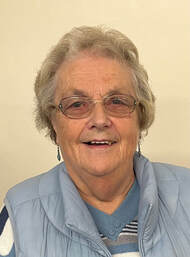
October 19th
‘Two Penn’oth of Poison’ is an intriguing title for the talk given by Penny Deverill and the talk turned out to be absorbing. Penny decided to research her family history in 1981 when she found that one of her ancestors had been in the Muller Road orphanage. This led to the discovery of a murder and a hanging. Penny wrote a fictional book weaving her research into Rebecca and Thomas Worlock into the story. They were married in May 1807 and went to live in Oldland. The marriage was not a happy one and Rebecca resented having to live in poor accommodation after being brought up to believe she would inherit money from her family, this did not happen. Thomas was violent to Rebecca during the marriage despite having three children together. In 1820 Thomas died after drinking beer bought by his wife. The rat poison, according to a Dr Watts at the time, would have burned Thomas's insides to a crisp in a matter of hours. It did just that, and Thomas died in agonising pain after three days. There was evidence that Rebecca had bought two penny worth of arsenic and she was brought to trial charged with murder. Penny took us through the detail of the trial and evidence which resulted in a verdict of guilty and sentence to death by hanging. Reverend Ellicombe did however take pity on Rebecca and demanded that her body be returned for burial after the hanging in light of confessing to her sins. Her body was at first given to doctors for dissection, before what was left being handed over for a proper burial in Bitton. An interesting and detailed story of life and death in rural Warmley.
‘Two Penn’oth of Poison’ is an intriguing title for the talk given by Penny Deverill and the talk turned out to be absorbing. Penny decided to research her family history in 1981 when she found that one of her ancestors had been in the Muller Road orphanage. This led to the discovery of a murder and a hanging. Penny wrote a fictional book weaving her research into Rebecca and Thomas Worlock into the story. They were married in May 1807 and went to live in Oldland. The marriage was not a happy one and Rebecca resented having to live in poor accommodation after being brought up to believe she would inherit money from her family, this did not happen. Thomas was violent to Rebecca during the marriage despite having three children together. In 1820 Thomas died after drinking beer bought by his wife. The rat poison, according to a Dr Watts at the time, would have burned Thomas's insides to a crisp in a matter of hours. It did just that, and Thomas died in agonising pain after three days. There was evidence that Rebecca had bought two penny worth of arsenic and she was brought to trial charged with murder. Penny took us through the detail of the trial and evidence which resulted in a verdict of guilty and sentence to death by hanging. Reverend Ellicombe did however take pity on Rebecca and demanded that her body be returned for burial after the hanging in light of confessing to her sins. Her body was at first given to doctors for dissection, before what was left being handed over for a proper burial in Bitton. An interesting and detailed story of life and death in rural Warmley.
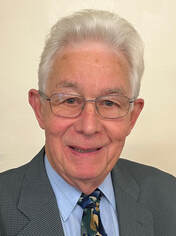
October 5th
All of us knew the name of the first man to go into space, Yuri Gagarin, but the title of the talk given by Terry Ransome was ‘Yuri Gagarin & the Chief Designer - Space Race’ and we were kept in the dark about the Chief Designer until the end. The story was largely about the space race between the USSR and the USA. There were many failures by both countries in the build up to launches. The first object to circle the globe was the “Sputnik” in 1957 and this spurred the USA to launch Explorer 1 in 1958. In 1969 the USSR started the programme of training cosmonauts in preparation for a manned launch. Gagarin was a foundryman prior to his selection as one of 20 candidates. The USA had also been preparing for a manned launch and had nominated May 2961 as the date. The USSR responded by launching Vostok1 with Gagarin on board for a single orbit of the earth. There was nearly a disaster when the cables joining the Vostok’s descent module and service module failed to separate properly, Gagarin managed to eject and parachute to earth. He became an international celebrity, toured the world and was showered with honours by his country. Gagarin’s triumph was a painful blow to the United States, and a U.S. astronaut wouldn’t match Gagarin’s feat of orbiting the Earth until February 1962, when astronaut John Glenn made three orbits in Friendship 7. Terry said he thought Gagarin’s feat changed Soviet culture, showing citizens images of the ‘outside’ world, with the individual taking over from the idea of collective, nationalistic effort. The talk was longer than our normal talks but he kept us fascinated with information until he eventually told us about Sergei Pavlovich Korolyev. Born in 1906 and arrested in 1938 on a false official charge as a ‘member of an anti-Soviet counter-revolutionary organisation’ he was given a six year sentence but released when WW2 started. Following his release he became a recognized rocket designer and a key figure in the development of the Soviet intercontinental ballistic missile programme. He died from complications during surgery in 1966. Before his death he was officially identified only as Glavny Konstruktor, or the Chief Designer, to protect him from possible Cold War assassination attempts by the United States. Even some of the cosmonauts who worked with him were unaware of his last name. Only following his death in 1966 was his identity revealed and he received the appropriate public recognition as the driving force behind Soviet accomplishments in space exploration. Gagarin himself died while flying a MIG 15 in 1968. Terry had worked on the space programme since 1970 when he went to Woomera, Australia, for the UK Skylark programme and his talk clearly demonstrated he knew his subject well.
All of us knew the name of the first man to go into space, Yuri Gagarin, but the title of the talk given by Terry Ransome was ‘Yuri Gagarin & the Chief Designer - Space Race’ and we were kept in the dark about the Chief Designer until the end. The story was largely about the space race between the USSR and the USA. There were many failures by both countries in the build up to launches. The first object to circle the globe was the “Sputnik” in 1957 and this spurred the USA to launch Explorer 1 in 1958. In 1969 the USSR started the programme of training cosmonauts in preparation for a manned launch. Gagarin was a foundryman prior to his selection as one of 20 candidates. The USA had also been preparing for a manned launch and had nominated May 2961 as the date. The USSR responded by launching Vostok1 with Gagarin on board for a single orbit of the earth. There was nearly a disaster when the cables joining the Vostok’s descent module and service module failed to separate properly, Gagarin managed to eject and parachute to earth. He became an international celebrity, toured the world and was showered with honours by his country. Gagarin’s triumph was a painful blow to the United States, and a U.S. astronaut wouldn’t match Gagarin’s feat of orbiting the Earth until February 1962, when astronaut John Glenn made three orbits in Friendship 7. Terry said he thought Gagarin’s feat changed Soviet culture, showing citizens images of the ‘outside’ world, with the individual taking over from the idea of collective, nationalistic effort. The talk was longer than our normal talks but he kept us fascinated with information until he eventually told us about Sergei Pavlovich Korolyev. Born in 1906 and arrested in 1938 on a false official charge as a ‘member of an anti-Soviet counter-revolutionary organisation’ he was given a six year sentence but released when WW2 started. Following his release he became a recognized rocket designer and a key figure in the development of the Soviet intercontinental ballistic missile programme. He died from complications during surgery in 1966. Before his death he was officially identified only as Glavny Konstruktor, or the Chief Designer, to protect him from possible Cold War assassination attempts by the United States. Even some of the cosmonauts who worked with him were unaware of his last name. Only following his death in 1966 was his identity revealed and he received the appropriate public recognition as the driving force behind Soviet accomplishments in space exploration. Gagarin himself died while flying a MIG 15 in 1968. Terry had worked on the space programme since 1970 when he went to Woomera, Australia, for the UK Skylark programme and his talk clearly demonstrated he knew his subject well.
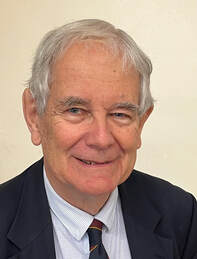
September 21st
Coal-Tar seemed to be a possibly boring subject but Brian Vincent kept us interested with his history of ‘The Butler Family and the Coal-Tar Industry’. A tar works site was established by Isambard Kingdom Brunel in 1843 at the bottom of Troopers Hill, known for its distinctive chimney and already a busy industrial site. It provided creosote to be used as a preservative for timber railway sleepers needed for the faster trains Brunel planned. By 1863 had passed into the ownership of Brunel's manager, William Butler. The Butler family had a strong Methodist connection and many of them undertook political and social work as well as running the company. The company was involved in the first trams in 1875, the first electric tram in 1895 and had the first telephone in Bristol. Brian took us through the manufacturing method of Coal-Tar and all the derivative products such as turpentine, rosin and benzole. The company diversified into road surfacing and expanded into the USA. During WW2 it came under government control and in 1947 became part of the nationalised gas industry. British Steel Corporation (BSC) took over running of the tar works in 1970. Under their ownership, it expanded to be one of the most modern in Europe, allowing a continuous 24/7 production of creosote, road tar and smokeless fuel, among other products. It continued to operate until 1981, by which time it had stopped producing road tar and become primarily a distillation unit. After closure, the works lay derelict for some years, until the area was redeveloped as Quayside Village in 1989. An unusual subject transformed into a fascinating talk by Brian.
Coal-Tar seemed to be a possibly boring subject but Brian Vincent kept us interested with his history of ‘The Butler Family and the Coal-Tar Industry’. A tar works site was established by Isambard Kingdom Brunel in 1843 at the bottom of Troopers Hill, known for its distinctive chimney and already a busy industrial site. It provided creosote to be used as a preservative for timber railway sleepers needed for the faster trains Brunel planned. By 1863 had passed into the ownership of Brunel's manager, William Butler. The Butler family had a strong Methodist connection and many of them undertook political and social work as well as running the company. The company was involved in the first trams in 1875, the first electric tram in 1895 and had the first telephone in Bristol. Brian took us through the manufacturing method of Coal-Tar and all the derivative products such as turpentine, rosin and benzole. The company diversified into road surfacing and expanded into the USA. During WW2 it came under government control and in 1947 became part of the nationalised gas industry. British Steel Corporation (BSC) took over running of the tar works in 1970. Under their ownership, it expanded to be one of the most modern in Europe, allowing a continuous 24/7 production of creosote, road tar and smokeless fuel, among other products. It continued to operate until 1981, by which time it had stopped producing road tar and become primarily a distillation unit. After closure, the works lay derelict for some years, until the area was redeveloped as Quayside Village in 1989. An unusual subject transformed into a fascinating talk by Brian.
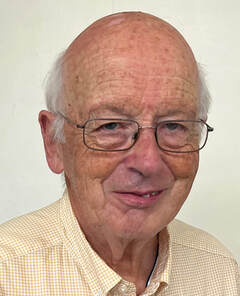
September 7th
We all rely on the National Health Service which was established in 1948 but Dr Michael Whitfield was with us to talk about 'Medical Care in Bristol before the NHS'. Most of his talk concentrated on Cossham Hospital which was founded in 1907 with money from the will of Handel Cossham, a wealthy mine owner who died in 1890. The Handel Cossham bequest not only financed the building of the hospital but also left surplus money which was invested and the dividends were used to help run the hospital. The hospital was typical of the time and had 100 beds, with facilities for operations. Photographs of the time showed the beds to be very close with no screening between them. Pre WW2 it was the busiest A&E department in Bristol. The hospital was financed from donations, and payment for treatment, usually from employers. In 1906 unskilled workers earned on average about 22s a week; semiskilled, about 28s; and skilled about 37s. In 1889 fees for a surgery consultation varied from 1s to 2s 6d; for a home visit (including medicines) from 1s 6d to 3s 6d. The most common fees were 2s or 2s 6d, or 1s for the very poor. Poor people at the beginning of the 20th century sought care from voluntary hospitals and charitable dispensaries, which provided advice and medicine free to those on low incomes but they had to be approved by a GP to obtain treatment or medication. Dr Whitfield finished with a comparison with the situation today where we have health ‘free at the point of need’ but an NHS which is struggling to cope with the demand. An eye opening talk which made us feel glad we had the legacy of the 1948 act.
We all rely on the National Health Service which was established in 1948 but Dr Michael Whitfield was with us to talk about 'Medical Care in Bristol before the NHS'. Most of his talk concentrated on Cossham Hospital which was founded in 1907 with money from the will of Handel Cossham, a wealthy mine owner who died in 1890. The Handel Cossham bequest not only financed the building of the hospital but also left surplus money which was invested and the dividends were used to help run the hospital. The hospital was typical of the time and had 100 beds, with facilities for operations. Photographs of the time showed the beds to be very close with no screening between them. Pre WW2 it was the busiest A&E department in Bristol. The hospital was financed from donations, and payment for treatment, usually from employers. In 1906 unskilled workers earned on average about 22s a week; semiskilled, about 28s; and skilled about 37s. In 1889 fees for a surgery consultation varied from 1s to 2s 6d; for a home visit (including medicines) from 1s 6d to 3s 6d. The most common fees were 2s or 2s 6d, or 1s for the very poor. Poor people at the beginning of the 20th century sought care from voluntary hospitals and charitable dispensaries, which provided advice and medicine free to those on low incomes but they had to be approved by a GP to obtain treatment or medication. Dr Whitfield finished with a comparison with the situation today where we have health ‘free at the point of need’ but an NHS which is struggling to cope with the demand. An eye opening talk which made us feel glad we had the legacy of the 1948 act.
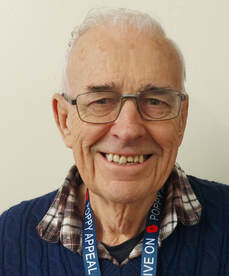
August 31st
A very interesting talk was given by Dave Addis, who had lived in America. 'The Spruce Goose' was a seaplane constructed by Howard Hughes during the WW2 with a view to carrying up to two tanks per trip, war supplies from the US to the UK, normally carried by sea. It was partly financed by the US government and Howard Hughes himself, but ultimately was delivered too late to carry out its purpose as it first flew in 1947, after the ceasing of hostilities. Initially, Kaiser Corporation joined in the action to construct The Spruce Goose, but pulled out when the project started to run late. Kaiser were known for constructing the Liberty Ships and as they managed to get down the time to produce a ship to four days, it was obviously more appropriate to transport war supplies by ship. The plane was enormous for its time, larger than the Bristol Brabazon and the Boeing 747. It was constructed with plywood, mainly from birchwood, and was powered by eight Pratt & Whitney engines made especially for the aircraft. The maiden flight was the only flight made, after which it was mothballed. Later owned by Disney Corporation, it was housed at Longbeach, California alongside the Queen Mary until sold to Evergreen Aero, who then put it on exhibition in Portland, Oregon where it now resides.
A very interesting talk was given by Dave Addis, who had lived in America. 'The Spruce Goose' was a seaplane constructed by Howard Hughes during the WW2 with a view to carrying up to two tanks per trip, war supplies from the US to the UK, normally carried by sea. It was partly financed by the US government and Howard Hughes himself, but ultimately was delivered too late to carry out its purpose as it first flew in 1947, after the ceasing of hostilities. Initially, Kaiser Corporation joined in the action to construct The Spruce Goose, but pulled out when the project started to run late. Kaiser were known for constructing the Liberty Ships and as they managed to get down the time to produce a ship to four days, it was obviously more appropriate to transport war supplies by ship. The plane was enormous for its time, larger than the Bristol Brabazon and the Boeing 747. It was constructed with plywood, mainly from birchwood, and was powered by eight Pratt & Whitney engines made especially for the aircraft. The maiden flight was the only flight made, after which it was mothballed. Later owned by Disney Corporation, it was housed at Longbeach, California alongside the Queen Mary until sold to Evergreen Aero, who then put it on exhibition in Portland, Oregon where it now resides.
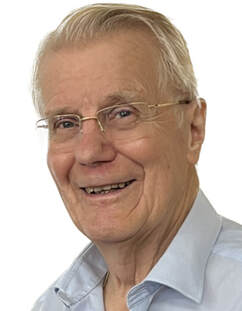
August 17th
Our booked speaker had to cancel at the last minute and member Alan Wallington stepped up to replace him. His subject was Four Exhibitions and the first he covered was the 1851 ‘Great Exhibition of the Works of Industry of All Nations’. Prince Albert got behind the idea and Henry Cole became the prime organiser. The Duke of Wellington suggested Hyde Park as the venue and Joseph Paxton designed a magnificent cast iron and glass exhibition hall, called by all the “Crystal Palace”. The cost was £79,800 and 5,000 navies built it. Queen Victoria opened the exhibition on May 1st 1951. There were many exhibits from Britain and around the Empire. Over 6 million visitors visited before it closed in October and there was a profit of £186,000 used the build the Royal Albert Hall, the V&A Museum, the Natural History Museum and the Science Museum. Shortly after the exhibition closed the building was moved to Sydenham and burnt down in 1936.
The second exhibition was nearer home and in 1893 the 'Bristol Industrial and Fine Arts Exhibition' opened in a temporary building on the city centre. It cost £11,000 and was lit by gas and electric lights with the first electric clock in Bristol. 500.000 visited and it made a profit of £2.200 given to local charities. There is a memorial water fountain on the centre near the cenotaph.
In 1914 the 'Bristol International Exhibition' opened on Ashton Meadows, served by two railway stations, it covered 30 acres by the River Avon. There were several exhibition halls including an International Pavilion and a music hall able to host a choir of 1,200 singers and an audience of 4,000. There was a large funfair, hall of mirrors and building representing Shakespeare's England. When it closed after 6 months it became the barracks for the Gloucester regiment and is now the site of the dog section of Avon and Somerset Constabulary.
The last exhibition was one remembered by many members, the '1951 Festival of Britain'. It ran from May to September on the South Bank of the Thames. There were 27 pavilions and major features included the Dome of Discovery, the Skylon and the Festival Hall. Many pubs and restaurants catered for the visitors. Festival Director-General Gerald Barry declared: “1951 should be a year of fun, fantasy and colour.” The Festival Gardens in Battersea Park provided all three with rides and a phantasy railway designed by Rowland Emett. Special stamps were issued together with lots of souvenirs. The Royal Festival Hall and a small floor plaque recording where the Skylon stood are all that remains, unlike the buildings and facilities left from the 1851 exhibition.
Our booked speaker had to cancel at the last minute and member Alan Wallington stepped up to replace him. His subject was Four Exhibitions and the first he covered was the 1851 ‘Great Exhibition of the Works of Industry of All Nations’. Prince Albert got behind the idea and Henry Cole became the prime organiser. The Duke of Wellington suggested Hyde Park as the venue and Joseph Paxton designed a magnificent cast iron and glass exhibition hall, called by all the “Crystal Palace”. The cost was £79,800 and 5,000 navies built it. Queen Victoria opened the exhibition on May 1st 1951. There were many exhibits from Britain and around the Empire. Over 6 million visitors visited before it closed in October and there was a profit of £186,000 used the build the Royal Albert Hall, the V&A Museum, the Natural History Museum and the Science Museum. Shortly after the exhibition closed the building was moved to Sydenham and burnt down in 1936.
The second exhibition was nearer home and in 1893 the 'Bristol Industrial and Fine Arts Exhibition' opened in a temporary building on the city centre. It cost £11,000 and was lit by gas and electric lights with the first electric clock in Bristol. 500.000 visited and it made a profit of £2.200 given to local charities. There is a memorial water fountain on the centre near the cenotaph.
In 1914 the 'Bristol International Exhibition' opened on Ashton Meadows, served by two railway stations, it covered 30 acres by the River Avon. There were several exhibition halls including an International Pavilion and a music hall able to host a choir of 1,200 singers and an audience of 4,000. There was a large funfair, hall of mirrors and building representing Shakespeare's England. When it closed after 6 months it became the barracks for the Gloucester regiment and is now the site of the dog section of Avon and Somerset Constabulary.
The last exhibition was one remembered by many members, the '1951 Festival of Britain'. It ran from May to September on the South Bank of the Thames. There were 27 pavilions and major features included the Dome of Discovery, the Skylon and the Festival Hall. Many pubs and restaurants catered for the visitors. Festival Director-General Gerald Barry declared: “1951 should be a year of fun, fantasy and colour.” The Festival Gardens in Battersea Park provided all three with rides and a phantasy railway designed by Rowland Emett. Special stamps were issued together with lots of souvenirs. The Royal Festival Hall and a small floor plaque recording where the Skylon stood are all that remains, unlike the buildings and facilities left from the 1851 exhibition.
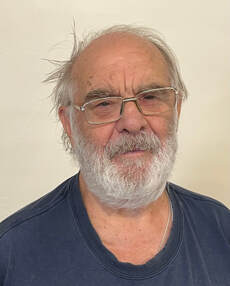
August 3rd
Our speakers usually arrive with lap top and projector but Keith Nickless came with a box of non-electronic gear. He then gave us a short introduction to ‘Traditional Games’. Many of them go back to medieval times. Archery is a good example. Young men at the age of only 5 or 6 began the long training to become a long bow archer, which lasted until they were over 20. The English long bow was a very efficient weapon able to discharge over 60 arrows a minute. The crossbow was invented by the Chinese but the English crossbow was developed in the 12 century. It had a much slower rate of fire and a user could be trained much quicker. Both the longbow and the crossbow were superseded by the flintlock gun. Following the talk Keith set up games for us to try. Indoor bowls, curling, table skittles and a plastic crossbow proved popular. It is the first time all members of the meeting had been persuaded to get up from their seats and join in. A most enjoyable session. Do look at the Social/Gallery page for pictures of us in action.
Our speakers usually arrive with lap top and projector but Keith Nickless came with a box of non-electronic gear. He then gave us a short introduction to ‘Traditional Games’. Many of them go back to medieval times. Archery is a good example. Young men at the age of only 5 or 6 began the long training to become a long bow archer, which lasted until they were over 20. The English long bow was a very efficient weapon able to discharge over 60 arrows a minute. The crossbow was invented by the Chinese but the English crossbow was developed in the 12 century. It had a much slower rate of fire and a user could be trained much quicker. Both the longbow and the crossbow were superseded by the flintlock gun. Following the talk Keith set up games for us to try. Indoor bowls, curling, table skittles and a plastic crossbow proved popular. It is the first time all members of the meeting had been persuaded to get up from their seats and join in. A most enjoyable session. Do look at the Social/Gallery page for pictures of us in action.

July 20th
Alan Clarke studied the 'Temperance Societies in Victorian England' as part of research for the Open University. He had many tales to tell about the development of temperance starting pre-Victorian times with scenes depicted by William Hogarth including ‘Beer Street’ and ‘Gin Lane’ in 1751. Alcohol was often purer than the available drinking water. In the early 1800’s calling for temperance was moderate and in 1832 the Bristol & Clifton Temperance Society allowed moderate consumption of alcohol. Many of the early societies met in rooms above pubs but in the later 1800’s they became more severe in the damnation of alcohol. They grew in influence and some of the larger societies built their own meeting places, often sharing with other like-minded organisations. Temperance hotels were opened, many near Temple Meads station. In 1850 Fry’s opened coffee houses to replicate pubs without alcohol and by 1884 over 100 were in existence. The ‘Pledge’ was introduced in 1887 and many families encouraged members to commit to it. The number of societies increased and 40 were listed in the 1914 Kelly’s directory but as the 1900’s progressed so the societies diminished in number and influence.
Alan Clarke studied the 'Temperance Societies in Victorian England' as part of research for the Open University. He had many tales to tell about the development of temperance starting pre-Victorian times with scenes depicted by William Hogarth including ‘Beer Street’ and ‘Gin Lane’ in 1751. Alcohol was often purer than the available drinking water. In the early 1800’s calling for temperance was moderate and in 1832 the Bristol & Clifton Temperance Society allowed moderate consumption of alcohol. Many of the early societies met in rooms above pubs but in the later 1800’s they became more severe in the damnation of alcohol. They grew in influence and some of the larger societies built their own meeting places, often sharing with other like-minded organisations. Temperance hotels were opened, many near Temple Meads station. In 1850 Fry’s opened coffee houses to replicate pubs without alcohol and by 1884 over 100 were in existence. The ‘Pledge’ was introduced in 1887 and many families encouraged members to commit to it. The number of societies increased and 40 were listed in the 1914 Kelly’s directory but as the 1900’s progressed so the societies diminished in number and influence.
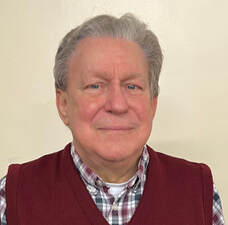
July 7th
Chris Bigg is a regular and favourite speaker for us. This time his subject was ‘Guilty Pleasures’. We were not sure what these would be but he quickly told us not to be too excited, it was about manufacturing in Bristol. Tobacco, Beer and Chocolate were the “pleasures”. WD & HO Wills started in Castle Street in 1787 and in the early days produce pipe tobacco. The company opened a new factory in East Street, Bedminster in 1886 and in 1901 merged with seven other tobacco companies to form the Imperial Tobacco Company. In 1974 they moved manufacturing in Bristol to a new facility at Hartcliffe which lasted until 1990. The company was a very benevolent employer pioneering canteens, free medical care, sports facilities and paid holidays. Beer was produced by many small companies from the 1780’s but the most prominent local company was Georges Bristol Brewery, founded in 1788 and based on a site next to Bristol Bridge. At its peak they had 1,459 tied houses but were taken over by Courage Brewery in 1961. In 1991 Courages closed the Bristol site but more recently small ‘micro-breweries’ have continued the brewing tradition ibn Bristol. The story of chocolate in Bristol is dominated by the Fry family who started in 1759 producing a drinking chocolate. It was not until 1847 that the first solid chocolate bar was introduced and in 1873 the first Easter Egg. Fry’s were pioneers in advertising, Five Boys being one of the most famous adverts. In 1918 the company merged with Cadbury’s but the factory in the middle of Bristol became too small with no room for development and in 1924 they moved to Somerdale, Keynsham. Kraft Foods took over Cadburys in 2010 and Somerdale closed in 2011. A detailed and fascinating talk with excellent pictures to accompany it.
Chris Bigg is a regular and favourite speaker for us. This time his subject was ‘Guilty Pleasures’. We were not sure what these would be but he quickly told us not to be too excited, it was about manufacturing in Bristol. Tobacco, Beer and Chocolate were the “pleasures”. WD & HO Wills started in Castle Street in 1787 and in the early days produce pipe tobacco. The company opened a new factory in East Street, Bedminster in 1886 and in 1901 merged with seven other tobacco companies to form the Imperial Tobacco Company. In 1974 they moved manufacturing in Bristol to a new facility at Hartcliffe which lasted until 1990. The company was a very benevolent employer pioneering canteens, free medical care, sports facilities and paid holidays. Beer was produced by many small companies from the 1780’s but the most prominent local company was Georges Bristol Brewery, founded in 1788 and based on a site next to Bristol Bridge. At its peak they had 1,459 tied houses but were taken over by Courage Brewery in 1961. In 1991 Courages closed the Bristol site but more recently small ‘micro-breweries’ have continued the brewing tradition ibn Bristol. The story of chocolate in Bristol is dominated by the Fry family who started in 1759 producing a drinking chocolate. It was not until 1847 that the first solid chocolate bar was introduced and in 1873 the first Easter Egg. Fry’s were pioneers in advertising, Five Boys being one of the most famous adverts. In 1918 the company merged with Cadbury’s but the factory in the middle of Bristol became too small with no room for development and in 1924 they moved to Somerdale, Keynsham. Kraft Foods took over Cadburys in 2010 and Somerdale closed in 2011. A detailed and fascinating talk with excellent pictures to accompany it.
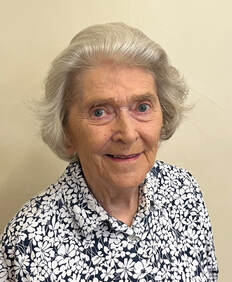
June 29th
It was a Ladies Day and Jean Routley gave us all a nostalgic set of ‘Musical Memories’. Jean started learning the piano when she was seven and by the age of eleven was playing for the Sunday school. She started her memories with some war time melodies, “If I had my way dear”, and “Underneath the lamplight” these were favourites in her younger days. At university she was lucky to come under the instruction of a wonderful music teacher who taught her sight reading of music. The instrument she brought was very versatile and able to reproduce organ, honky-tonk and other styles. An example was the “Cuckoo” played on a harpsichord and we were able to easily identify the repetitive cuckoo sound. In 1969 she achieved an ambition and became organist at the Backwell Church. She told us of the many funerals and weddings she played for. Now-a-days many events have recorded music but “Jesu Joy of Man’s Desiring” by Bach is still a favourite. Jean played several show tunes and finished with a selection from “The Sound of Music”. A most relaxing demonstration of the pianist skill and art.
It was a Ladies Day and Jean Routley gave us all a nostalgic set of ‘Musical Memories’. Jean started learning the piano when she was seven and by the age of eleven was playing for the Sunday school. She started her memories with some war time melodies, “If I had my way dear”, and “Underneath the lamplight” these were favourites in her younger days. At university she was lucky to come under the instruction of a wonderful music teacher who taught her sight reading of music. The instrument she brought was very versatile and able to reproduce organ, honky-tonk and other styles. An example was the “Cuckoo” played on a harpsichord and we were able to easily identify the repetitive cuckoo sound. In 1969 she achieved an ambition and became organist at the Backwell Church. She told us of the many funerals and weddings she played for. Now-a-days many events have recorded music but “Jesu Joy of Man’s Desiring” by Bach is still a favourite. Jean played several show tunes and finished with a selection from “The Sound of Music”. A most relaxing demonstration of the pianist skill and art.
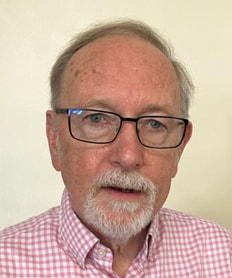
June 15th
We always enjoy talks about railways and the one given by Jim Pimpernell on the 'Avon & Gloucestershire Railway' satisfied us. The railway is better known locally as the Dramway. It served the coal mines in the Coalpit Heath area bringing coal to the River Avon for onward transportation to Bristol, Bath and London before the railways took over the trade. It carried coal to Avon Wharf and Londonderry Wharf on the River Avon. The track was five and a half miles (8.9 km) long, single track, and 4 ft 8+1⁄2 in (1,435 mm) standard gauge. It opened in December 1830 and carried its last traffic in January 1904, having been near-dormant since 1844. It used gravity to bring the coal down to the wharf and horses to return the wagons to the pits. An example of the traffic had 15.000 tons shipped in March 1836 requiring 144 wagons into 10 barges per day. Jim studied the Dramway as part of an MA at Bristol University and was able to tell us in detail about the remaining buildings and the topography of the site. Part of the route is accessible today as a footpath, and signs of much of the route are still visible.
We always enjoy talks about railways and the one given by Jim Pimpernell on the 'Avon & Gloucestershire Railway' satisfied us. The railway is better known locally as the Dramway. It served the coal mines in the Coalpit Heath area bringing coal to the River Avon for onward transportation to Bristol, Bath and London before the railways took over the trade. It carried coal to Avon Wharf and Londonderry Wharf on the River Avon. The track was five and a half miles (8.9 km) long, single track, and 4 ft 8+1⁄2 in (1,435 mm) standard gauge. It opened in December 1830 and carried its last traffic in January 1904, having been near-dormant since 1844. It used gravity to bring the coal down to the wharf and horses to return the wagons to the pits. An example of the traffic had 15.000 tons shipped in March 1836 requiring 144 wagons into 10 barges per day. Jim studied the Dramway as part of an MA at Bristol University and was able to tell us in detail about the remaining buildings and the topography of the site. Part of the route is accessible today as a footpath, and signs of much of the route are still visible.
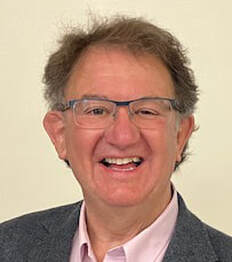
June 1st
Gary Atterton gave an interesting talk on ‘Bedminster Coal – Blood, Sweat and Tears’. It was in two parts, the first part about the history and development of coal mining in Bedminster and the second part about a pit disaster which occurred in Dean Lane Colliery in 1886. The talk and the research backing it up were prompted by the knowledge that in Gary’s family was a long line of miners under the Garland name – many of his ancestors. Seven of them died in pit accidents. Bedminster was part of the Bristol Coalfield and Gary showed from maps that by 1828 it was still very rural. However, with the development of the coalfield the population grew fast and by 1898 was a highly populated urban suburb. The mines were mostly small in nature, some of the prominent ones being Ashton Vale, North Side, Dean Lane, South Liberty and Malago Vale. The relationship between the owners and the miners was a master-servant one, and when accidents occurred the blame was usually applied to the miners. Prominent owners were the Smyth family, and it was estimated that they were taking £600,000 per annum from the mines which they owned, so there was much poverty amongst the miners. By the 1930s, most of the mines had closed. The Dean Lane disaster occurred on 10th September 1886, an explosion which killed 38 miners with many injured. Only the day before, an inspection by some seniors declared that there was no gas and it was safe to operate the mine. Gary gave an hour-by-hour account of the killed and injured as they were brought up by the mine’s cage to those family, friends and fellow miners gathered at the entrance. Included were Garlands, including a William Garland who had started only the day before. The impact on Bristol was enormous and the miners decided to strike for better pay and conditions. Large sums of money were raised in Bristol for the miners’ families. The subsequent inquest came to the amazing conclusion that there was no gas and it was just an accident! A good illustrated talk which filled a gap in our knowledge of life south of the river.
Gary Atterton gave an interesting talk on ‘Bedminster Coal – Blood, Sweat and Tears’. It was in two parts, the first part about the history and development of coal mining in Bedminster and the second part about a pit disaster which occurred in Dean Lane Colliery in 1886. The talk and the research backing it up were prompted by the knowledge that in Gary’s family was a long line of miners under the Garland name – many of his ancestors. Seven of them died in pit accidents. Bedminster was part of the Bristol Coalfield and Gary showed from maps that by 1828 it was still very rural. However, with the development of the coalfield the population grew fast and by 1898 was a highly populated urban suburb. The mines were mostly small in nature, some of the prominent ones being Ashton Vale, North Side, Dean Lane, South Liberty and Malago Vale. The relationship between the owners and the miners was a master-servant one, and when accidents occurred the blame was usually applied to the miners. Prominent owners were the Smyth family, and it was estimated that they were taking £600,000 per annum from the mines which they owned, so there was much poverty amongst the miners. By the 1930s, most of the mines had closed. The Dean Lane disaster occurred on 10th September 1886, an explosion which killed 38 miners with many injured. Only the day before, an inspection by some seniors declared that there was no gas and it was safe to operate the mine. Gary gave an hour-by-hour account of the killed and injured as they were brought up by the mine’s cage to those family, friends and fellow miners gathered at the entrance. Included were Garlands, including a William Garland who had started only the day before. The impact on Bristol was enormous and the miners decided to strike for better pay and conditions. Large sums of money were raised in Bristol for the miners’ families. The subsequent inquest came to the amazing conclusion that there was no gas and it was just an accident! A good illustrated talk which filled a gap in our knowledge of life south of the river.
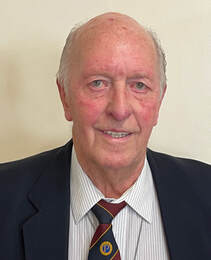
May 18th
We had stories from member Phil Scull in May 2022 when he stepped in at short notice to replace a speaker who was ill. This month he did it again with ‘More Stories of a Proper Copper’. Phil joined the police force in 1958 and retired in1980. When he started there were 27 active police stations, there are now THREE! He wrote about many of his experiences and his son had the privately published as ‘Recollections of a Proper Copper’ and presented him with a copy on his 80th birthday. Some of these stories he regaled us with. One incident he remembers was when he ‘rested’ on the back seat of a parked empty coach. He dozed off and when he woke he was many miles away from his beat. Fortunately the driver did not report his misdemeanour. Phil told stories of when he was an acting sergeant including the time he checked on his team only to find that all five of them were at the hospital nursing babies and feeding them instead of carrying out their duties. Phil is a natural speaker and told of his time as a police officer with humour.
We had stories from member Phil Scull in May 2022 when he stepped in at short notice to replace a speaker who was ill. This month he did it again with ‘More Stories of a Proper Copper’. Phil joined the police force in 1958 and retired in1980. When he started there were 27 active police stations, there are now THREE! He wrote about many of his experiences and his son had the privately published as ‘Recollections of a Proper Copper’ and presented him with a copy on his 80th birthday. Some of these stories he regaled us with. One incident he remembers was when he ‘rested’ on the back seat of a parked empty coach. He dozed off and when he woke he was many miles away from his beat. Fortunately the driver did not report his misdemeanour. Phil told stories of when he was an acting sergeant including the time he checked on his team only to find that all five of them were at the hospital nursing babies and feeding them instead of carrying out their duties. Phil is a natural speaker and told of his time as a police officer with humour.
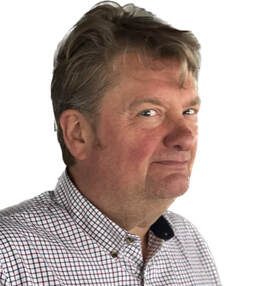
May 4th
Navigation in the Bristol Channel is notoriously difficult but speaker Andy Darlington, a 'Bristol Channel Pilot', made it sound easy. He comes from a seafaring family in Fleetwood and decided to go to sea when he visited a friend of his father who had a cabin to himself, a luxury! He started as a deck boy with Shell, progressing to deck officer and then at the age of 27 gained a Master's license. He spent time sailing all over the world but eventually decided to train as a pilot to stay near the UK. The UK Marine Pilots Association was founded in Bristol by Captain George Cawley in 1884. The law demands that all large ships entering a port require a pilot to ensure local knowledge is available to the captain. Training is on the job, utilising simulator’s and attending a manned model lake near Southampton. The Bristol Pilots were originally from Pill but are now recruited from all over the UK. Early pilots raced to incoming ships to get the business of guiding the ships through the treacherous waters of the Bristol Channel, they developed swift sailing vessels which were used until 1923 when steam driven skiffs came into use. Most of the work of Bristol pilots involve guiding ships into Avonmouth, Royal Portbury and Bristol City docks (via the River Avon). The lock at Portbury is over 40 metres wide and on a flood tide pilots have to swing the ship through 270 degrees before entering. Andy was able to make a complicated story into an understandable talk enjoyed by the audience.
Navigation in the Bristol Channel is notoriously difficult but speaker Andy Darlington, a 'Bristol Channel Pilot', made it sound easy. He comes from a seafaring family in Fleetwood and decided to go to sea when he visited a friend of his father who had a cabin to himself, a luxury! He started as a deck boy with Shell, progressing to deck officer and then at the age of 27 gained a Master's license. He spent time sailing all over the world but eventually decided to train as a pilot to stay near the UK. The UK Marine Pilots Association was founded in Bristol by Captain George Cawley in 1884. The law demands that all large ships entering a port require a pilot to ensure local knowledge is available to the captain. Training is on the job, utilising simulator’s and attending a manned model lake near Southampton. The Bristol Pilots were originally from Pill but are now recruited from all over the UK. Early pilots raced to incoming ships to get the business of guiding the ships through the treacherous waters of the Bristol Channel, they developed swift sailing vessels which were used until 1923 when steam driven skiffs came into use. Most of the work of Bristol pilots involve guiding ships into Avonmouth, Royal Portbury and Bristol City docks (via the River Avon). The lock at Portbury is over 40 metres wide and on a flood tide pilots have to swing the ship through 270 degrees before entering. Andy was able to make a complicated story into an understandable talk enjoyed by the audience.
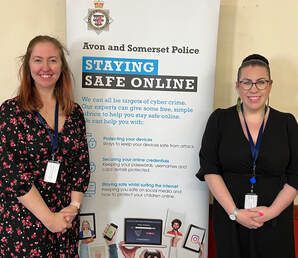
April 20th
It must be said that during rare talks some of our members have been known to fall asleep! Not this time. The talk on 'Fraud and Cyber Crime' by Jordon Coates and Megan Haldene from the Avon & Somerset Constabulary not only kept us awake but frightened some members. Fraud, at 41%, is the largest single cause of reports to the police. Jordon covered fraud and ran through some of the most used scams, giving background and ways of spotting the fraud. She gave us a Golden Rule – “Take 5 Tell 2”. Stop and consider before continuing, many fraudsters urge you to act quickly, but stop and think. If you do get scammed, or even nearly, do not be ashamed, tell others to help them become protected. Megan followed with guidance on getting better protection against Cyber Crime, often through social media. The main message was get a strong and difficult to guess password. Do not use things like date of birth, house number or personal information. She recommended using three random words together with the usual capital, number and upper case. Use a password manager, not a free one as they are often faulty. Victims of cyber fraud sometimes have their system infiltrated and even have their computer hard drive deleted, the answer is to have back-up systems, preferably a second hard drive and even an online backup programme. The last piece of good advice was to always install updates to programmes, remember an update means the programme originator has identified a fault, which scammers quickly try to use. There were more questions than usual, not because the speakers were unclear but because the subject had so many facets. An enlightening talk which gave us many things to consider.
It must be said that during rare talks some of our members have been known to fall asleep! Not this time. The talk on 'Fraud and Cyber Crime' by Jordon Coates and Megan Haldene from the Avon & Somerset Constabulary not only kept us awake but frightened some members. Fraud, at 41%, is the largest single cause of reports to the police. Jordon covered fraud and ran through some of the most used scams, giving background and ways of spotting the fraud. She gave us a Golden Rule – “Take 5 Tell 2”. Stop and consider before continuing, many fraudsters urge you to act quickly, but stop and think. If you do get scammed, or even nearly, do not be ashamed, tell others to help them become protected. Megan followed with guidance on getting better protection against Cyber Crime, often through social media. The main message was get a strong and difficult to guess password. Do not use things like date of birth, house number or personal information. She recommended using three random words together with the usual capital, number and upper case. Use a password manager, not a free one as they are often faulty. Victims of cyber fraud sometimes have their system infiltrated and even have their computer hard drive deleted, the answer is to have back-up systems, preferably a second hard drive and even an online backup programme. The last piece of good advice was to always install updates to programmes, remember an update means the programme originator has identified a fault, which scammers quickly try to use. There were more questions than usual, not because the speakers were unclear but because the subject had so many facets. An enlightening talk which gave us many things to consider.
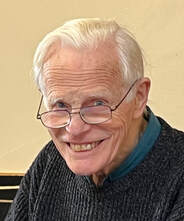
April 6th
The meeting did not begin comfortably for speaker Robert Cutts as he had technical problems with his presentation, sorted out just in time for the meeting to start. He then commenced his talk entitled 'Lima to Punta Arenus'. Unfortunately we had a problem with the blackout screen and too much sunlight came in and made many of the slides difficult to see. Robert started with a potted history of Chile and its politics then bravely battled on to give us a tale of travel down Chile with trips into Bolivia. With his wife Pauline he travelled with a group of six younger people visiting Lake Titicaca, La Paz, a tin mine in Potosi and the Valley of the Moon in the Atacama Desert which has served as the moon in several films. To reach Santiago it was necessary to move into Argentina as the Andes Mountains make travel south too difficult in Chile. Santiago is the capital of Chile and the largest city. They visited a monument to the 2279 victims of the Pinochet rule and a statue of Bernardo O’Higgins who is revered as the person who liberated Chile from the Spanish colonial rule in the early 1800’s. A talk with a mixture of history and travel we enjoyed despite the problems.
The meeting did not begin comfortably for speaker Robert Cutts as he had technical problems with his presentation, sorted out just in time for the meeting to start. He then commenced his talk entitled 'Lima to Punta Arenus'. Unfortunately we had a problem with the blackout screen and too much sunlight came in and made many of the slides difficult to see. Robert started with a potted history of Chile and its politics then bravely battled on to give us a tale of travel down Chile with trips into Bolivia. With his wife Pauline he travelled with a group of six younger people visiting Lake Titicaca, La Paz, a tin mine in Potosi and the Valley of the Moon in the Atacama Desert which has served as the moon in several films. To reach Santiago it was necessary to move into Argentina as the Andes Mountains make travel south too difficult in Chile. Santiago is the capital of Chile and the largest city. They visited a monument to the 2279 victims of the Pinochet rule and a statue of Bernardo O’Higgins who is revered as the person who liberated Chile from the Spanish colonial rule in the early 1800’s. A talk with a mixture of history and travel we enjoyed despite the problems.
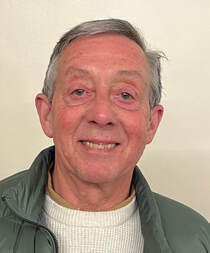
March30th
This was the third Thursday of the month so was a ‘Ladies Day’. We always have our ladies at the normal meetings but make a special effort for ladies day. The speaker delighted us all with guidance on gardening in a talk entitled ‘Ready, Steady Go for Summer’. John studied horticulture at Bath University and spent over 35 years as a garden centre manager where he answered many questions from the customers. He retired seven years ago but now passes on his experience in talks. He covered pruning in the first section of his talk, his main message was “cut back and let the sun shine in”. Soil composition included advice on improving the growing quality of soil with the use of compost and feeding the ground. He recommended that boarders should be sometimes dug out and the larger plant split and replanted, giving space for easy weeding and growth. He included many simple points to make gardening more effective including keeping a tidy shed and cleaning glasshouse windows. A rousing talk giving us plenty to think about for the spring and summer.
This was the third Thursday of the month so was a ‘Ladies Day’. We always have our ladies at the normal meetings but make a special effort for ladies day. The speaker delighted us all with guidance on gardening in a talk entitled ‘Ready, Steady Go for Summer’. John studied horticulture at Bath University and spent over 35 years as a garden centre manager where he answered many questions from the customers. He retired seven years ago but now passes on his experience in talks. He covered pruning in the first section of his talk, his main message was “cut back and let the sun shine in”. Soil composition included advice on improving the growing quality of soil with the use of compost and feeding the ground. He recommended that boarders should be sometimes dug out and the larger plant split and replanted, giving space for easy weeding and growth. He included many simple points to make gardening more effective including keeping a tidy shed and cleaning glasshouse windows. A rousing talk giving us plenty to think about for the spring and summer.

March 16th
David Cheesley has been a frequent speaker for us and this time his subject was ‘Picture Postcards’. He has been collecting Postcards for many years and the talk covered some of his favourite subjects. The postal system started in England in 1840 and early cards were blank but by 1870 pictures started to appear. It was in 1902 the style of a picture or drawing on one side and space for the address and message on the other was developed and continues to this day. One subject was seaside images and pictures of cards were accompanied by George Formby singing “A little Bit of Blackpool Rock”. Images from Weston Super Mare including the pool with the 40ft diving platform brought back memories. A set of WW1 cards were shown to “Hang out the Washing on the Siegfried Line” and other music from the period. Many cards from our locality were shown including charabanc trips to Cheddar and Portishead. Some of the most decorative cards were silk embroidered from the WW2 period. David finished with a collection of comic cards typically chosen to send from holiday with optimistic messages about the weather. An entertaining and thought provoking talk.
David Cheesley has been a frequent speaker for us and this time his subject was ‘Picture Postcards’. He has been collecting Postcards for many years and the talk covered some of his favourite subjects. The postal system started in England in 1840 and early cards were blank but by 1870 pictures started to appear. It was in 1902 the style of a picture or drawing on one side and space for the address and message on the other was developed and continues to this day. One subject was seaside images and pictures of cards were accompanied by George Formby singing “A little Bit of Blackpool Rock”. Images from Weston Super Mare including the pool with the 40ft diving platform brought back memories. A set of WW1 cards were shown to “Hang out the Washing on the Siegfried Line” and other music from the period. Many cards from our locality were shown including charabanc trips to Cheddar and Portishead. Some of the most decorative cards were silk embroidered from the WW2 period. David finished with a collection of comic cards typically chosen to send from holiday with optimistic messages about the weather. An entertaining and thought provoking talk.
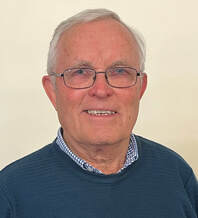
March 2nd
The club is always keen to hear talks about railways and Paul Gregory provided us with one about a line most of us had never heard of . ‘The History of the Weston, Clevedon and Portishead Light Railway’ was most interesting. In 1884 it was proposed to link the three coastal towns with a standard gauge track and building commenced in 1887 but was not completed all the way to Portishead until 1907. The track was 14 miles long with 19 stations, many of them just stops near villages and roads. A journey would take about an hour. Paul was a treasure house of detail about the engines and rolling stock. During the life of the railway it purchased most of the 17 steam engines second hand. Paul showed us many images from the life of the railway including some fascinating pictures of the railway passing right through the centre of Clevedon before a bypass track was built. The line eventually closed in 1940. The detail included in Paul’s talk was impressive and too much to include in this brief description, do look at the WC&PR web site at https://wcpr.org.uk/index.html.
The club is always keen to hear talks about railways and Paul Gregory provided us with one about a line most of us had never heard of . ‘The History of the Weston, Clevedon and Portishead Light Railway’ was most interesting. In 1884 it was proposed to link the three coastal towns with a standard gauge track and building commenced in 1887 but was not completed all the way to Portishead until 1907. The track was 14 miles long with 19 stations, many of them just stops near villages and roads. A journey would take about an hour. Paul was a treasure house of detail about the engines and rolling stock. During the life of the railway it purchased most of the 17 steam engines second hand. Paul showed us many images from the life of the railway including some fascinating pictures of the railway passing right through the centre of Clevedon before a bypass track was built. The line eventually closed in 1940. The detail included in Paul’s talk was impressive and too much to include in this brief description, do look at the WC&PR web site at https://wcpr.org.uk/index.html.
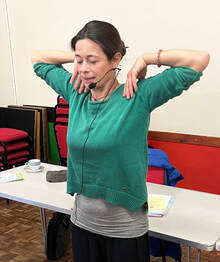
- February 16th
- Georgina Green arrived well dressed for her talk about 'Tai Chi' and mindfulness. She explained that Tai Chi, is a gentle form of exercise and martial art that promotes and improves health. She explained how it had developed in the 1970’s from a Chinese martial art into a western version incorporating slow and deliberate moves which concentrate the mind. One of the objectives is to create stillness and space for the mind and body to relax. A key aspect of Tai Chi philosophy is to work with the flow of yin (softness) and yang (hardness) elements. When two forces push each other with equal force, neither side moves. Georgina said it was not possible to teach Tai Chi in such a short time but was able to get us all on our feet to try a few moves. Certainly an eye-opening experience for us.
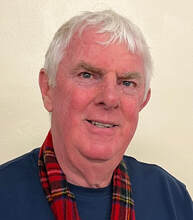
February 2nd
Peter Chaplin spent 28 years in the police and spent 20 years of this time in the Police Dog Section of Avon & Somerset Police. The police dogs are used for three main purposes. First arresting people, secondly searching for missing persons and lastly the location of stolen property. In 1978 he had his first dog, Dena. She was useless and spent 8 months with no successful events. One story was about a burglar trapped in a fur shop in Broadmead, Dena was so afraid to go in after the culprit that Peter had to catch the man himself. His second dog, Major, became his favourite and he has written a book about him called ‘A Job with a Bite’. He took on Major when he was an 8 month old puppy and he lived with his family getting on well with his three daughters. Once trained they became a formidable team. In five years he bit 34 people and assisted in many arrests. His teeth became quite blunt as he had the habit of carrying bricks and chewing anything hard. In the 14 years after major Peter had another 4 dogs but none of them reached the standard of Major. Clearly here was a man in love with his work and his dogs, especially Major.
Peter Chaplin spent 28 years in the police and spent 20 years of this time in the Police Dog Section of Avon & Somerset Police. The police dogs are used for three main purposes. First arresting people, secondly searching for missing persons and lastly the location of stolen property. In 1978 he had his first dog, Dena. She was useless and spent 8 months with no successful events. One story was about a burglar trapped in a fur shop in Broadmead, Dena was so afraid to go in after the culprit that Peter had to catch the man himself. His second dog, Major, became his favourite and he has written a book about him called ‘A Job with a Bite’. He took on Major when he was an 8 month old puppy and he lived with his family getting on well with his three daughters. Once trained they became a formidable team. In five years he bit 34 people and assisted in many arrests. His teeth became quite blunt as he had the habit of carrying bricks and chewing anything hard. In the 14 years after major Peter had another 4 dogs but none of them reached the standard of Major. Clearly here was a man in love with his work and his dogs, especially Major.
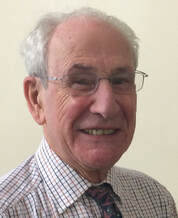
January 19th
Bernard Merrick is an accomplished photographer and a keen observer of the many places he has visited with his wife. This talk was about the ‘Glories of Venice’. He promised us it would not be a holiday travel story and so it turned out. He told us a little of the history of Venice, how it was founded and built on piles driven through the mud into the underlying clay. A look at some of the canals was accompanied by Vivaldi music. He described how food was brought to places and rubbish removed, all by boat. The provision of clean water was difficult and the Venetians developed a system of collecting rainwater and filtering it into wells. The many gondolas are 36 feet long and 4.5 feet wide. They are constructed to a common design and the gondoliers have to undergo ten years of training, there are currently 400 of them, many with long family traditions. Photographs of costumes from the Venice Carnival, revived in 1979, gave us a colourful finale to the talk. Bernard took many of the pictures early in the morning before the tourists arrived from the cruise liners; he recommended this to anyone visiting Venice.
Bernard Merrick is an accomplished photographer and a keen observer of the many places he has visited with his wife. This talk was about the ‘Glories of Venice’. He promised us it would not be a holiday travel story and so it turned out. He told us a little of the history of Venice, how it was founded and built on piles driven through the mud into the underlying clay. A look at some of the canals was accompanied by Vivaldi music. He described how food was brought to places and rubbish removed, all by boat. The provision of clean water was difficult and the Venetians developed a system of collecting rainwater and filtering it into wells. The many gondolas are 36 feet long and 4.5 feet wide. They are constructed to a common design and the gondoliers have to undergo ten years of training, there are currently 400 of them, many with long family traditions. Photographs of costumes from the Venice Carnival, revived in 1979, gave us a colourful finale to the talk. Bernard took many of the pictures early in the morning before the tourists arrived from the cruise liners; he recommended this to anyone visiting Venice.

January 6th
An interesting illustrated evening presented by Chris Bigg on 'The Heart of Bristol in Pictures'. Chris started by showing several old maps which illustrated the growth of the centre of the city. The Bristol Bridge featured in the maps with paintings and photographs showing the development of the bridge from a crossing with houses and shops on it to the current bridge with an extra pedestrian section added to increase the width. The history of the Bristol Castle was explained but very few sections remain to be seen on Castle Green. Much of the centre was destroyed in a German raid in 1940 and large areas were not rebuilt for many years. The redevelopment of the Broadmead area including the infamous Coop building in Fairfax Street brought back memories of the Paternoster lift which you had to jump on and off while it continued to move. Corn Street, St Nicholas Market and Temple Church were other site well illustrated. Some of the older pictures were taken from the internet but they were well coordinated with Chris’s own photographs. A wonderful trip down memory lane.
An interesting illustrated evening presented by Chris Bigg on 'The Heart of Bristol in Pictures'. Chris started by showing several old maps which illustrated the growth of the centre of the city. The Bristol Bridge featured in the maps with paintings and photographs showing the development of the bridge from a crossing with houses and shops on it to the current bridge with an extra pedestrian section added to increase the width. The history of the Bristol Castle was explained but very few sections remain to be seen on Castle Green. Much of the centre was destroyed in a German raid in 1940 and large areas were not rebuilt for many years. The redevelopment of the Broadmead area including the infamous Coop building in Fairfax Street brought back memories of the Paternoster lift which you had to jump on and off while it continued to move. Corn Street, St Nicholas Market and Temple Church were other site well illustrated. Some of the older pictures were taken from the internet but they were well coordinated with Chris’s own photographs. A wonderful trip down memory lane.
December 15th
Graham Walker had planned and created a 'Desert Island Discs' programme but unfortunately was too ill to present it on the day. His PowerPoint presentation was shown by Alan Wallington using Graham’s script. The presenters and their chosen music were:
Eric Arnold – Barcelona by Freddy Mercury and Monserrat Cabal
Roger Evans – Apache by the Shadows
Malcolm Smith – Adagio by Thomas Alboni
Mike Bendrey – Three Blind Mice by John Dankworth
Peter Blackmore – A Lark Ascending by Vaughan Williams
John Turner – The Blue Danube from 2001 a Space Odyssey
Dave Moore – The Girl that I Marry by Howard Keel
Ken Spilman – A Wonderful Life by Louis Armstrong
A great variety of excellent music accompanied by videos chosen by Graham.
See the gallery below
December 1st
Our Annual General Meeting after which a group photograph was taken.
See the News page.
Our Annual General Meeting after which a group photograph was taken.
See the News page.
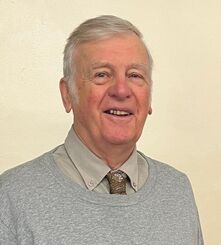
November 17th
Steve Goddard is one of the few people who have visited North Korea' frequently. He has been visiting since 2002 and had many fascinating stories to tell. He started with a Korean song video which apparently was a welcome to us. He gave us a potted history of the Democratic People’s Republic of Korea (DPRK), the official title of North Korea as opposed to the Republic of Korea (ROK, South Korea). At the end of World War II the Soviet Union and the United States agreed to partition Korea along the 38th parallel, with the Soviets occupying the north and the Americans occupying the south. Tensions between the two resulted in the outbreak of the Korean War in 1950. The war ended in a stalemate in 1953, but without a formalised peace treaty. It is estimated that over 3.5 million people were killed or injured during the conflict and the two countries are still officially at war. Steve’s visits were on behalf of a Christian outreach charity. He has visited orphanages and schools and told us of the work carried out. A colourful set of photographs and videos accompanied the talk including extracts for a recent BBC programme when Michael Palin visited North Korea. He often travelled by train and showed us the poor condition of the rail system with little regard for health and safety. In the capital Pyongyang he stayed in a fairly modern hotel which was mostly unoccupied with many floors unused. The scenery was varied and often spectacular but conditions outside the main cities was poor. He emphasised the difference between the Korean people, when able to contact then, with the officialdom and state control exercised at nearly all times. Steve was able to give us a glimpse into an unknown country.
Steve Goddard is one of the few people who have visited North Korea' frequently. He has been visiting since 2002 and had many fascinating stories to tell. He started with a Korean song video which apparently was a welcome to us. He gave us a potted history of the Democratic People’s Republic of Korea (DPRK), the official title of North Korea as opposed to the Republic of Korea (ROK, South Korea). At the end of World War II the Soviet Union and the United States agreed to partition Korea along the 38th parallel, with the Soviets occupying the north and the Americans occupying the south. Tensions between the two resulted in the outbreak of the Korean War in 1950. The war ended in a stalemate in 1953, but without a formalised peace treaty. It is estimated that over 3.5 million people were killed or injured during the conflict and the two countries are still officially at war. Steve’s visits were on behalf of a Christian outreach charity. He has visited orphanages and schools and told us of the work carried out. A colourful set of photographs and videos accompanied the talk including extracts for a recent BBC programme when Michael Palin visited North Korea. He often travelled by train and showed us the poor condition of the rail system with little regard for health and safety. In the capital Pyongyang he stayed in a fairly modern hotel which was mostly unoccupied with many floors unused. The scenery was varied and often spectacular but conditions outside the main cities was poor. He emphasised the difference between the Korean people, when able to contact then, with the officialdom and state control exercised at nearly all times. Steve was able to give us a glimpse into an unknown country.
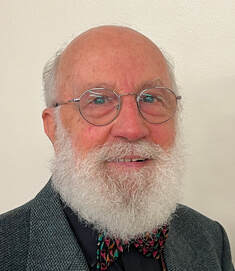
November 3rd
Paul Evans has entertained us before and he did not disappoint this time. The title of his talk was ‘An Interlude of Humour’ and it proved to be so. He gave us a series of readings, poems and stories about his life in Wickwar. The first poem by Thomas Masefield was “Sea Fever” starting with the well-known words “I must go down to the seas again to the lonely sea and the sky” This classic contrasted with a rendition of “Albert’s Return” about young Albert and his stick with a horse’s head handle. His poems were varied and amusing with several coming from Wickwar residents including “When I” about what it was like when I were a lad . He finished with “A bit of binder string” written by one of the Wickwar locals, Lou. All the items were performed with enthusiasm and in a variety of accents. Truly ‘an interlude of humour’.
Paul Evans has entertained us before and he did not disappoint this time. The title of his talk was ‘An Interlude of Humour’ and it proved to be so. He gave us a series of readings, poems and stories about his life in Wickwar. The first poem by Thomas Masefield was “Sea Fever” starting with the well-known words “I must go down to the seas again to the lonely sea and the sky” This classic contrasted with a rendition of “Albert’s Return” about young Albert and his stick with a horse’s head handle. His poems were varied and amusing with several coming from Wickwar residents including “When I” about what it was like when I were a lad . He finished with “A bit of binder string” written by one of the Wickwar locals, Lou. All the items were performed with enthusiasm and in a variety of accents. Truly ‘an interlude of humour’.
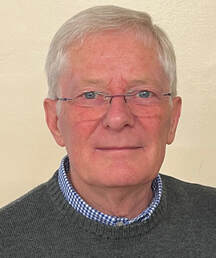
October 20th
Alan Jocelyn is speaker who really knows his subject! 'The Bristol Riots of 1831' were comprehensively covered with a fine selection of images. He started by outlining the conditions in the 1930’s There was a cost of living crisis, a population increase, mass starvation, and the country had a large national debt following the recent wars with France. The government had introduced Income Tax to try to recover the nation’s finances. The prime reason for the riots was that there were large discrepancies in the size of constituencies of the lower house, some very small constituencies had two MPs but large urban areas such as Manchester had none. In March 1831 the whig party attempted to introduce a Reform Bill but it was defeated in the House of Lords. The rejection of the bill resulted in serious disturbances in many towns and cities. The Bristol Recorder (senior judge) Charles Wetherell was a noted opponent of the Reform Bill and was due to attend the court of assizes in Bristol at the end of October. On the 29th of October Wetherell's entrance into the city had been changed for security reasons but soon became common knowledge and he was met by a mob upon his arrival. Things soon got out of hand and Colonel Brereton of the 14th Dragoons was called in to try to control the mob. There was much looting and many buildings were set on fire, it is said you could see the flames from Newport. The riots continued through night but eventually the 3rd Dragoons charged the rioters in Queen’s Square and brought the situation under control. 102 rioters were tried in January 1832. 31 were sentences to death but clemency was granted to all bar four of those sentenced to death after a petition of 10,000 names was presented. Colonel Brereton was court marshalled but committed suicide before the trial ended. The Third Reform Bill, known afterwards as the Great Reform Act, finally passed in 1832. An amazing history lesson about Bristol’s past.
Alan Jocelyn is speaker who really knows his subject! 'The Bristol Riots of 1831' were comprehensively covered with a fine selection of images. He started by outlining the conditions in the 1930’s There was a cost of living crisis, a population increase, mass starvation, and the country had a large national debt following the recent wars with France. The government had introduced Income Tax to try to recover the nation’s finances. The prime reason for the riots was that there were large discrepancies in the size of constituencies of the lower house, some very small constituencies had two MPs but large urban areas such as Manchester had none. In March 1831 the whig party attempted to introduce a Reform Bill but it was defeated in the House of Lords. The rejection of the bill resulted in serious disturbances in many towns and cities. The Bristol Recorder (senior judge) Charles Wetherell was a noted opponent of the Reform Bill and was due to attend the court of assizes in Bristol at the end of October. On the 29th of October Wetherell's entrance into the city had been changed for security reasons but soon became common knowledge and he was met by a mob upon his arrival. Things soon got out of hand and Colonel Brereton of the 14th Dragoons was called in to try to control the mob. There was much looting and many buildings were set on fire, it is said you could see the flames from Newport. The riots continued through night but eventually the 3rd Dragoons charged the rioters in Queen’s Square and brought the situation under control. 102 rioters were tried in January 1832. 31 were sentences to death but clemency was granted to all bar four of those sentenced to death after a petition of 10,000 names was presented. Colonel Brereton was court marshalled but committed suicide before the trial ended. The Third Reform Bill, known afterwards as the Great Reform Act, finally passed in 1832. An amazing history lesson about Bristol’s past.
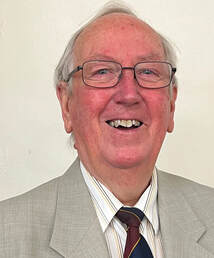
October 6th
We had Gary Gowens speak to us in January about the Roman Navy in Britain and a welcome return this time gave us an insight into the 'Golden Age of Roman Villas'. He started by outlining the background to the period in the late 3rd and 4th centuries A.D. Britain was a very wealthy part of the Roman empire and became the breadbasket of Europe with excellent manufacturing facilities and abundant minerals. This wealth was displayed in the building and decorating of many luxury villas, over 100 have been discovered and investigated. He described several with good slides to illustrate a range of sites. Fishbourne Villa near Chichester was shown in great detail. There have been over 60 mosaics uncovered and we were shown details of the amazing scenes depicted including Cupid on his Dolphin. The villa was burnt down in 270 A.D. but the excavations revealed a very effective central heating system, a hypocaust, and extensive gardens, both formal and kitchen. A local villa at Gatcombe was destroyed in the 1800’s but the estate survived with an extensive industrial area, which was excavated in the 1970’s. Gary finished his talk with a series of slides showing what the interior of such villas would probably have looked like. The reconstructions were based on evidence found in the villas of Pompeii, destroyed by the eruption of Mount Vesuvius when the ash covered the site and preserved much detail. One detail which intrigued us was a flushing toilet! Clearly Gary has an encyclopaedic knowledge on the Roman period and speaks with enthusiasm and clarity on it.
We had Gary Gowens speak to us in January about the Roman Navy in Britain and a welcome return this time gave us an insight into the 'Golden Age of Roman Villas'. He started by outlining the background to the period in the late 3rd and 4th centuries A.D. Britain was a very wealthy part of the Roman empire and became the breadbasket of Europe with excellent manufacturing facilities and abundant minerals. This wealth was displayed in the building and decorating of many luxury villas, over 100 have been discovered and investigated. He described several with good slides to illustrate a range of sites. Fishbourne Villa near Chichester was shown in great detail. There have been over 60 mosaics uncovered and we were shown details of the amazing scenes depicted including Cupid on his Dolphin. The villa was burnt down in 270 A.D. but the excavations revealed a very effective central heating system, a hypocaust, and extensive gardens, both formal and kitchen. A local villa at Gatcombe was destroyed in the 1800’s but the estate survived with an extensive industrial area, which was excavated in the 1970’s. Gary finished his talk with a series of slides showing what the interior of such villas would probably have looked like. The reconstructions were based on evidence found in the villas of Pompeii, destroyed by the eruption of Mount Vesuvius when the ash covered the site and preserved much detail. One detail which intrigued us was a flushing toilet! Clearly Gary has an encyclopaedic knowledge on the Roman period and speaks with enthusiasm and clarity on it.
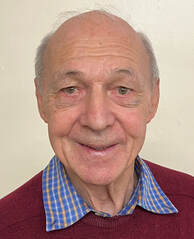
September 29th
Brian Griffiths is an enthusiastic cyclist but he told us he had never cycled in Italy however he has made two trips to Italy and spent the next 40 minutes telling us about 'Italy Bellisimo'. His first visit was to Sorrento in the Region of Campania where he commented on the many thousands of scooters parked everywhere. Sorrento is famed for its sea cliffs, the town's steep slopes look out over azure waters to Ischia, Capri and the Bay of Naples. The most famous visitor attraction is Pompeii, visited on a short day out. The city was destroyed by the eruption of Mount Vesuvius in 79A.D. He was able to show us some fascinating slides of the ruins and illustrated images showing what they would have looked like before the destruction. In 2014 Brian and his wife visited Florence and Tuscany, many excellent slides charted their visit. The Pont Vecchio, a medieval bridge with its shops upon it is now a pedestrian precinct with expensive shops where butchers, bakers and other shops once traded. They much enjoyed a visit to a Leonardo da Vinci museum where many of his inventions have been recreated, including a wooden bicycle, much to Brian’s delight. A captivating glimpse of Italy.
Brian Griffiths is an enthusiastic cyclist but he told us he had never cycled in Italy however he has made two trips to Italy and spent the next 40 minutes telling us about 'Italy Bellisimo'. His first visit was to Sorrento in the Region of Campania where he commented on the many thousands of scooters parked everywhere. Sorrento is famed for its sea cliffs, the town's steep slopes look out over azure waters to Ischia, Capri and the Bay of Naples. The most famous visitor attraction is Pompeii, visited on a short day out. The city was destroyed by the eruption of Mount Vesuvius in 79A.D. He was able to show us some fascinating slides of the ruins and illustrated images showing what they would have looked like before the destruction. In 2014 Brian and his wife visited Florence and Tuscany, many excellent slides charted their visit. The Pont Vecchio, a medieval bridge with its shops upon it is now a pedestrian precinct with expensive shops where butchers, bakers and other shops once traded. They much enjoyed a visit to a Leonardo da Vinci museum where many of his inventions have been recreated, including a wooden bicycle, much to Brian’s delight. A captivating glimpse of Italy.
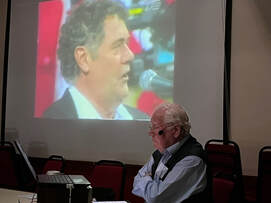
September 15th
Graham Walker again stepped in to fill a vacant slot in our programme. He entertained us for a rousing 40 minutes with 'Music from the Land of Songs'. Graham spent a lot of time in Wales during one of his jobs and explained that he had a love of the country and its music. His first video offering was a taster for things to come – Max Boyce at the 1999 World Cup leading the Welsh rugby fans in a magnificent rendition of “Hymns and Arias”. Harry Secombe gave us “How Great Thou Art” and there followed a collection of videos covering many styles of music. We enjoyed some wonderful talent and two standout performances were by Katherine Jenkins and Mary Hopkin, both with beautiful diction, a contrast to many of today’s so called singers. Graham finished as he started with Max Boyce, this time singing “The Glory that was Rome”
Graham Walker again stepped in to fill a vacant slot in our programme. He entertained us for a rousing 40 minutes with 'Music from the Land of Songs'. Graham spent a lot of time in Wales during one of his jobs and explained that he had a love of the country and its music. His first video offering was a taster for things to come – Max Boyce at the 1999 World Cup leading the Welsh rugby fans in a magnificent rendition of “Hymns and Arias”. Harry Secombe gave us “How Great Thou Art” and there followed a collection of videos covering many styles of music. We enjoyed some wonderful talent and two standout performances were by Katherine Jenkins and Mary Hopkin, both with beautiful diction, a contrast to many of today’s so called singers. Graham finished as he started with Max Boyce, this time singing “The Glory that was Rome”
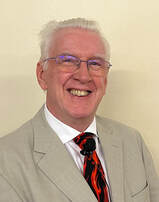
September 1st
John started by telling us he was going to raise our spirits by exercising our ‘chuckle muscles’. His talk entitled 'Going to Blazes' certainly did this. John had been a fireman since joining the service in 1963 at the age of 18 and retired in 2000. He worked in several brigades and rose to become Chief Fire Officer for Wiltshire. During his time as a fireman he encountered many different reactions to emergencies and told us of some of the more humorous ones. He mentioned the hydraulic cutters introduced to improve rescue in motor accidents. They were manufactured by a company called Hurst and firemen called the equipment a ‘hurst’. When rescuing one motorist he had a panic when he thought the firemen were calling for the hearse. He mentioned the rescue of animals including a giraffe at Longleat which could not stand up and the removal of a horse from a swimming pool of a very cold day. He had to get into the freezing pool to attach the lifting harness, for this he was awarded an RSPCA merit certificate. John spoke without notes or images but his stories were colourful and certainly lifted our spirits.
John started by telling us he was going to raise our spirits by exercising our ‘chuckle muscles’. His talk entitled 'Going to Blazes' certainly did this. John had been a fireman since joining the service in 1963 at the age of 18 and retired in 2000. He worked in several brigades and rose to become Chief Fire Officer for Wiltshire. During his time as a fireman he encountered many different reactions to emergencies and told us of some of the more humorous ones. He mentioned the hydraulic cutters introduced to improve rescue in motor accidents. They were manufactured by a company called Hurst and firemen called the equipment a ‘hurst’. When rescuing one motorist he had a panic when he thought the firemen were calling for the hearse. He mentioned the rescue of animals including a giraffe at Longleat which could not stand up and the removal of a horse from a swimming pool of a very cold day. He had to get into the freezing pool to attach the lifting harness, for this he was awarded an RSPCA merit certificate. John spoke without notes or images but his stories were colourful and certainly lifted our spirits.
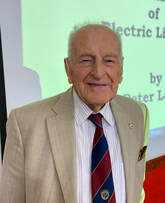
August 18th
Peter Lamb gave a very interesting illustrated talk on the 'History of Lighting'. He covered the development of the electric light from the early arc lamps of 1808 to the lamps of today – the LED. Humphrey Davey, who had spent some time in Bristol, did many of the early experiments at the Royal Institution in London, assisted by Michael Faraday. Although Davey did much of the work on gases, Faraday worked on the generator in 1831 and developments of the dynamo and the electric motor. The battery was also developed at this early time, with experiments taking place in France, Germany, Italy and the USA. The early lamps in the centre of Bristol were of the carbon rod system which was switched on daily until midnight when they were switched off, the two-rod system lasting for about 16 hours. They were a high maintenance AC and DC system, restricted to a small area. In 1881 William Siemens formed the Godalming 1st Public Electrical Generating Station, and gas-filled lamps were developed by Joseph Swan in the UK and Edison in the US as early carbonised fibre filament lamps. By 1881 the Savoy Theatre was lit by the system and Lord Armstrong, who supported Swan, electrified his house in the North of England. Osram used a metal filament as an improvement and by 1897 Walter Nerst developed a filament that glowed. Halogen lamps were beginning to be developed. Further developments were Mercury Vapour lamps by 1906 and by 1926 Compton had developed Sodium lamps, but fluorescent lighting can be traced back to Edison in 1896. The Compact Fluorescent Lamp (CFL) came in 1976, a very efficient system. The modern Light Emitting Diode (LED) came in various colours in 1968, and from work at the University of Illinois, a system which contained no gas but producing white light was developed. The LED works on a DC system, so contains up to 18 parts which convert AC to DC. The race is now on to produce an LED which works from AC directly, with no conversion. The development of lighting continues.
Peter Lamb gave a very interesting illustrated talk on the 'History of Lighting'. He covered the development of the electric light from the early arc lamps of 1808 to the lamps of today – the LED. Humphrey Davey, who had spent some time in Bristol, did many of the early experiments at the Royal Institution in London, assisted by Michael Faraday. Although Davey did much of the work on gases, Faraday worked on the generator in 1831 and developments of the dynamo and the electric motor. The battery was also developed at this early time, with experiments taking place in France, Germany, Italy and the USA. The early lamps in the centre of Bristol were of the carbon rod system which was switched on daily until midnight when they were switched off, the two-rod system lasting for about 16 hours. They were a high maintenance AC and DC system, restricted to a small area. In 1881 William Siemens formed the Godalming 1st Public Electrical Generating Station, and gas-filled lamps were developed by Joseph Swan in the UK and Edison in the US as early carbonised fibre filament lamps. By 1881 the Savoy Theatre was lit by the system and Lord Armstrong, who supported Swan, electrified his house in the North of England. Osram used a metal filament as an improvement and by 1897 Walter Nerst developed a filament that glowed. Halogen lamps were beginning to be developed. Further developments were Mercury Vapour lamps by 1906 and by 1926 Compton had developed Sodium lamps, but fluorescent lighting can be traced back to Edison in 1896. The Compact Fluorescent Lamp (CFL) came in 1976, a very efficient system. The modern Light Emitting Diode (LED) came in various colours in 1968, and from work at the University of Illinois, a system which contained no gas but producing white light was developed. The LED works on a DC system, so contains up to 18 parts which convert AC to DC. The race is now on to produce an LED which works from AC directly, with no conversion. The development of lighting continues.
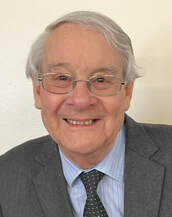
August 4th
Cyril Routledge entertained us with an interesting illustrated talk on 'Signs of the Times'. He opened with the ‘City & County of Bristol’ concrete signs situated on the boundaries of Bristol, pointing out that the County of Bristol came from a charter granted by Edward III in 1373 – a rare honour. Different signs for ‘School’ were shown and warning signs for horses, sheep, frogs or toads and deer were illustrated. Many of the early advertising signs brought back memories – many different ‘Coleman’s Mustard’, ‘Fry’s Chocolates’ and ‘Veno’s Cough Medicine’ signs were remembered by many in the audience. Cyril pointed out that railway premises and heritage railways were a good hunting ground for interesting signs. As well as the usual advertising signs, guides to ‘Ladies & Gentlemen’ and railway company signs, he illustrated a warning sign to deter trespassing on the railway, the penalty being 40 shillings or, failing payment, a month in gaol. A mileage post from the Great Western Railway was shown, with the quarter miles shown by strokes. Some newspaper signs were shown, namely ‘The People’, The Western Gazette’ and the now defunct ‘News of the World’ and some of the very interesting ones were the hand signs showing fingers pointing in the direction of a particular village or town. To add to the international flavour a German sign to a hospital – ‘Krankenhaus’ – was also included. A fascinating talk which highlighted many of the day-to-day sights of both modern and old signs over the years, which are often ignored, but nevertheless brought back many memories. It emphasised how important signs are in giving information and warnings to drivers, pedestrians and the general public.
Cyril Routledge entertained us with an interesting illustrated talk on 'Signs of the Times'. He opened with the ‘City & County of Bristol’ concrete signs situated on the boundaries of Bristol, pointing out that the County of Bristol came from a charter granted by Edward III in 1373 – a rare honour. Different signs for ‘School’ were shown and warning signs for horses, sheep, frogs or toads and deer were illustrated. Many of the early advertising signs brought back memories – many different ‘Coleman’s Mustard’, ‘Fry’s Chocolates’ and ‘Veno’s Cough Medicine’ signs were remembered by many in the audience. Cyril pointed out that railway premises and heritage railways were a good hunting ground for interesting signs. As well as the usual advertising signs, guides to ‘Ladies & Gentlemen’ and railway company signs, he illustrated a warning sign to deter trespassing on the railway, the penalty being 40 shillings or, failing payment, a month in gaol. A mileage post from the Great Western Railway was shown, with the quarter miles shown by strokes. Some newspaper signs were shown, namely ‘The People’, The Western Gazette’ and the now defunct ‘News of the World’ and some of the very interesting ones were the hand signs showing fingers pointing in the direction of a particular village or town. To add to the international flavour a German sign to a hospital – ‘Krankenhaus’ – was also included. A fascinating talk which highlighted many of the day-to-day sights of both modern and old signs over the years, which are often ignored, but nevertheless brought back many memories. It emphasised how important signs are in giving information and warnings to drivers, pedestrians and the general public.
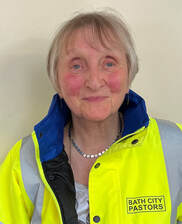
July 21st
Jenny Noakes came to us to tell us about the 'Bath City Pastors'. She started by saying a bit about her background as a nurse, married to a doctor. The Bath City Pastors started in 2008 and are volunteers from churches in and around Bath based at the Manvers Street Baptist Church. The Pastors have permission from the police and city council and undertake training before deployment. They come from many different walks of life but share a Christian faith. They patrol the centre of Bath each Friday and Saturday nights in teams of four from a total of 40 volunteers. Jenny explained the way they worked with radio contact and two way exchange of information to the Police and Bath City Marshals. The Pastors offer help, care and listening to mainly young people who can get intoxicated or drugged during their revels. They carry a rucksack with essential items to help including water, blankets, cereal bars and wet wipes. She mentioned two special items carried: Flip-flops, as many young girls take off their shoes when they start to hurt and there is always glass about, plus lollipops - useful to shut people up! Jenny spoke fluently without notes or visuals and told us many stories of her adventures as a Pastor; she clearly loves the activity.
Jenny Noakes came to us to tell us about the 'Bath City Pastors'. She started by saying a bit about her background as a nurse, married to a doctor. The Bath City Pastors started in 2008 and are volunteers from churches in and around Bath based at the Manvers Street Baptist Church. The Pastors have permission from the police and city council and undertake training before deployment. They come from many different walks of life but share a Christian faith. They patrol the centre of Bath each Friday and Saturday nights in teams of four from a total of 40 volunteers. Jenny explained the way they worked with radio contact and two way exchange of information to the Police and Bath City Marshals. The Pastors offer help, care and listening to mainly young people who can get intoxicated or drugged during their revels. They carry a rucksack with essential items to help including water, blankets, cereal bars and wet wipes. She mentioned two special items carried: Flip-flops, as many young girls take off their shoes when they start to hurt and there is always glass about, plus lollipops - useful to shut people up! Jenny spoke fluently without notes or visuals and told us many stories of her adventures as a Pastor; she clearly loves the activity.
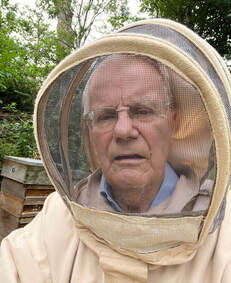
July 7th
At 10.05 our booked speaker rang to say she had a family problem and could not come to us. What to do? Wally stepped in with an impromptu talk about 'Bees'. He has been keeping bees for six years but is still learning. He covered the life cycle of a bee and how and why a new queen is made. Queens are made by the bees when either the old queen is failing or if the hive is too crowded and the bees decide to split and make a new family somewhere else. The bees select a newly laid egg and feed it special ‘Queen Jelly’ which then produces a new Queen. The virgin Queen bee goes on a mating flight and is mated with about 12- 15 drones (male bees) this mating gives her enough sperm to sustain the laying of fertilised eggs for the rest of her life, about three years. At peak times in the summer she can lay 2,000 eggs a day. Many other facts were presented to the listeners and a lively question session followed. Wally admitted the talk was ‘off the cuff’ and unstructured, he apologised but was pleased with the quality of the questions asked.
At 10.05 our booked speaker rang to say she had a family problem and could not come to us. What to do? Wally stepped in with an impromptu talk about 'Bees'. He has been keeping bees for six years but is still learning. He covered the life cycle of a bee and how and why a new queen is made. Queens are made by the bees when either the old queen is failing or if the hive is too crowded and the bees decide to split and make a new family somewhere else. The bees select a newly laid egg and feed it special ‘Queen Jelly’ which then produces a new Queen. The virgin Queen bee goes on a mating flight and is mated with about 12- 15 drones (male bees) this mating gives her enough sperm to sustain the laying of fertilised eggs for the rest of her life, about three years. At peak times in the summer she can lay 2,000 eggs a day. Many other facts were presented to the listeners and a lively question session followed. Wally admitted the talk was ‘off the cuff’ and unstructured, he apologised but was pleased with the quality of the questions asked.
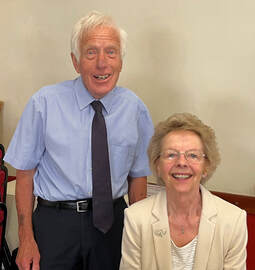
June 30th
We were wonderfully entertained by Tim Lewis and Sheila Furneau who told the tale of the 'Wind in the Willows' in a unique fashion. Tim started by telling us some of the history of the author Kenneth Grahame. Born in 1859 he became a successful man working for the Bank of England. He married at the age of 40 and had one son, Alastair, who was born blind in one eye and plagued by health problems throughout a short life. In 1908 Grahame took early retirement and moved with his wife and son to an old farmhouse in Berkshire where he used the bedtime stories he had told Alastair as a basis for the manuscript of The Wind in the Willows first published in 1908. Tim did not just read sections of the book but has rewritten the story and put his words to familiar songs which he sung, accompanies on the keyboard by Sheila. The story was illustrated by delightful drawing of Mole, Ratty, Toad and Badger in action. A very suitable talk for Ladies Day.
We were wonderfully entertained by Tim Lewis and Sheila Furneau who told the tale of the 'Wind in the Willows' in a unique fashion. Tim started by telling us some of the history of the author Kenneth Grahame. Born in 1859 he became a successful man working for the Bank of England. He married at the age of 40 and had one son, Alastair, who was born blind in one eye and plagued by health problems throughout a short life. In 1908 Grahame took early retirement and moved with his wife and son to an old farmhouse in Berkshire where he used the bedtime stories he had told Alastair as a basis for the manuscript of The Wind in the Willows first published in 1908. Tim did not just read sections of the book but has rewritten the story and put his words to familiar songs which he sung, accompanies on the keyboard by Sheila. The story was illustrated by delightful drawing of Mole, Ratty, Toad and Badger in action. A very suitable talk for Ladies Day.
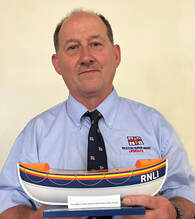
June 16th
Speaker Garry Bressington has been involved in the 'Royal National Lifeboat Institution' for over 30 years and his knowledge and enthusiasm reflected this. He started by impressing us that the RNLI is a charity and not government controlled relying on donations and legacies to cover running costs. The RNLI was founded in 1824 when Sir William Hillary decided that there was a need for a coordinated system to rescue mariners using purpose built boats. It was called the Shipwreck Society in those early days but changed the name to RNLI in 1854. Early lifeboat men were predominantly fishermen but now the majority are healthy civilian volunteers. They now have specially designed lifeboats ranging from inshore inflatable 3 man crafts to 56 foot rigid, self-righting craft with a crew of 6. There are 238 stations around the coast and rivers with a total of 445 lifeboats. Over 5,500 volunteers including 600 ladies handle the craft. In 1989 the pleasure steamer the Marchioness sank on the River Thames with 51 deaths and as a result the RNLI started an inland rescue service using specially designed boats that are water jet driven with open backs to facilitate retrieving drowning persons. In 2002 a new service was trialled with beach lifeguards manning potentially dangerous beaches. It was so successful that there are now over 1,500 lifeguards covering 250 beaches.
Speaker Garry Bressington has been involved in the 'Royal National Lifeboat Institution' for over 30 years and his knowledge and enthusiasm reflected this. He started by impressing us that the RNLI is a charity and not government controlled relying on donations and legacies to cover running costs. The RNLI was founded in 1824 when Sir William Hillary decided that there was a need for a coordinated system to rescue mariners using purpose built boats. It was called the Shipwreck Society in those early days but changed the name to RNLI in 1854. Early lifeboat men were predominantly fishermen but now the majority are healthy civilian volunteers. They now have specially designed lifeboats ranging from inshore inflatable 3 man crafts to 56 foot rigid, self-righting craft with a crew of 6. There are 238 stations around the coast and rivers with a total of 445 lifeboats. Over 5,500 volunteers including 600 ladies handle the craft. In 1989 the pleasure steamer the Marchioness sank on the River Thames with 51 deaths and as a result the RNLI started an inland rescue service using specially designed boats that are water jet driven with open backs to facilitate retrieving drowning persons. In 2002 a new service was trialled with beach lifeguards manning potentially dangerous beaches. It was so successful that there are now over 1,500 lifeguards covering 250 beaches.
June 2nd - Visit to Winterbourne Medieval Barn
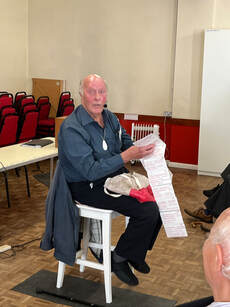
May 19th
Our planned speaker had called off due to illness but member Phil Scull was able to more than adequately fill the spot. Phil joined the police aged 26 and spent over 30 years serving the public. He kept all his work in his pocket book and eventually wrote a book entitled 'Recollections of a Proper Copper', published by his son. He started by describing his uniform and equipment including his truncheon, which he said he never drew in anger during his service. One day a postman reported a possible bomb in a parcel, he took it to the station where the bomb disposal squad was called in. His sergeant was not pleased when it turned out to be a Hornby clockwork motor. One time he was called when a lad stole a gas meter coin box. He caught up with him but the lad threw the money at him and ran away. Phil tracked him down to a local toilet; one stall was occupied so he knocked the door down only to be embarrassed by the occupant who was a man with a turban. Phil is obviously a natural story teller who kept us amused.
Our planned speaker had called off due to illness but member Phil Scull was able to more than adequately fill the spot. Phil joined the police aged 26 and spent over 30 years serving the public. He kept all his work in his pocket book and eventually wrote a book entitled 'Recollections of a Proper Copper', published by his son. He started by describing his uniform and equipment including his truncheon, which he said he never drew in anger during his service. One day a postman reported a possible bomb in a parcel, he took it to the station where the bomb disposal squad was called in. His sergeant was not pleased when it turned out to be a Hornby clockwork motor. One time he was called when a lad stole a gas meter coin box. He caught up with him but the lad threw the money at him and ran away. Phil tracked him down to a local toilet; one stall was occupied so he knocked the door down only to be embarrassed by the occupant who was a man with a turban. Phil is obviously a natural story teller who kept us amused.
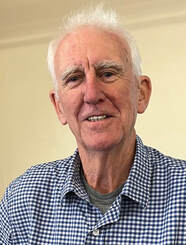
May 5th
We were pleased to welcome Mike Britton back to show us pictures and videos from the 'Swinging Sixties'. He covered a lot of ground from the depression when 67.000 jobs were lost during the restructuring of industry, to fashion and music. It was a time of protest; Anti-immigration demonstrations and the Londonderry riots in Ireland which eventually led to the signing of the Good Friday Agreement in 1998. The Vietnam War in which 60,000 Americans died. It was not all dreadful news. Fashion was a big thing in the 60’s: Carnaby Street ruled and dictated the length of ladies skirts. Lady Chatterley’s Lover was the subject of watershed obscenity trial and sold 200,000 copies on the first day of publication in the UK. We were delighted to be able to relive advertisements for long forgotten food and drinks, it was the time of the introduction of sliced white bread and pull tags on tine. Mike finished with a selection of videos from old TV shows, comedy classics and panel games. A wonderfully nostalgic hour.
We were pleased to welcome Mike Britton back to show us pictures and videos from the 'Swinging Sixties'. He covered a lot of ground from the depression when 67.000 jobs were lost during the restructuring of industry, to fashion and music. It was a time of protest; Anti-immigration demonstrations and the Londonderry riots in Ireland which eventually led to the signing of the Good Friday Agreement in 1998. The Vietnam War in which 60,000 Americans died. It was not all dreadful news. Fashion was a big thing in the 60’s: Carnaby Street ruled and dictated the length of ladies skirts. Lady Chatterley’s Lover was the subject of watershed obscenity trial and sold 200,000 copies on the first day of publication in the UK. We were delighted to be able to relive advertisements for long forgotten food and drinks, it was the time of the introduction of sliced white bread and pull tags on tine. Mike finished with a selection of videos from old TV shows, comedy classics and panel games. A wonderfully nostalgic hour.
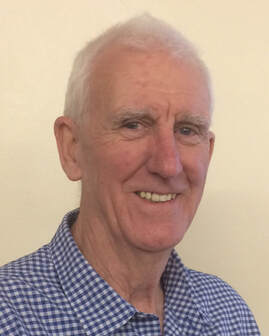
April 7th
Mike Britton is a frequent and welcome visitor to our group and he stepped in at short notice to replace a speaker who was taken ill. His subject was 'Secret Societies' (Fraternal Societies and Friendly Societies); a wide ranging talk on a complicated subject. He started by explaining how the medieval guilds came into being to protect crafts and ensure proper training and apprenticeships were managed. Fraternal Societies tend to get membership by invitation where like-minded people gather, they collected money for charitable purposes and support its members when needed. Friendly Societies on the other hand usually have a foundation of membership support, based on mutual savings, pensions and funding of the members in difficult times. Both society types were predominantly Christian based and only men were involved in the early days. The Fraternal Societies all tend to have a similar style of structure with three stages of membership with complicated rituals and regalia to make the members aware of the ‘special’ nature of membership. Many of the Fraternal Societies were formed in the 1700s but membership in most is declining now. Friendly Societies seem to have survived better with many, again founded in the 1700s, still in existence as mutual benefit companies with large capital funds. We heard of many organisations including Oddfellows, the Royal Antediluvian Order of Buffaloes, the Ku Klux Klan, the Orange Order and the Masons, a well-illustrated and fascinating talk.
Mike Britton is a frequent and welcome visitor to our group and he stepped in at short notice to replace a speaker who was taken ill. His subject was 'Secret Societies' (Fraternal Societies and Friendly Societies); a wide ranging talk on a complicated subject. He started by explaining how the medieval guilds came into being to protect crafts and ensure proper training and apprenticeships were managed. Fraternal Societies tend to get membership by invitation where like-minded people gather, they collected money for charitable purposes and support its members when needed. Friendly Societies on the other hand usually have a foundation of membership support, based on mutual savings, pensions and funding of the members in difficult times. Both society types were predominantly Christian based and only men were involved in the early days. The Fraternal Societies all tend to have a similar style of structure with three stages of membership with complicated rituals and regalia to make the members aware of the ‘special’ nature of membership. Many of the Fraternal Societies were formed in the 1700s but membership in most is declining now. Friendly Societies seem to have survived better with many, again founded in the 1700s, still in existence as mutual benefit companies with large capital funds. We heard of many organisations including Oddfellows, the Royal Antediluvian Order of Buffaloes, the Ku Klux Klan, the Orange Order and the Masons, a well-illustrated and fascinating talk.
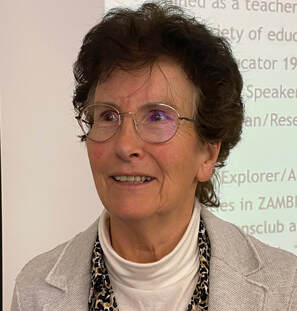
March 31st
An interesting illustrated talk entitled 'Life Before Tea Bags' was given by Elizabeth Rhodes. It was really a history lesson of life for rich and poor through the reigns of Victoria, Edward VII, George V, George VI and Elizabeth II, a period from 1889 to 1953, although the tea bag was first used in 1905, but obviously not in the numbers in use later. She started with examples of Leisure Centres in the early years where tea was drunk by the well-off population, there being over 200 such centres in London alone. Later came the Twinnings tea and coffee shops, and tea became a commodity drunk by the population as a whole. The Boer Wars, WWI and WW2 were covered and the ways in which they had an effect on social mobility. Women came from largely working in service to working in munitions factories, buses and other services, which led to later demands for the vote and equal pay. Also covered were the General Strike, the effects of radio and television and other social changes all illustrated by photos of the rich, the poor, kings and queens and photographs of her own family over the years. A thoroughly interesting talk.
An interesting illustrated talk entitled 'Life Before Tea Bags' was given by Elizabeth Rhodes. It was really a history lesson of life for rich and poor through the reigns of Victoria, Edward VII, George V, George VI and Elizabeth II, a period from 1889 to 1953, although the tea bag was first used in 1905, but obviously not in the numbers in use later. She started with examples of Leisure Centres in the early years where tea was drunk by the well-off population, there being over 200 such centres in London alone. Later came the Twinnings tea and coffee shops, and tea became a commodity drunk by the population as a whole. The Boer Wars, WWI and WW2 were covered and the ways in which they had an effect on social mobility. Women came from largely working in service to working in munitions factories, buses and other services, which led to later demands for the vote and equal pay. Also covered were the General Strike, the effects of radio and television and other social changes all illustrated by photos of the rich, the poor, kings and queens and photographs of her own family over the years. A thoroughly interesting talk.
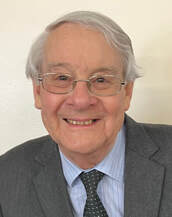
March 17th
A life on the ocean wave was our enjoyment when Cyril Routley gave his talk entitled Life On Board the SS Great Britain. He started with a short history of the building and use of the ship from the launch in 1843 to the return to Bristol in 1970. Cyril has made a study of the diaries books and letters of passengers who sailed on the SS Great Britain to Australia. They tell a fascinating story. One of the main impressions of the talk was the great difference of experiences between the classes of passengers. Those in first class enjoyed spacious accommodation and fine dining. Steerage passengers did not enjoy the journey! The ship had a line on deck to separate the classes. First class had about 100 ft of deck space for 70 passengers and the other 500 passengers has 300 ft. What made the talk so interesting was the ‘personalisation’ of the stories with passenger names and details linked to the events described. The captain arranged religious services on board and any travelling minister was offered an upgrade in class in return for holding the services. On one voyage there were 5 nuns on board and they visited 300 Irish labourers to offer comfort and services. Towards the end of each voyage the captain had all crew were ‘hands on deck’ for a great clean-up of the vessel to ensure it presented as fine a spectacle as possible to the spectators. Cyril’s talk and images gave us a fine impression of life on board the SS Great Britain.
A life on the ocean wave was our enjoyment when Cyril Routley gave his talk entitled Life On Board the SS Great Britain. He started with a short history of the building and use of the ship from the launch in 1843 to the return to Bristol in 1970. Cyril has made a study of the diaries books and letters of passengers who sailed on the SS Great Britain to Australia. They tell a fascinating story. One of the main impressions of the talk was the great difference of experiences between the classes of passengers. Those in first class enjoyed spacious accommodation and fine dining. Steerage passengers did not enjoy the journey! The ship had a line on deck to separate the classes. First class had about 100 ft of deck space for 70 passengers and the other 500 passengers has 300 ft. What made the talk so interesting was the ‘personalisation’ of the stories with passenger names and details linked to the events described. The captain arranged religious services on board and any travelling minister was offered an upgrade in class in return for holding the services. On one voyage there were 5 nuns on board and they visited 300 Irish labourers to offer comfort and services. Towards the end of each voyage the captain had all crew were ‘hands on deck’ for a great clean-up of the vessel to ensure it presented as fine a spectacle as possible to the spectators. Cyril’s talk and images gave us a fine impression of life on board the SS Great Britain.
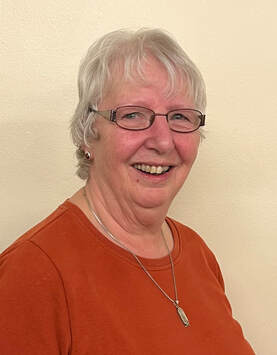
March 3rd
Our speaker Sue Parsons was a most persuasive speaker when telling us about the Winterbourne Medieval Barn. She started by explaining why the barn was so important. Most medieval barns were built by churches and monasteries to collect and store grain collected as tithes but Winterbourne is believed to be the only surviving example of a medieval barn of this size that was built and used by the lord of the manor, Sir Thomas de Bradeston, rather than by the church. It was built in 1342 and used as an agricultural facility until the 1990’s but it was in a very poor state. In 1997 it was purchased by the local authority and a new roof installed. Winterbourne Medieval Barn Trust was formed and in 2016 obtained a Heritage Lottery Grant of £1.8 million. Since then major refurbishment has taken place and it is now a flourishing local community centre with many activities and events. Clearly the barn is an enthusiasm for Sue and she ‘sold’ it to us well with an invitation to visit the web site at www.winterbournebarn.org.uk to see what is on offer.
Our speaker Sue Parsons was a most persuasive speaker when telling us about the Winterbourne Medieval Barn. She started by explaining why the barn was so important. Most medieval barns were built by churches and monasteries to collect and store grain collected as tithes but Winterbourne is believed to be the only surviving example of a medieval barn of this size that was built and used by the lord of the manor, Sir Thomas de Bradeston, rather than by the church. It was built in 1342 and used as an agricultural facility until the 1990’s but it was in a very poor state. In 1997 it was purchased by the local authority and a new roof installed. Winterbourne Medieval Barn Trust was formed and in 2016 obtained a Heritage Lottery Grant of £1.8 million. Since then major refurbishment has taken place and it is now a flourishing local community centre with many activities and events. Clearly the barn is an enthusiasm for Sue and she ‘sold’ it to us well with an invitation to visit the web site at www.winterbournebarn.org.uk to see what is on offer.
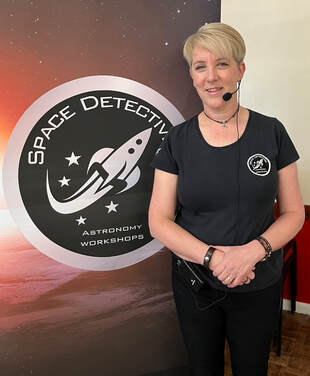
Feb 17th
Jo Richardson is a “Space Detective”. She started a company called ‘Space Detectives’ in 2013 and spends most of her time in schools encouraging and educating children in the mysteries of space. Her talk was entitled Our Place in Space. She did not treat us as children but still managed to instil a wonder in the vastness of space. An enthusiastic speaker with a detailed knowledge of her subject she kept us enthralled during her talk. It covered the subject from the beginnings of planets and galaxies to an explanation of the relative size and position of the earth in our solar system. The history of astronomy was covered from the earliest examination of the moon by telescope to the recent launching of the James Webb space telescope and the information it is hoped it will provide.
Jo Richardson is a “Space Detective”. She started a company called ‘Space Detectives’ in 2013 and spends most of her time in schools encouraging and educating children in the mysteries of space. Her talk was entitled Our Place in Space. She did not treat us as children but still managed to instil a wonder in the vastness of space. An enthusiastic speaker with a detailed knowledge of her subject she kept us enthralled during her talk. It covered the subject from the beginnings of planets and galaxies to an explanation of the relative size and position of the earth in our solar system. The history of astronomy was covered from the earliest examination of the moon by telescope to the recent launching of the James Webb space telescope and the information it is hoped it will provide.
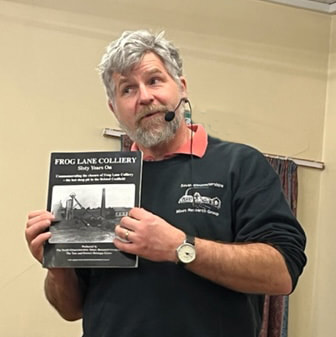
Feb 3rd
David Hardwick suffered a speaker's worst nightmare when his equipment failed to upload his PowerPoint presentation. However we have never seen such a magnificent recovery. His original talk was to have been "60 years of change in the Bristol Coalfields". Without illustrations he proceeded to give us a masterly talk on Coal, Stone and Gold Mining through the ages. His command of the subject ranged from Bristol coalfields, geology, the development of the Newton engine, the life of Handel Cossham and how religion and mining worked together. David is a member of the South Gloucester Mine Research Group and his enthusiasm and knowledge were a pleasure to see and hear.
David Hardwick suffered a speaker's worst nightmare when his equipment failed to upload his PowerPoint presentation. However we have never seen such a magnificent recovery. His original talk was to have been "60 years of change in the Bristol Coalfields". Without illustrations he proceeded to give us a masterly talk on Coal, Stone and Gold Mining through the ages. His command of the subject ranged from Bristol coalfields, geology, the development of the Newton engine, the life of Handel Cossham and how religion and mining worked together. David is a member of the South Gloucester Mine Research Group and his enthusiasm and knowledge were a pleasure to see and hear.
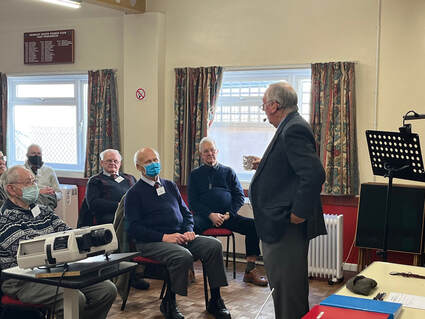
Jan 20th
Gary Gowens told us in great detail the story of how the Roman Navy supported and allowed the Roman empire to expand into Britain and stay there for over 400 years. His command of the subject was impressive and he was able to answer many questions without referring to notes.
Gary Gowens told us in great detail the story of how the Roman Navy supported and allowed the Roman empire to expand into Britain and stay there for over 400 years. His command of the subject was impressive and he was able to answer many questions without referring to notes.
During the one brief relaxation of the Covid restrictions we were able to fit in one social event...
Cream Tea at Little Nannies Cafe - June 17th 2021
We have been holding a weekly Virtual meeting on Zoom since April 2020
Here are screen shots taken from some of them
Cream Tea at Little Nannies Cafe - August 27th
click to cycle show
Picnic in Page Park August 19th 2020
Christmas Lunch at Chippng Sodbury Golf Club
A visit from Bristol Zoo volunteers
Past President Peter Blackmore installing President Eric Arnold on October 17th 2019
Visit to Kings Weston House - August 29th 2019
Guided by the owner Norman Routledge
Click 'Play' to see slide show
Guided by the owner Norman Routledge
Click 'Play' to see slide show
May 30th - Ladies Day
Bristol Docks with the Kingswood Y's Men's Club
Click 'Play' to see the slide show
Bristol Docks with the Kingswood Y's Men's Club
Click 'Play' to see the slide show
We enjoyed a trip to London with the Kingswood Y's Men's Club
Visiting the Royal Mail underground 'Mail Rail' and then a flight on the Emerite's cable car over the Thames at Greenwich
Click 'Play' to see the slide show
Visiting the Royal Mail underground 'Mail Rail' and then a flight on the Emerite's cable car over the Thames at Greenwich
Click 'Play' to see the slide show
Visit to Cardiff March 2nd
November 29th visit to Oakham Treasures
Click on the image to scroll through the pictures full size.
Click on the image to scroll through the pictures full size.
Abdominal Aortic Aneurysm Screening
Click to see full image
Click to see full image
The Insallation Lunch at BAWA - Friday October 26th
Annual General Meeting October 18th 2018
Examining items from John Bates's collection on June 21st
Visit to Almondsbury Garden Centre - May 31st
Pictures from the Bath College Lunch May 15th 2018
Click on an image to see full size
Click on an image to see full size
Pictures from the Spring Lunch April 13th 2018
Click on an image to see full size
Click on an image to see full size
Visit to Aerospace Bristol - March 22nd 2018
Click 'Play' to see slide show
Click 'Play' to see slide show
President Peter Blackmore welcomes new member John Morris
Click on an image to see full size
Click on an image to see full size
Visit to Almondsbury Garden Centre - December 7th
Visit to Avon Valley Railway for Lunch - August 31st
Lunch at the Grove Restaurant, Weston Super Mare College -May 19th
Talk by the Almondsbury Garden Centre - March 30th
Click Play to see the slide show
Click Play to see the slide show
Visit to the Royal Mint at Llantrisant - February 15th
